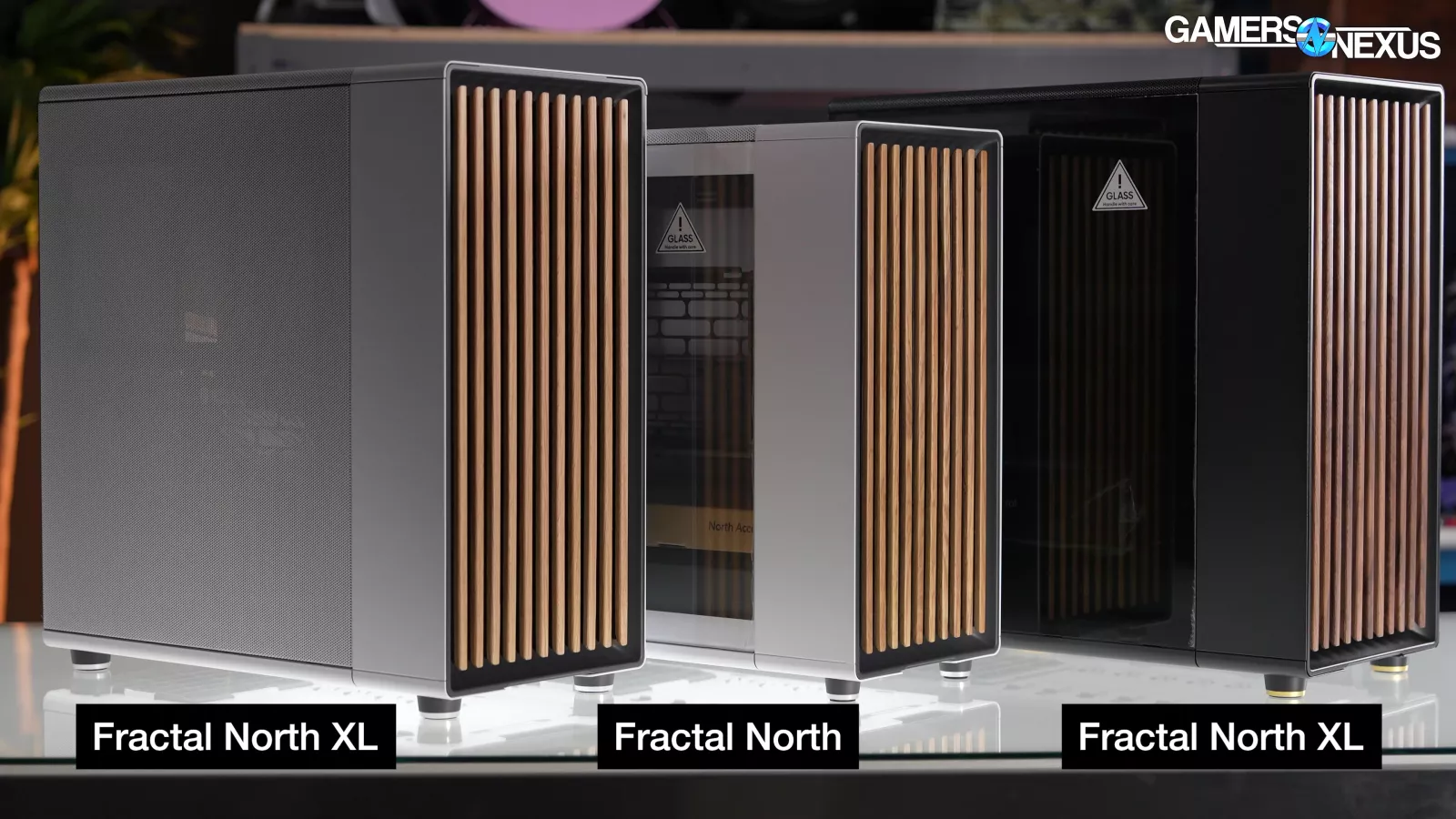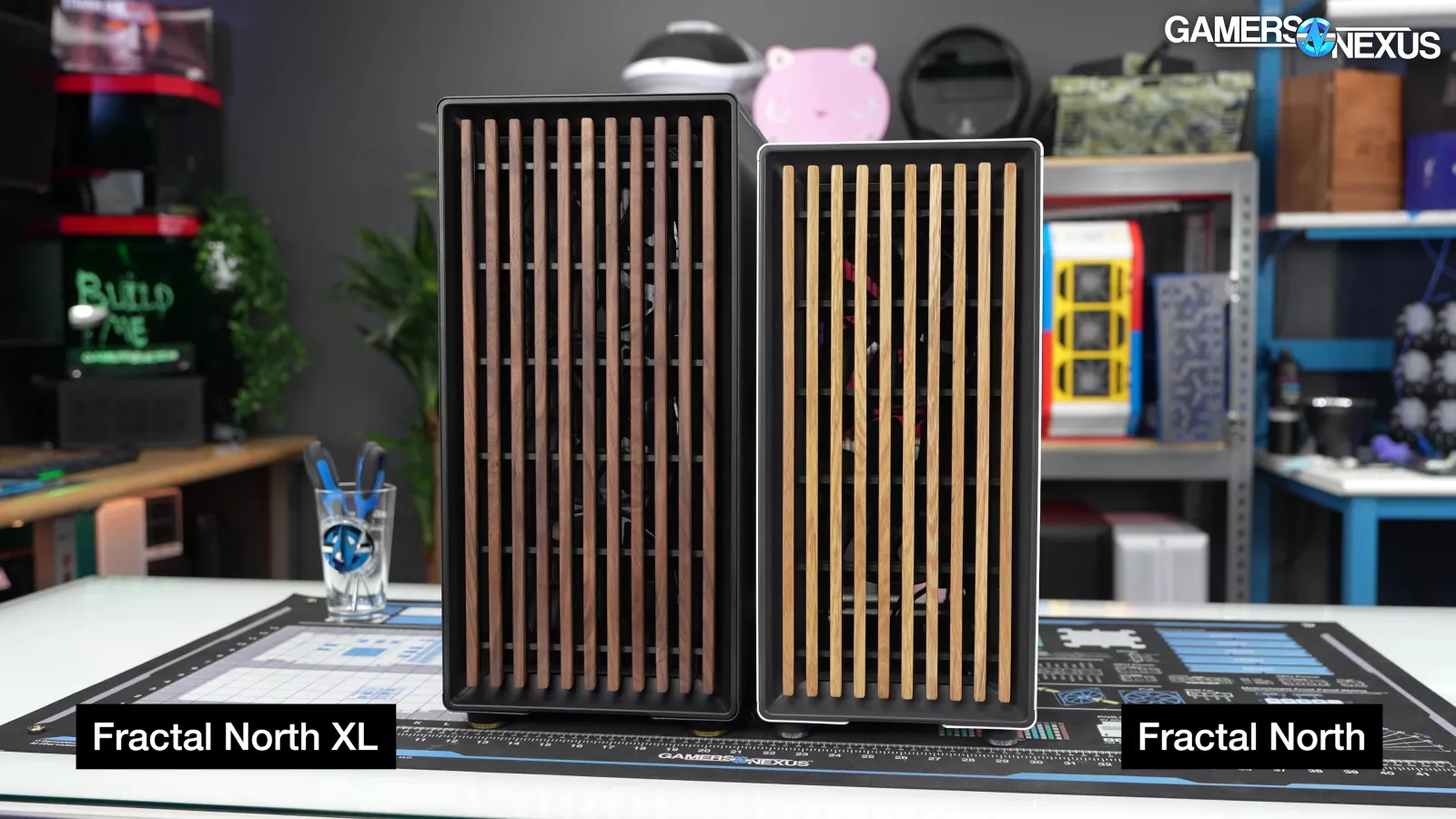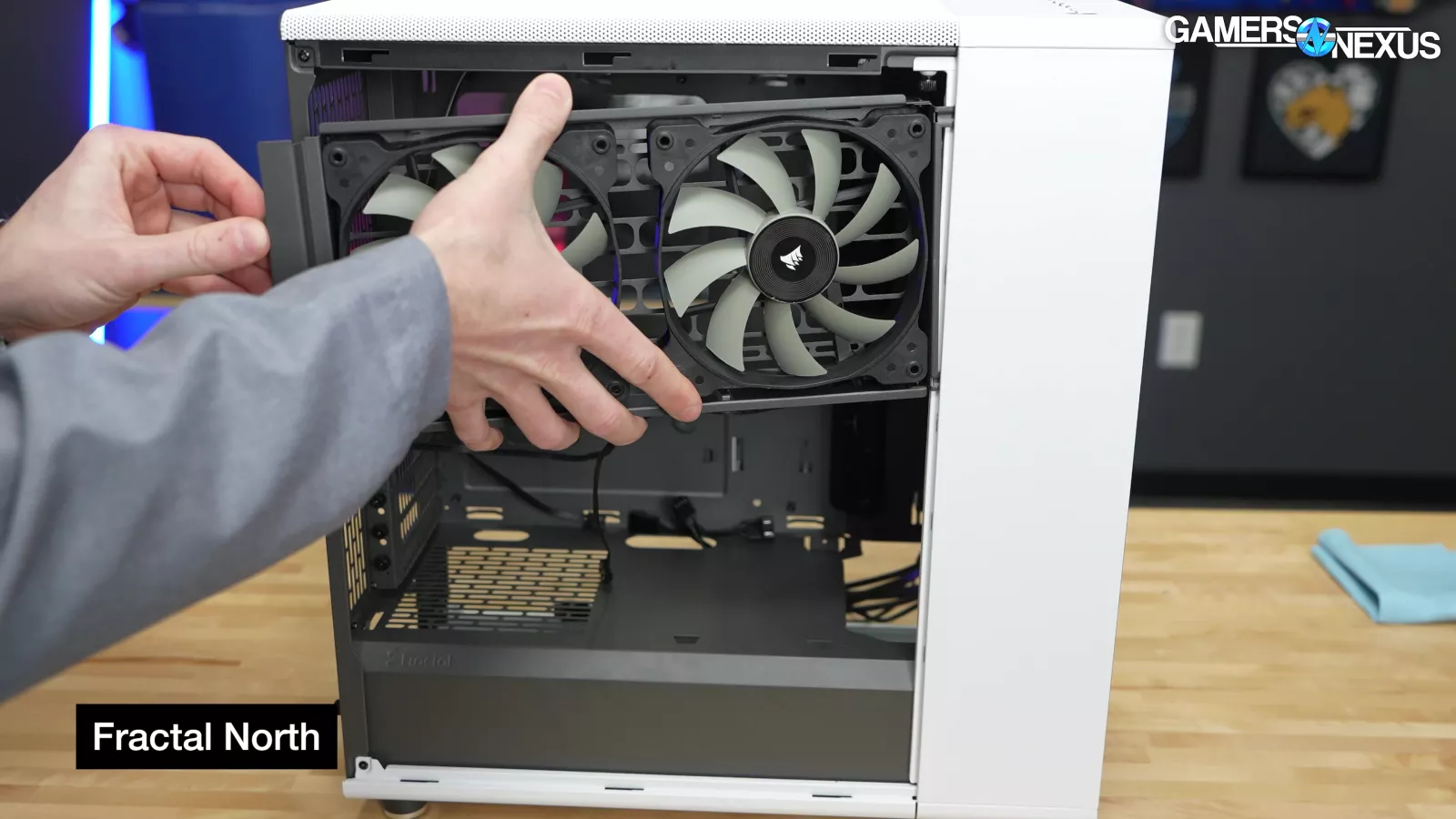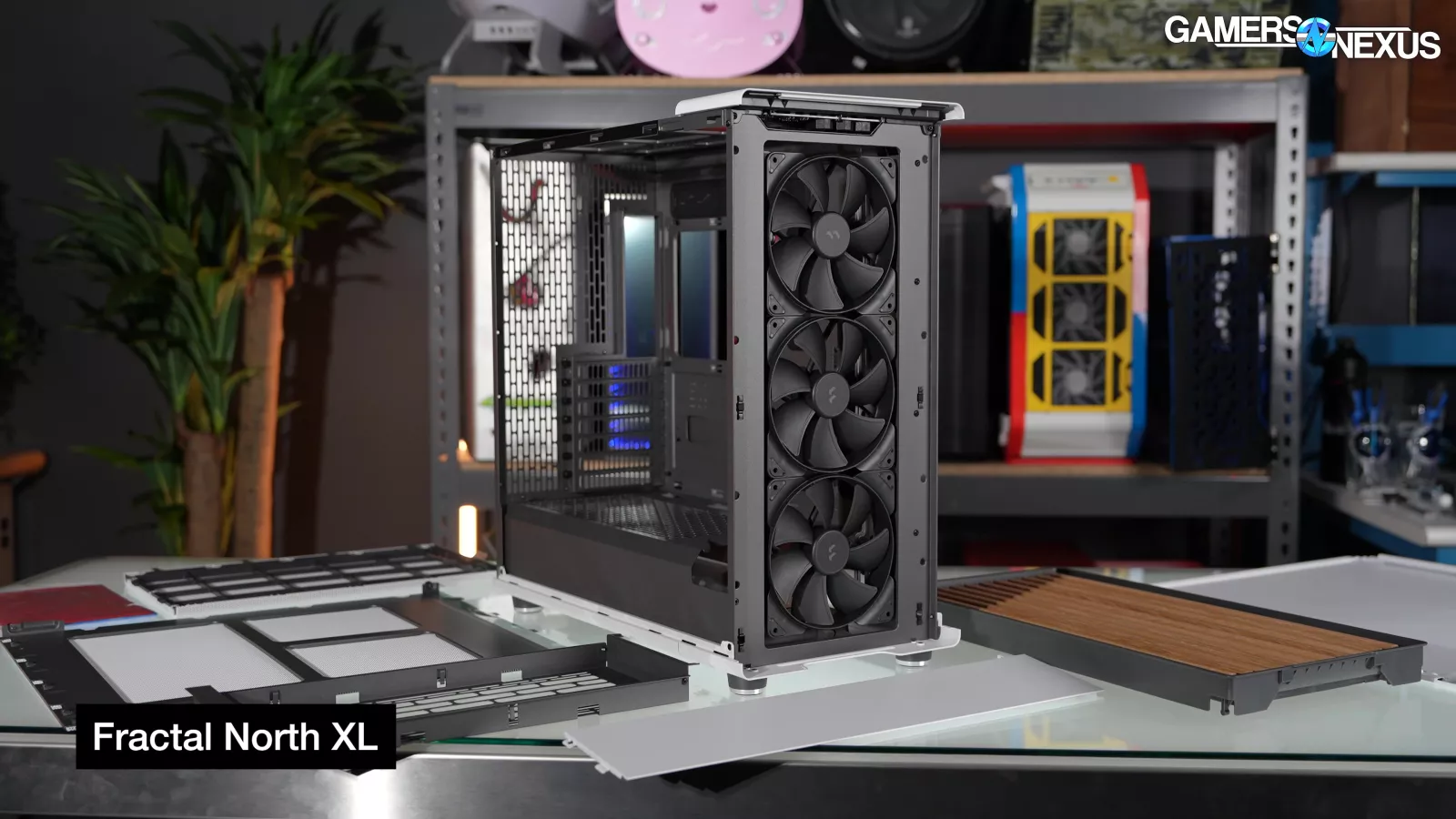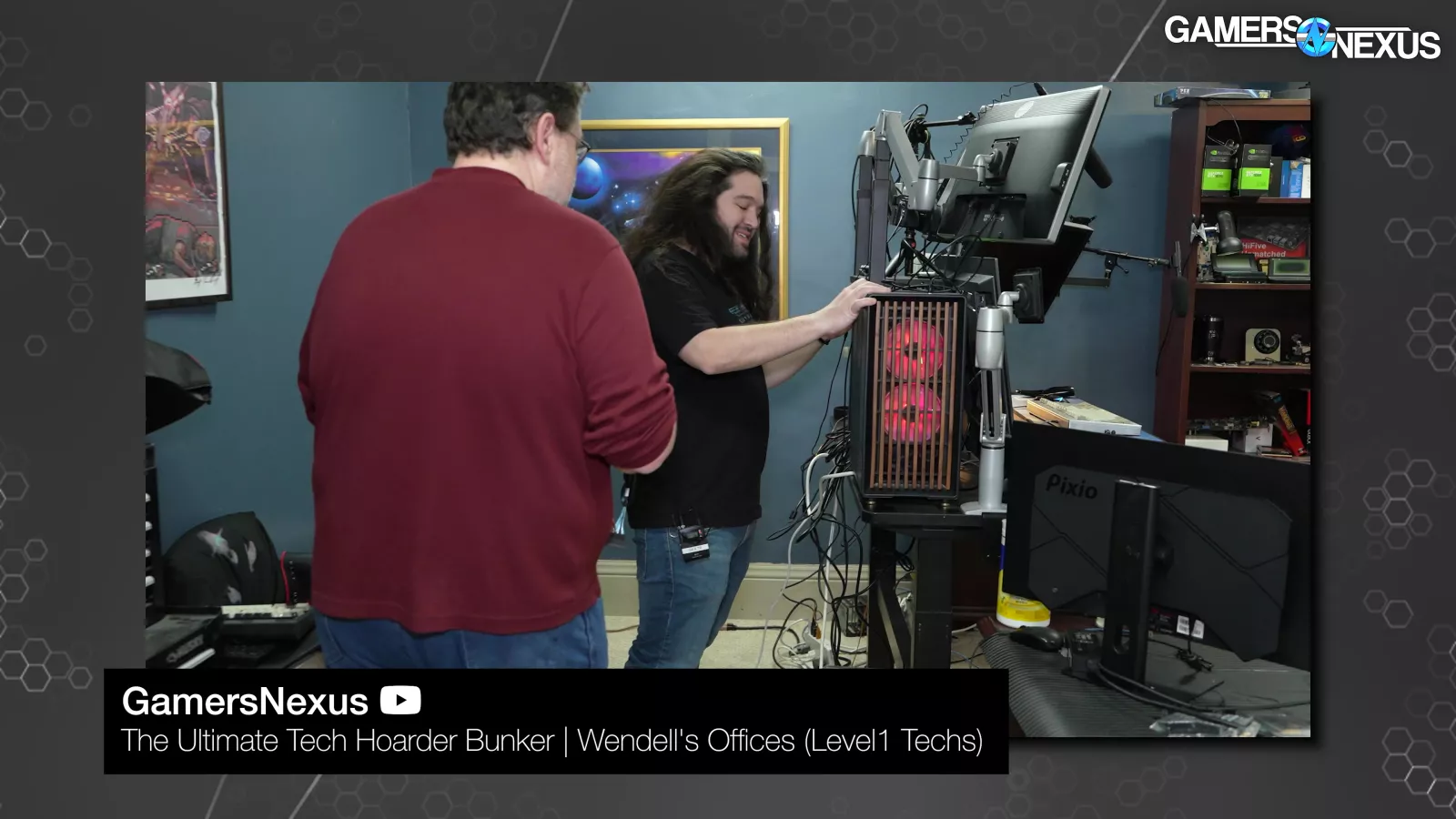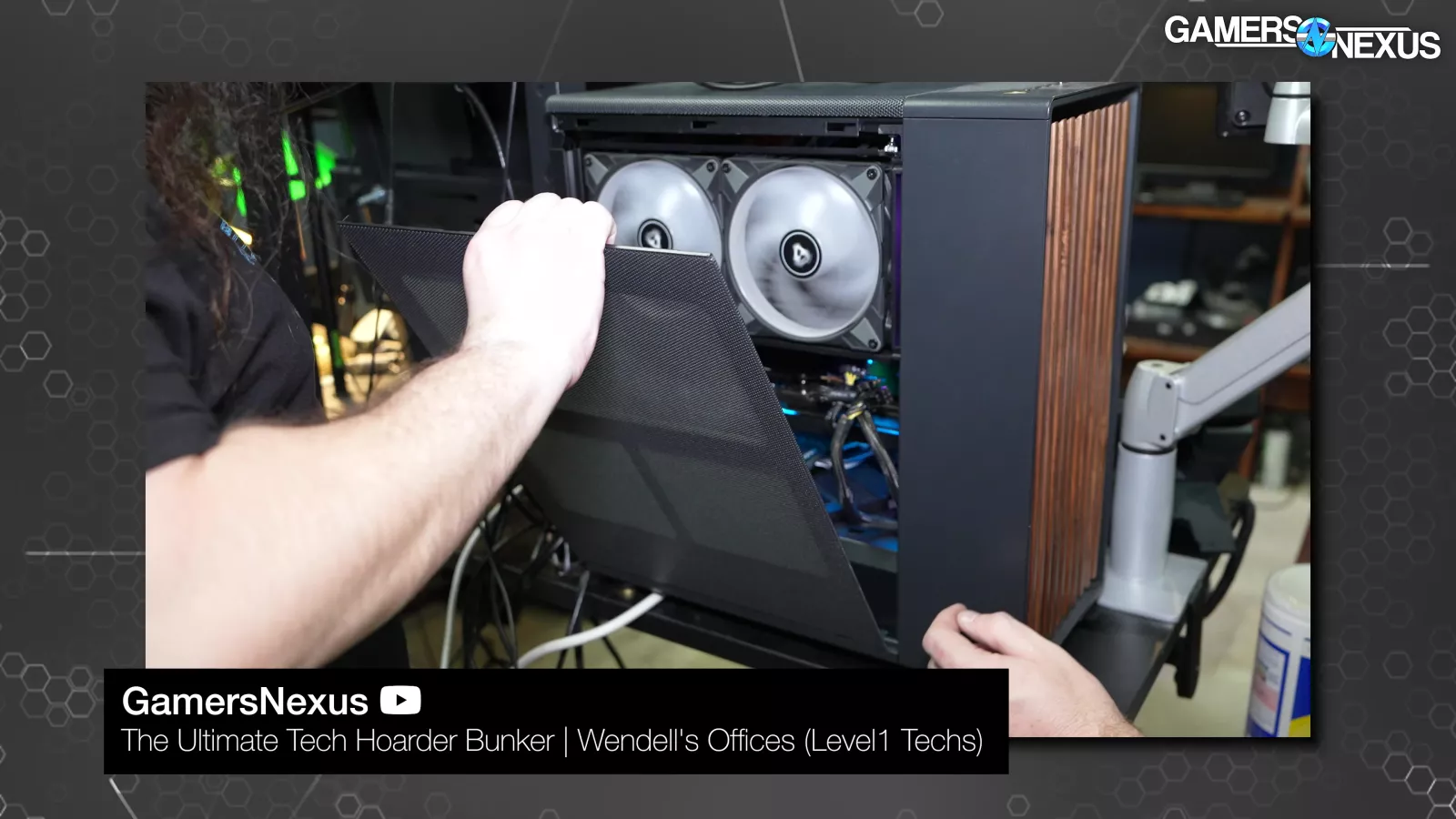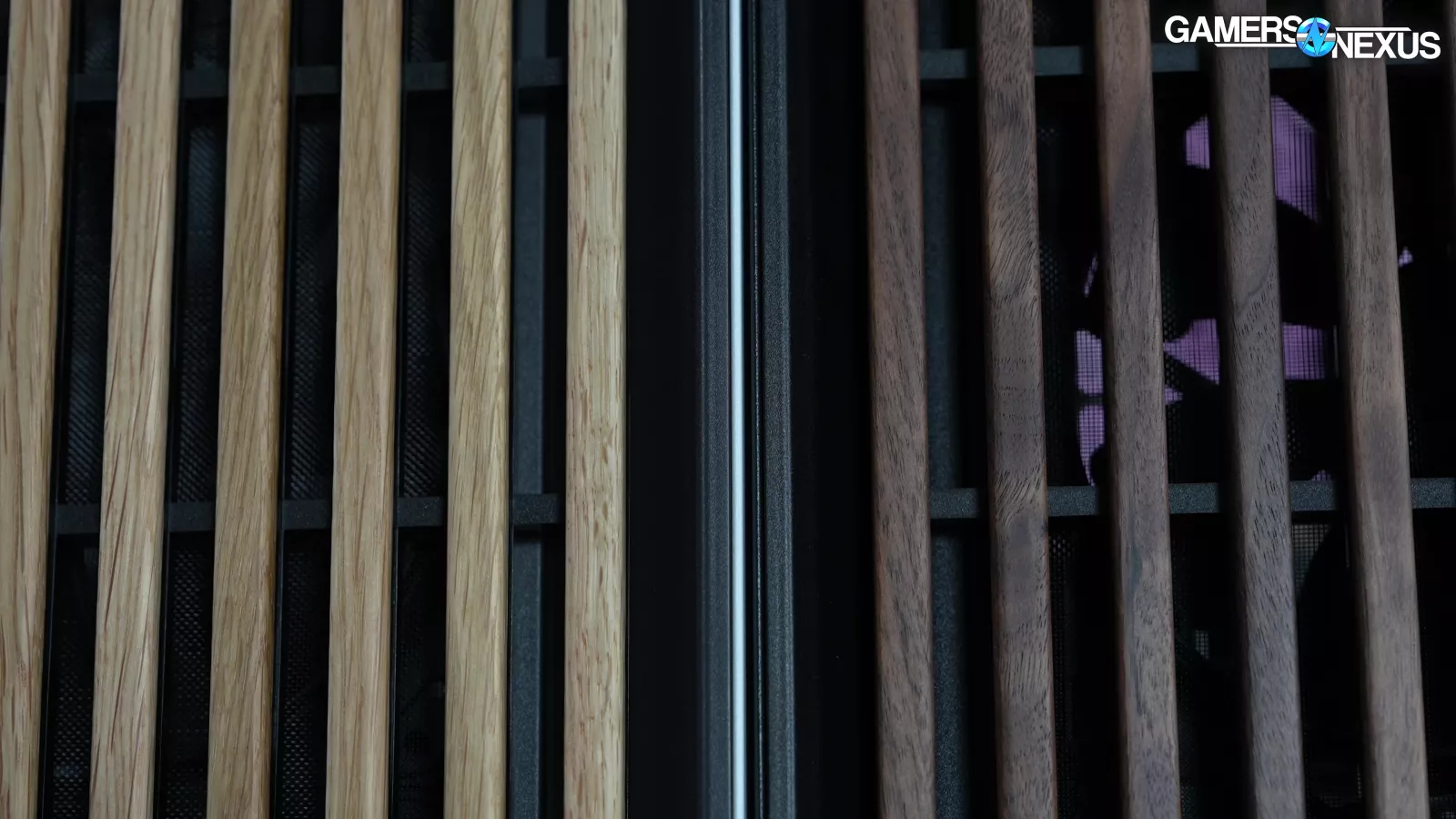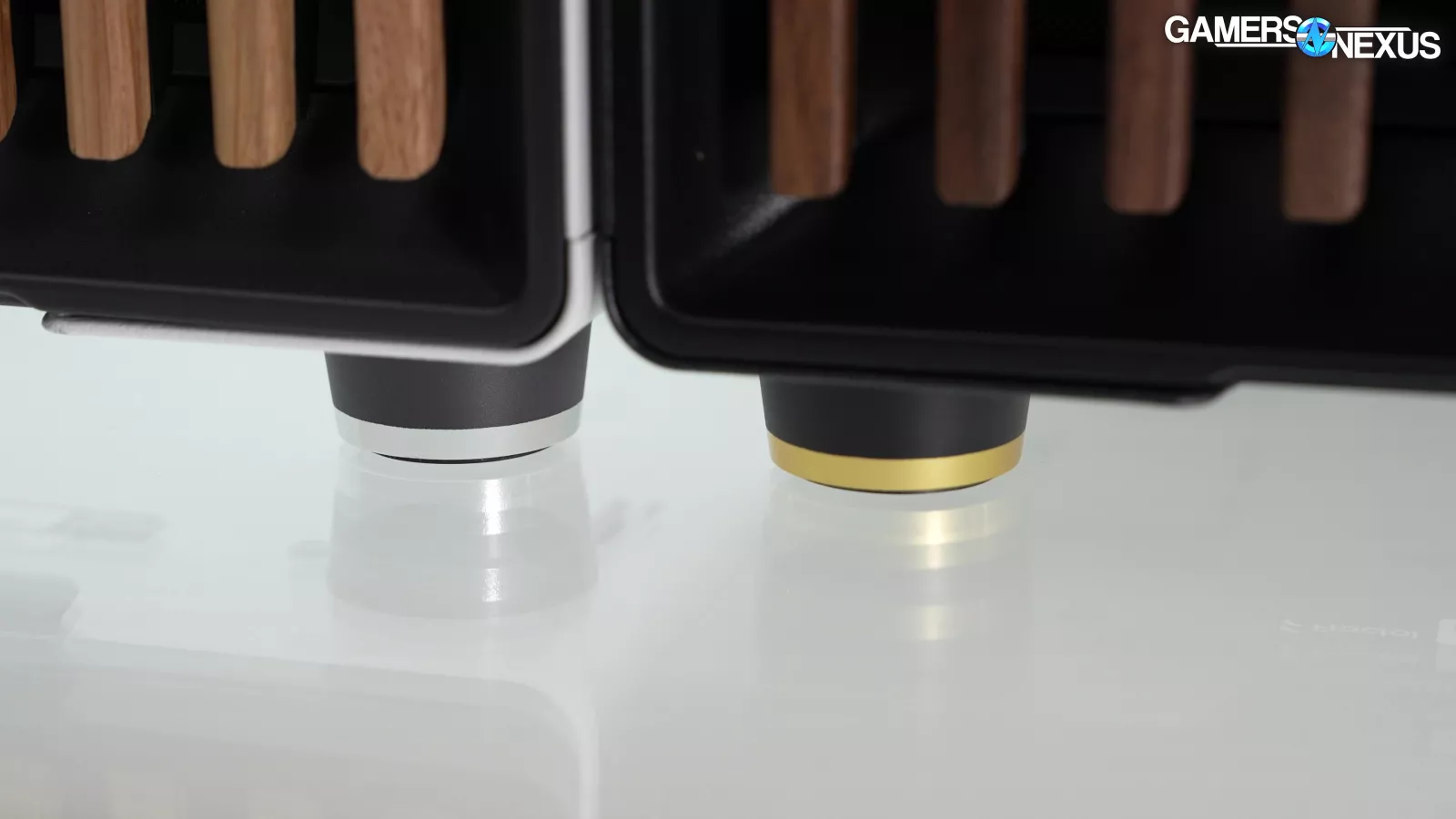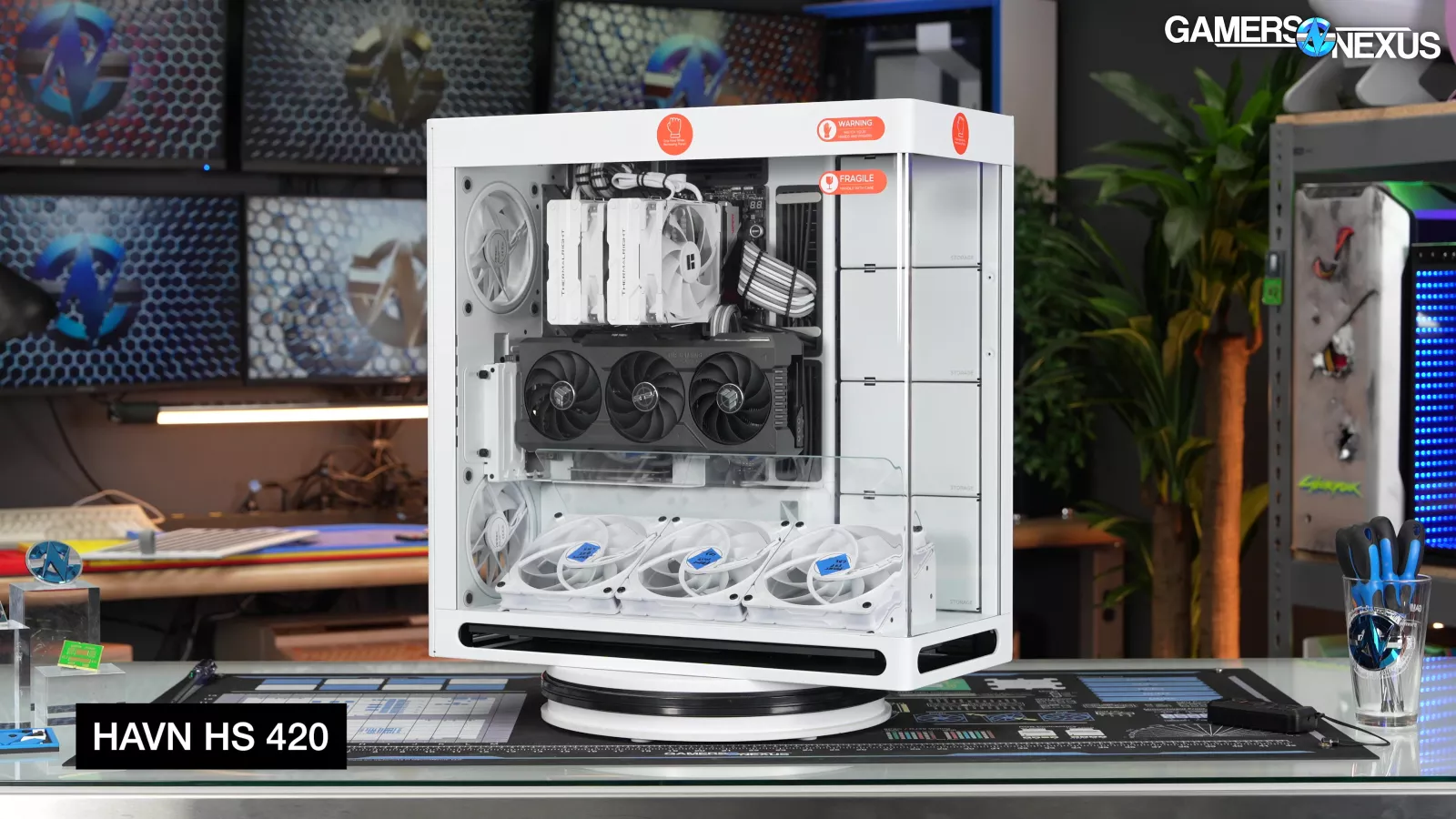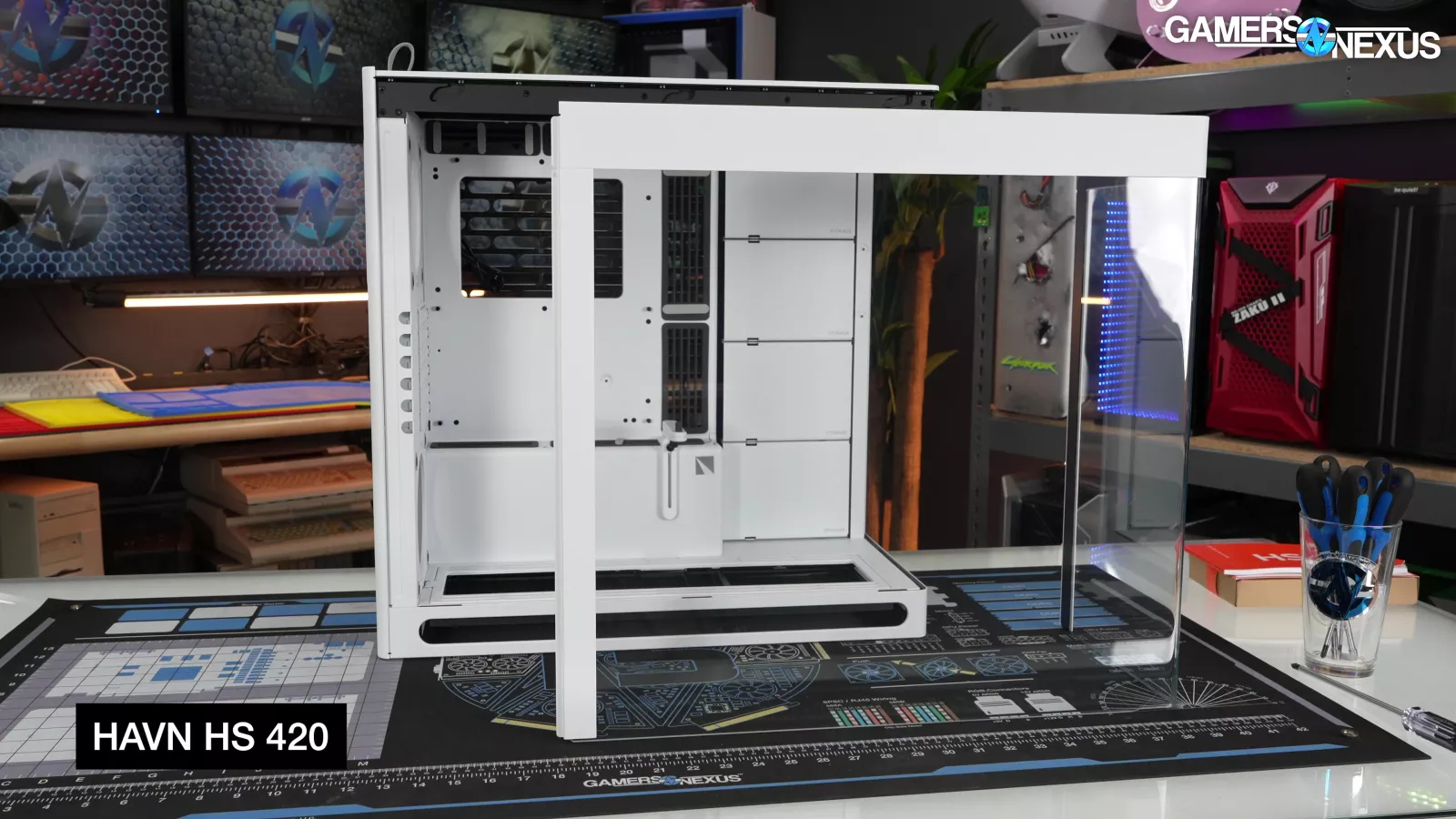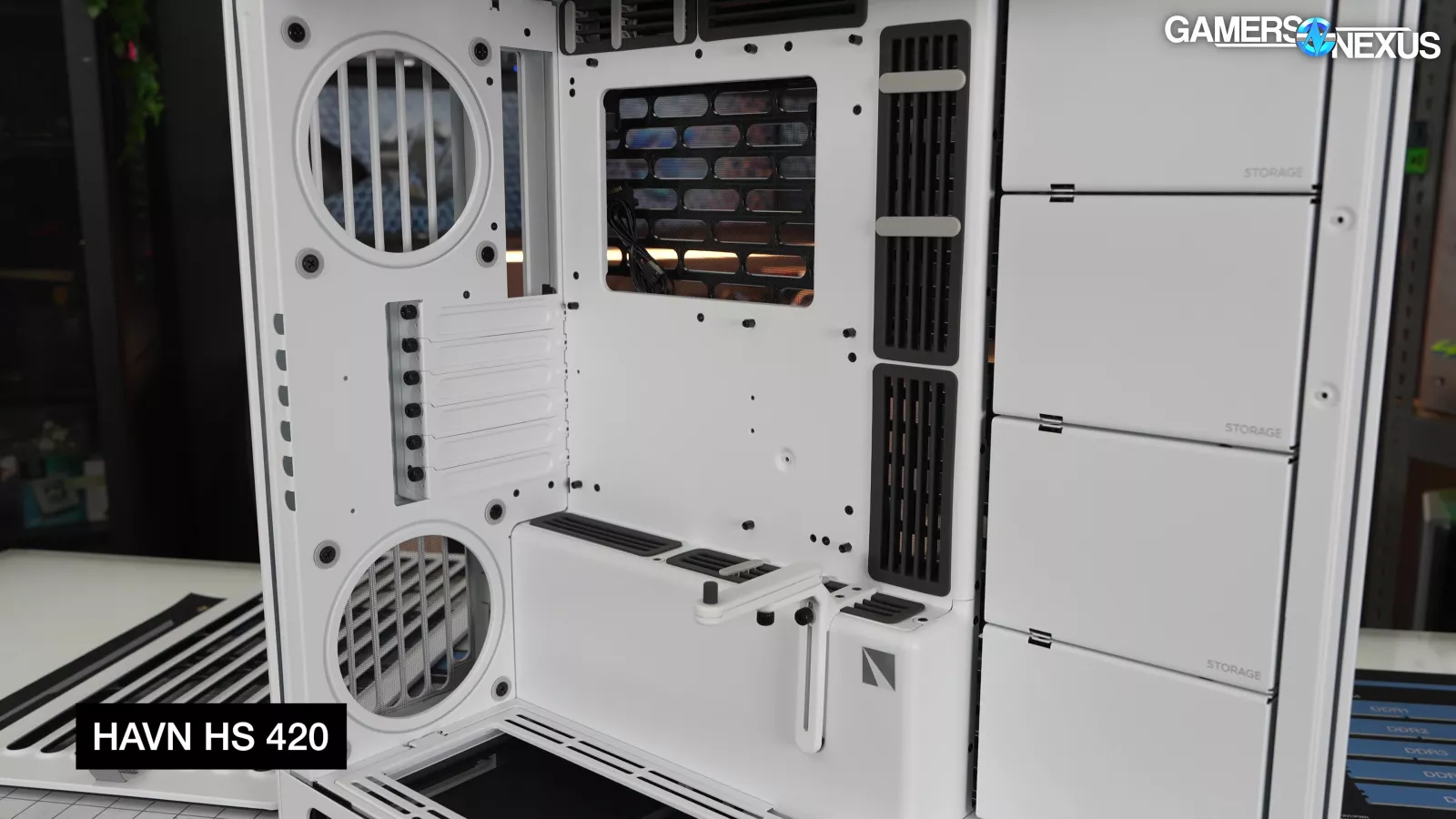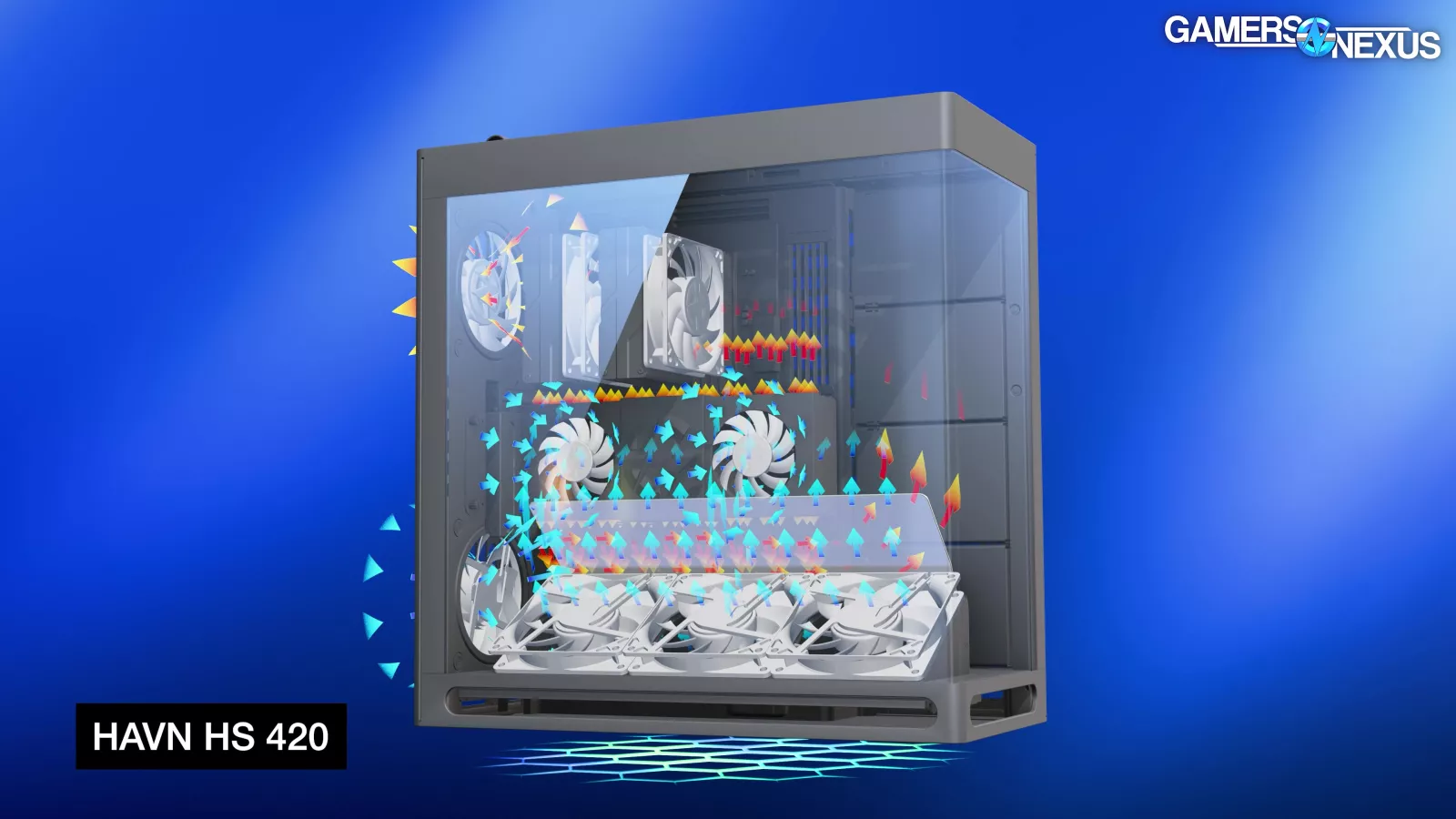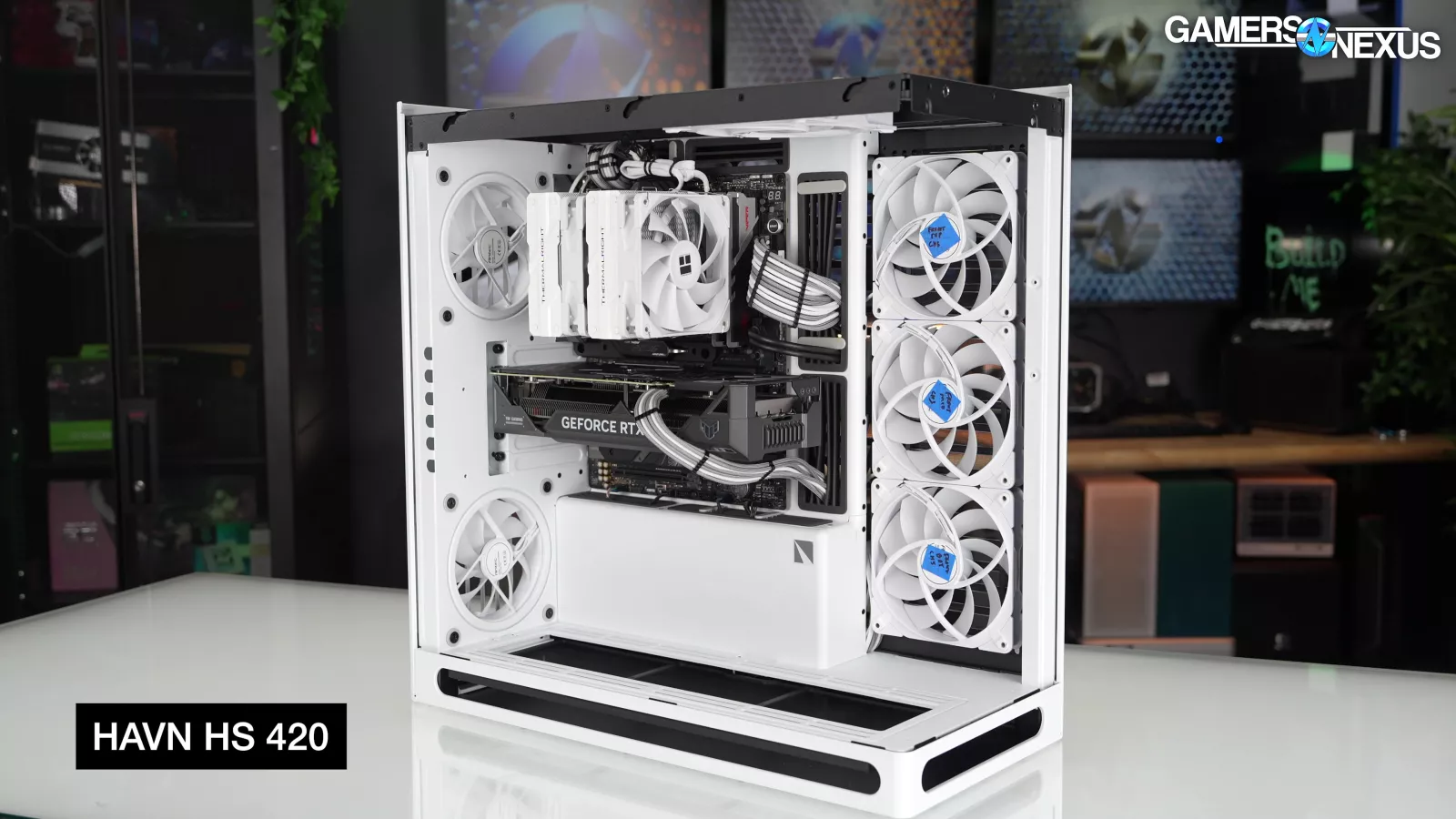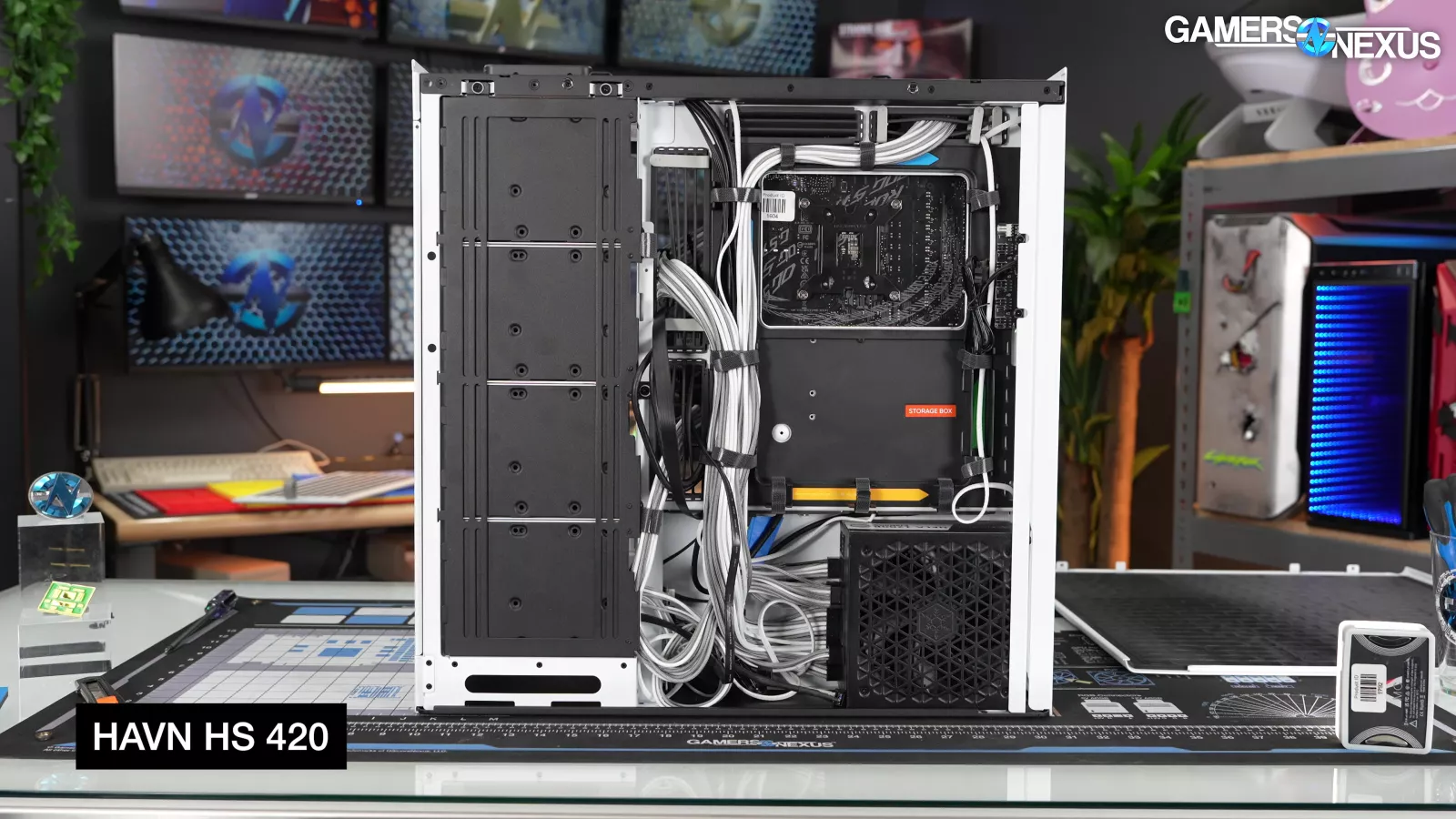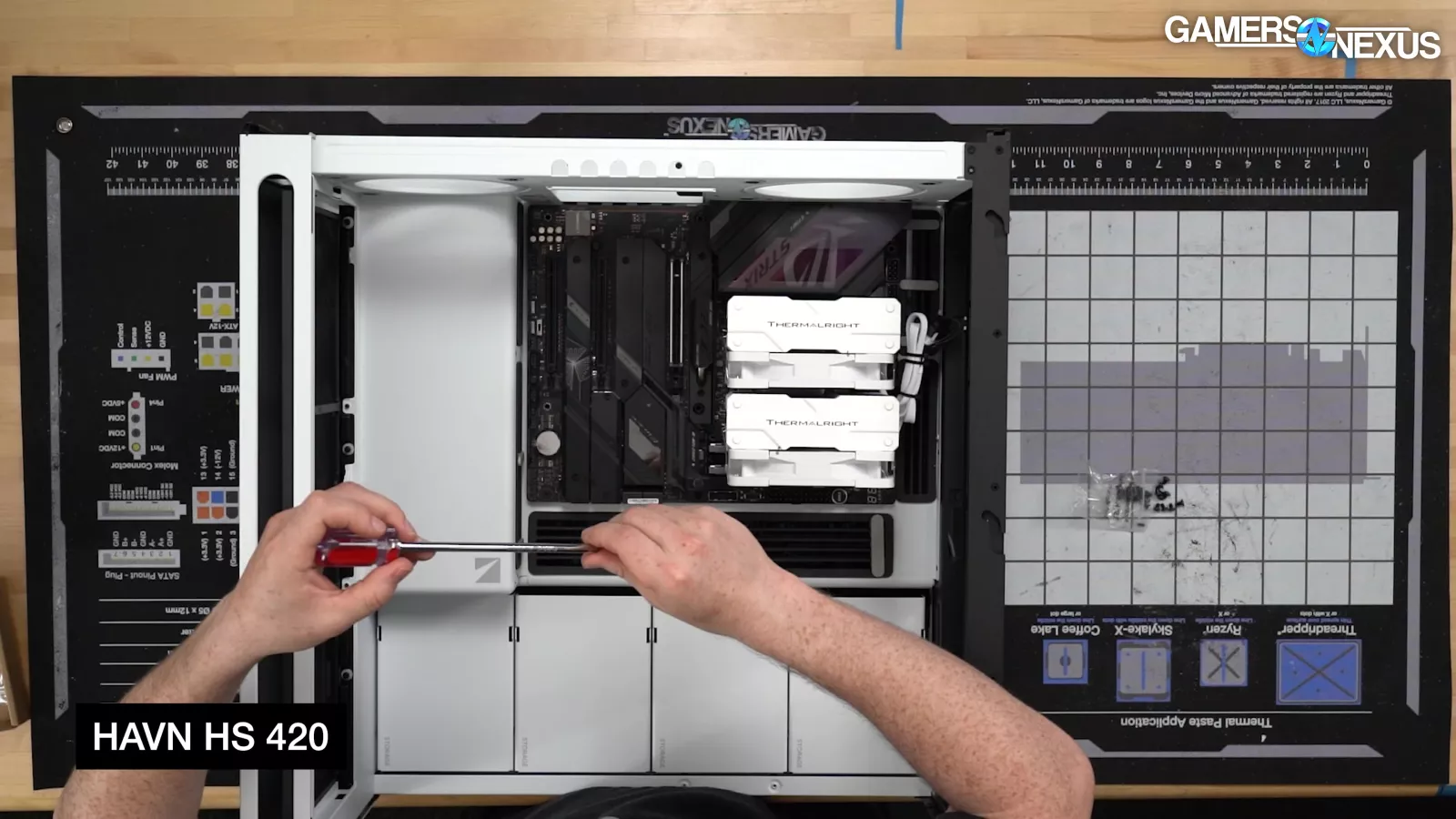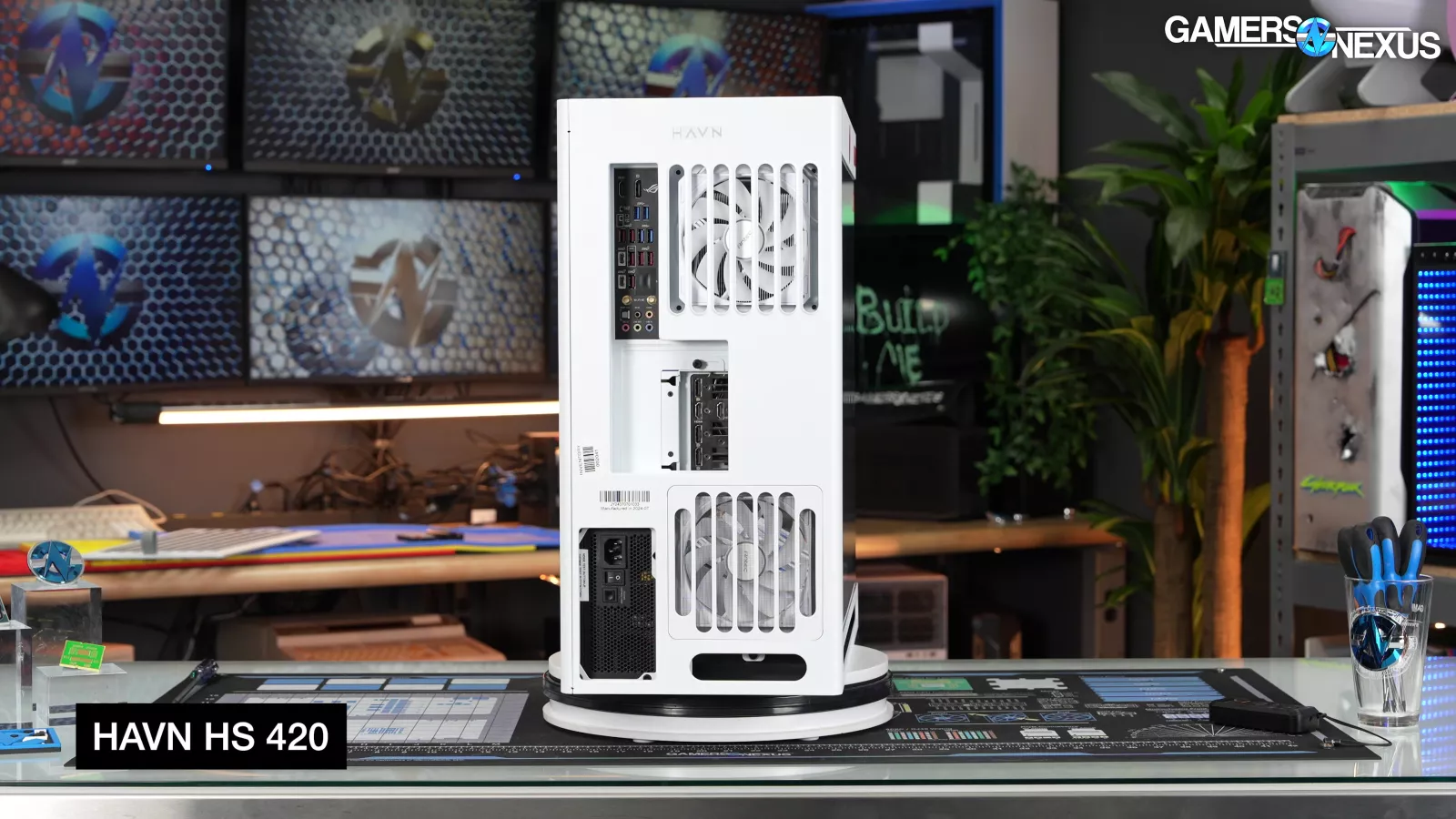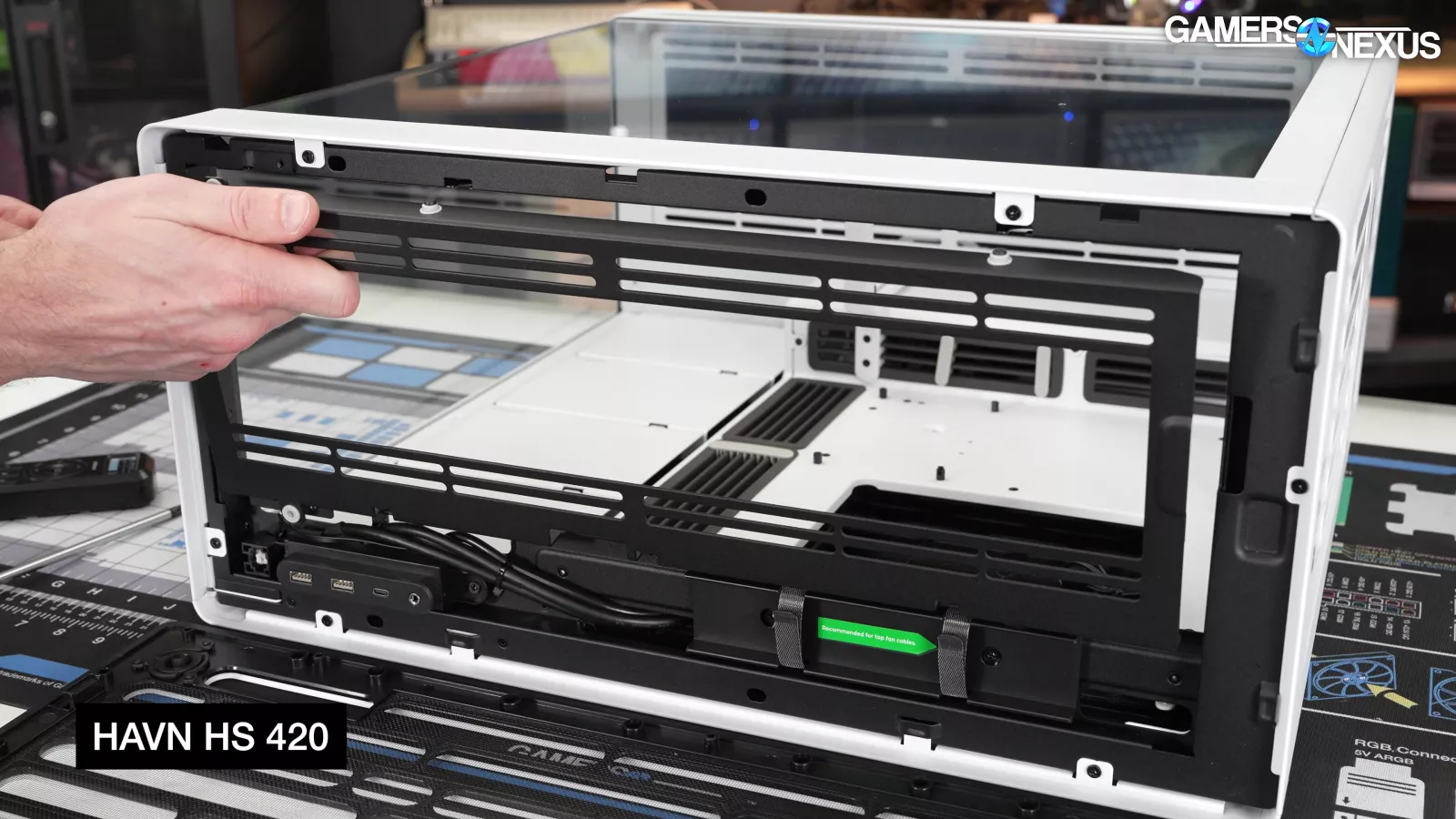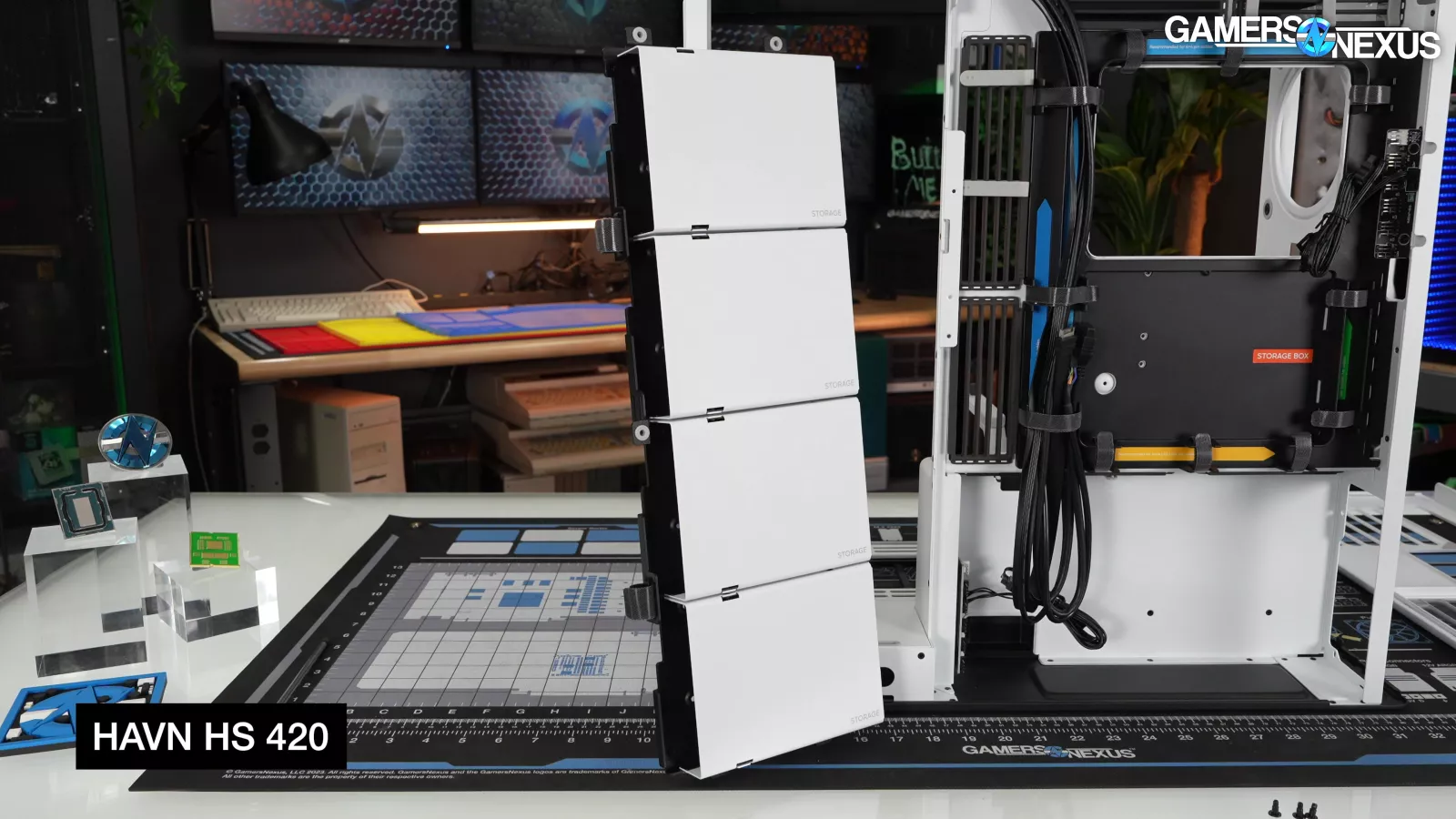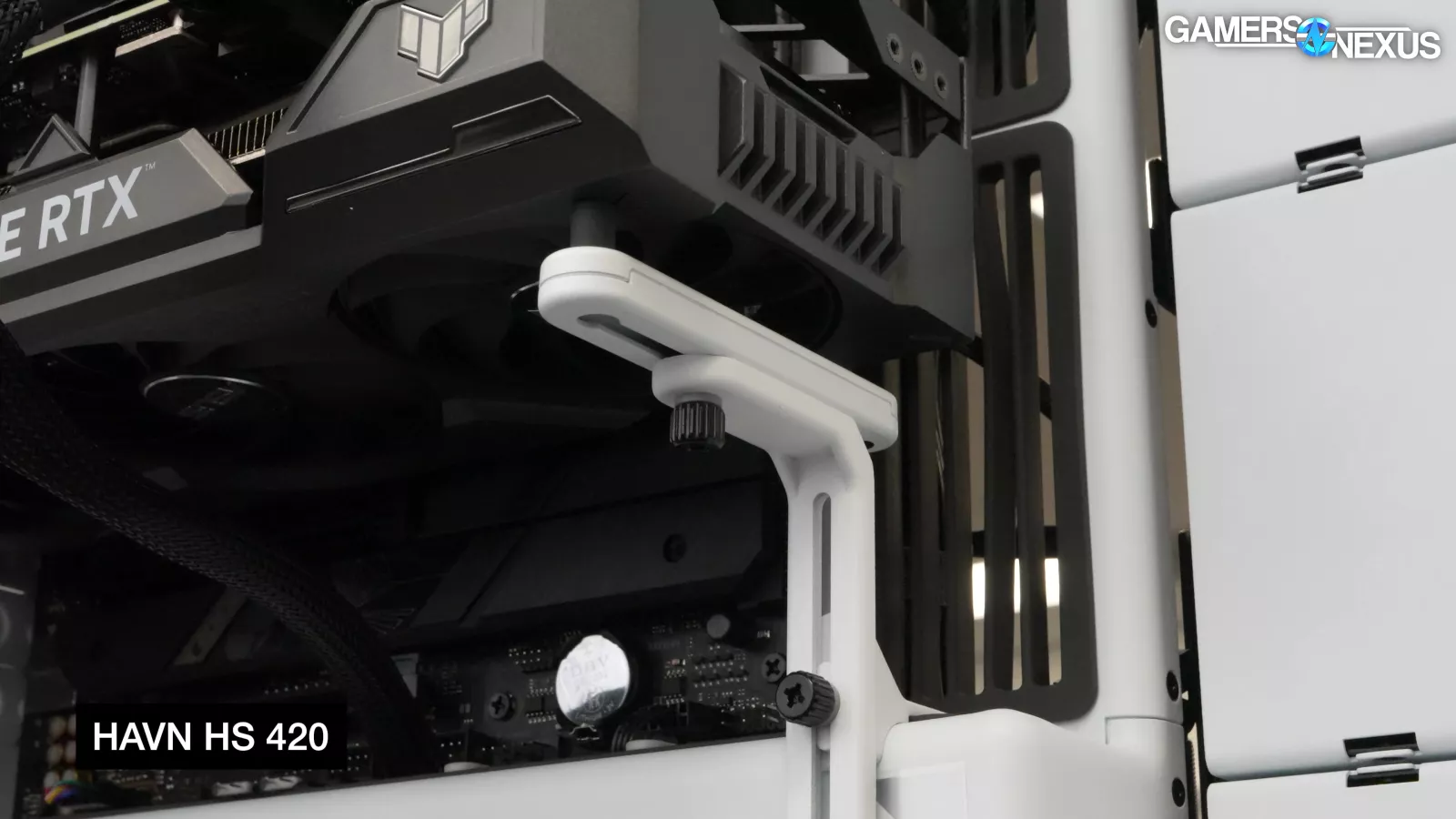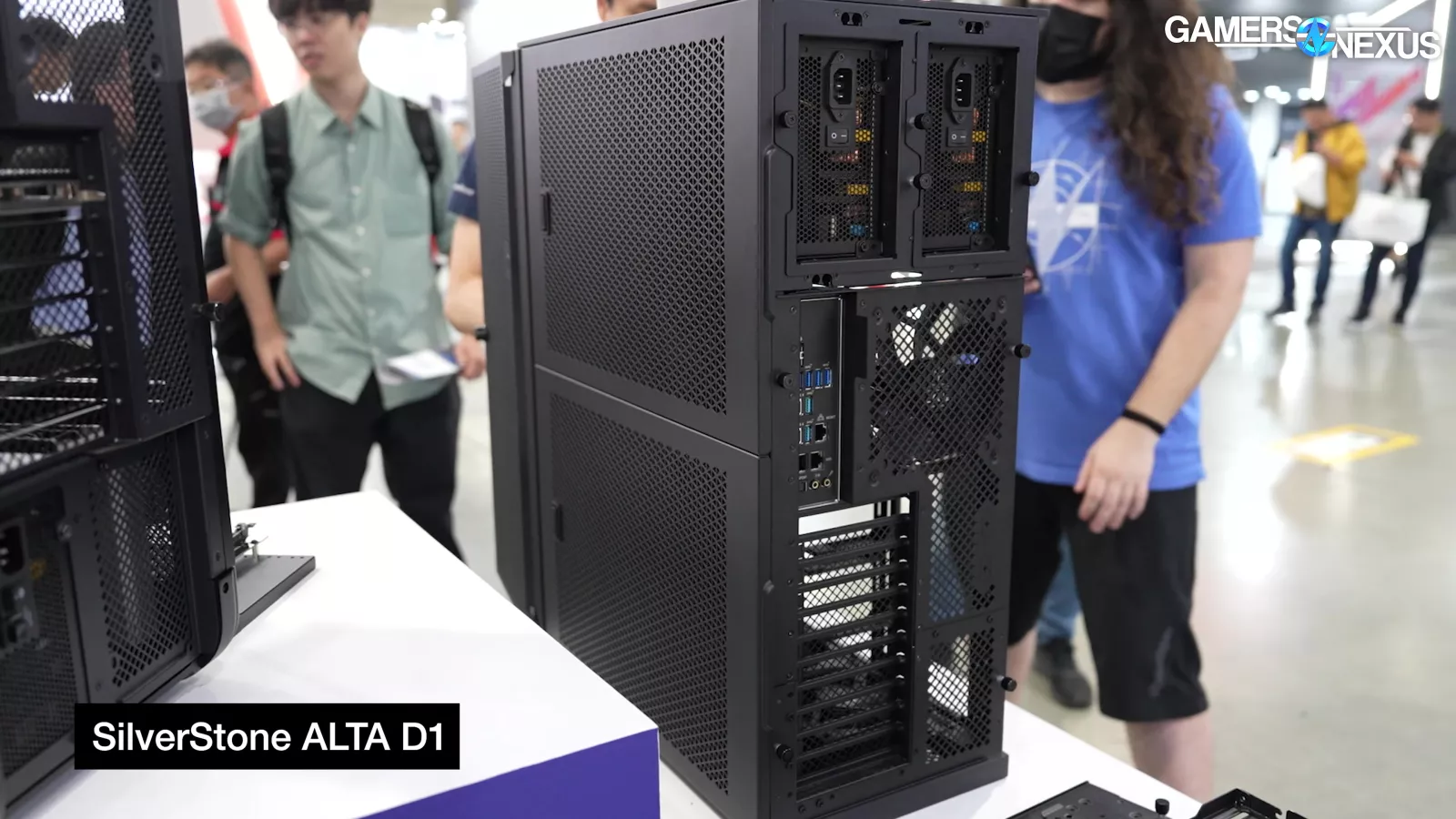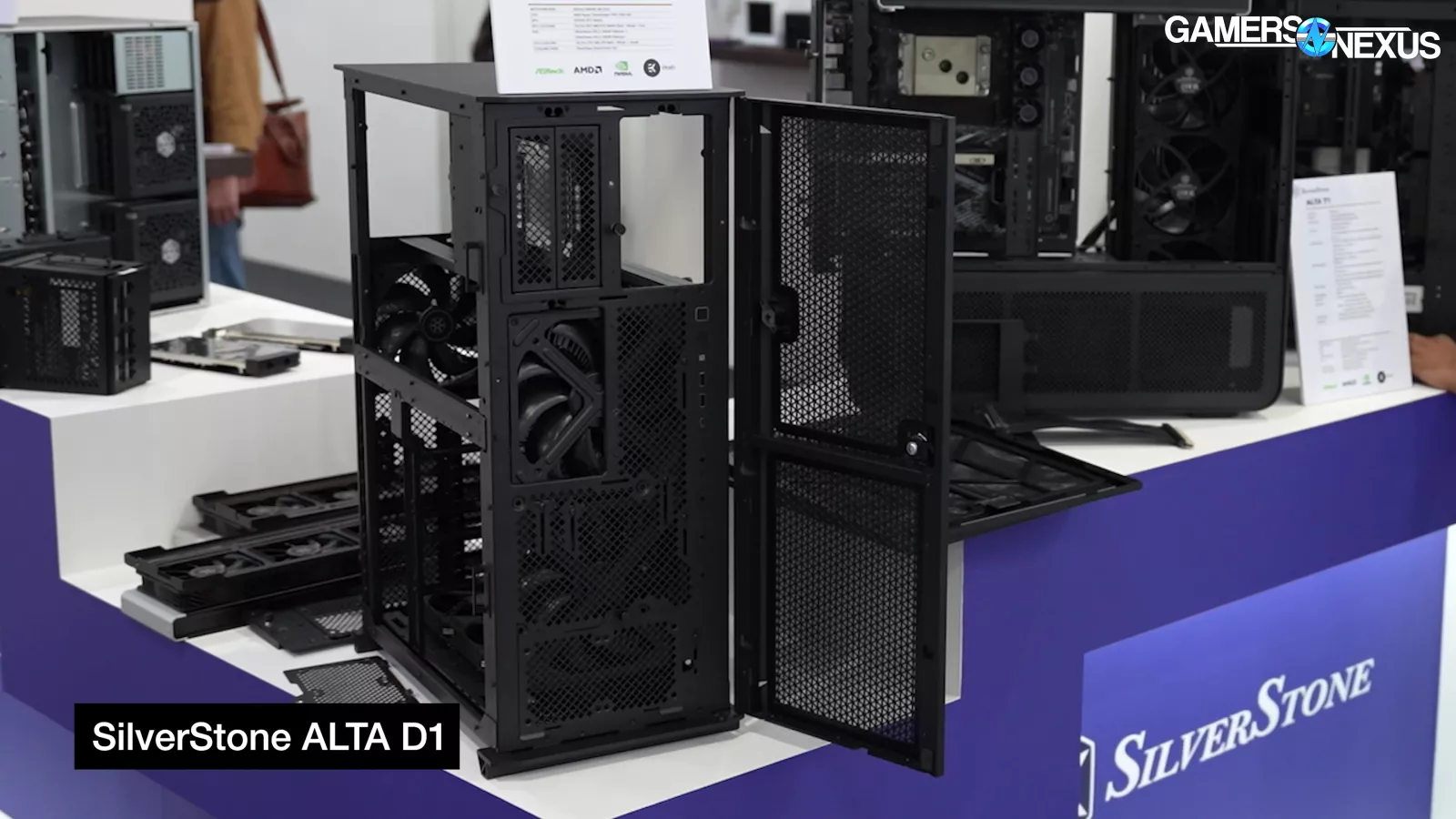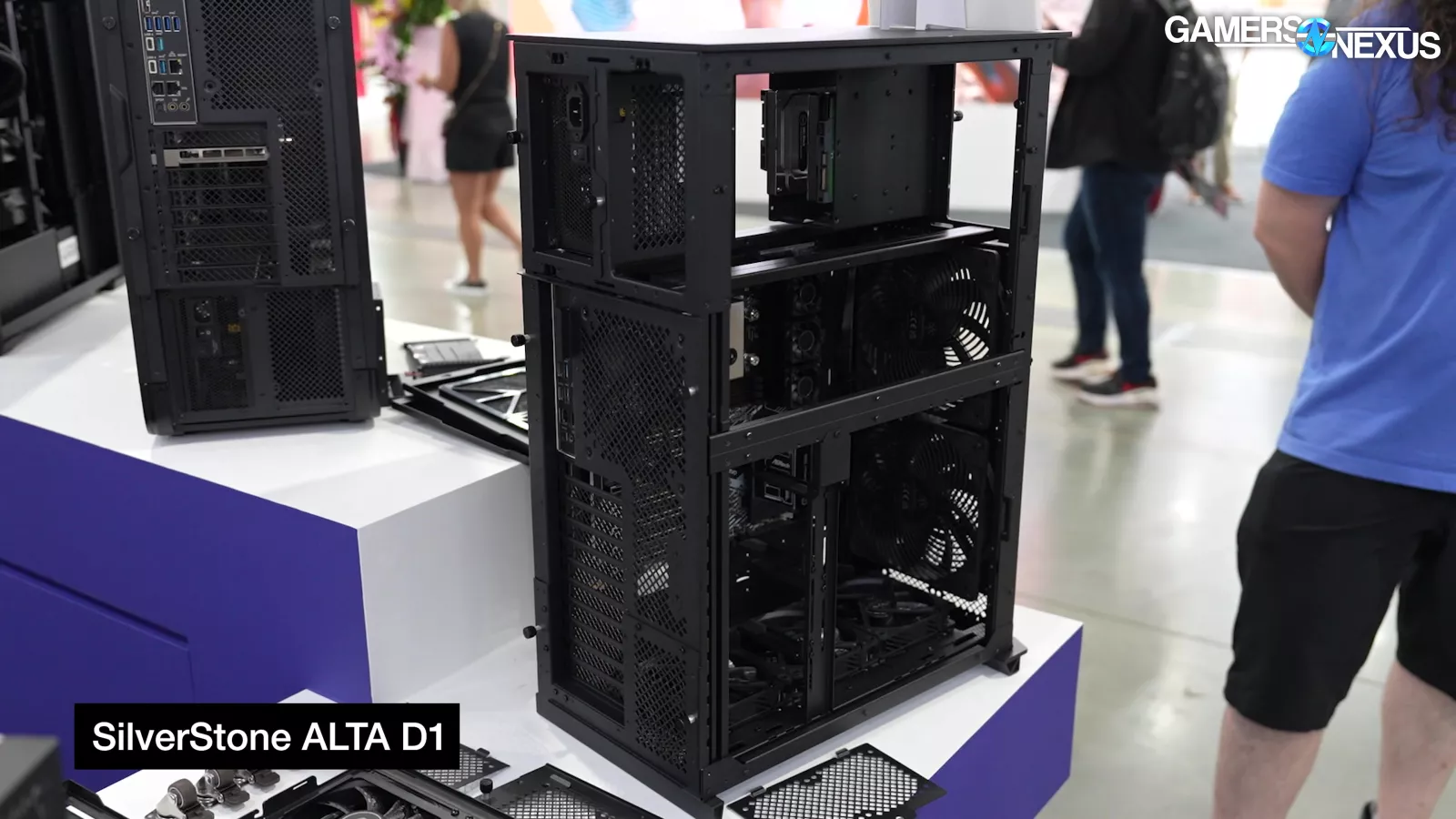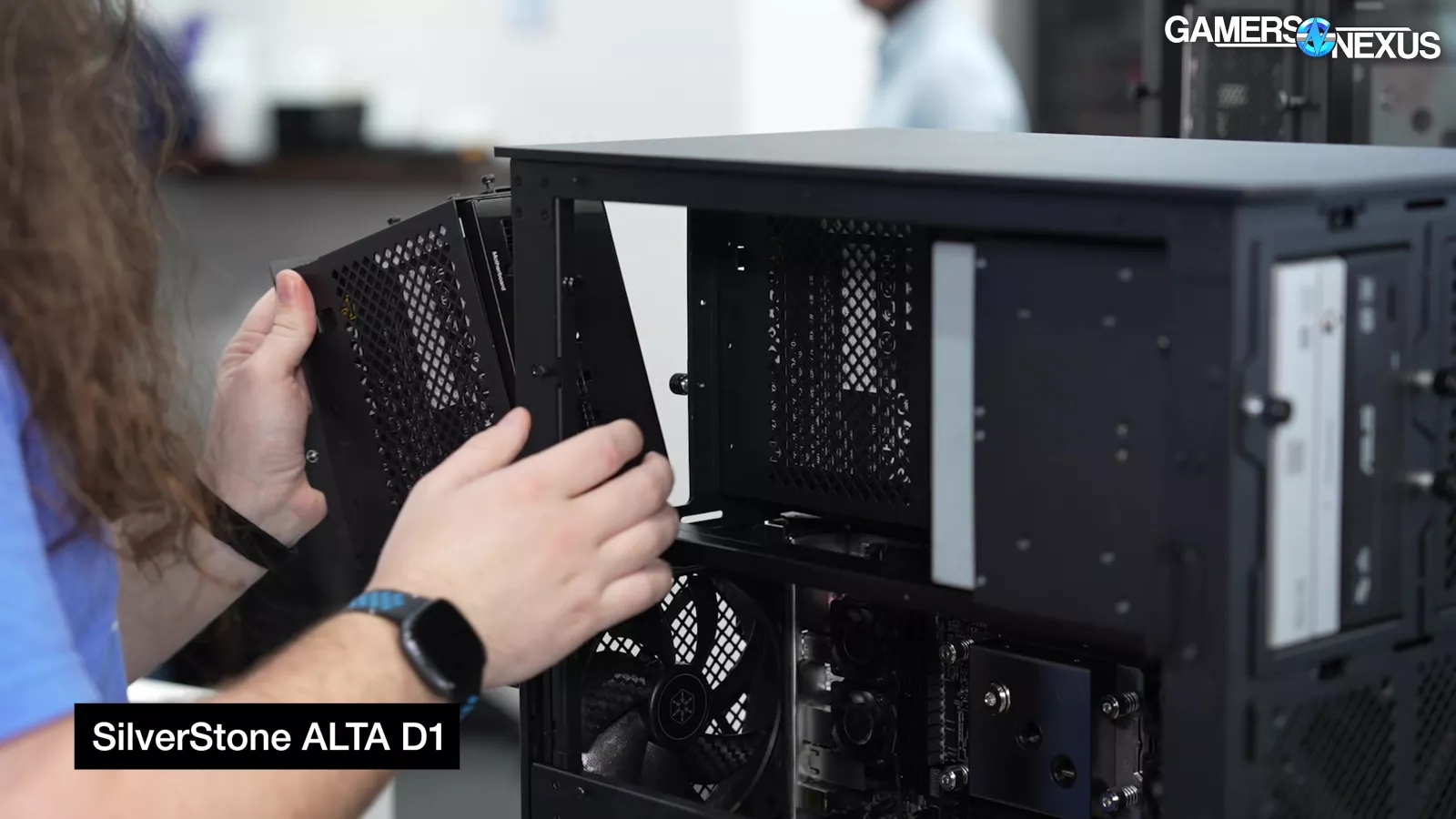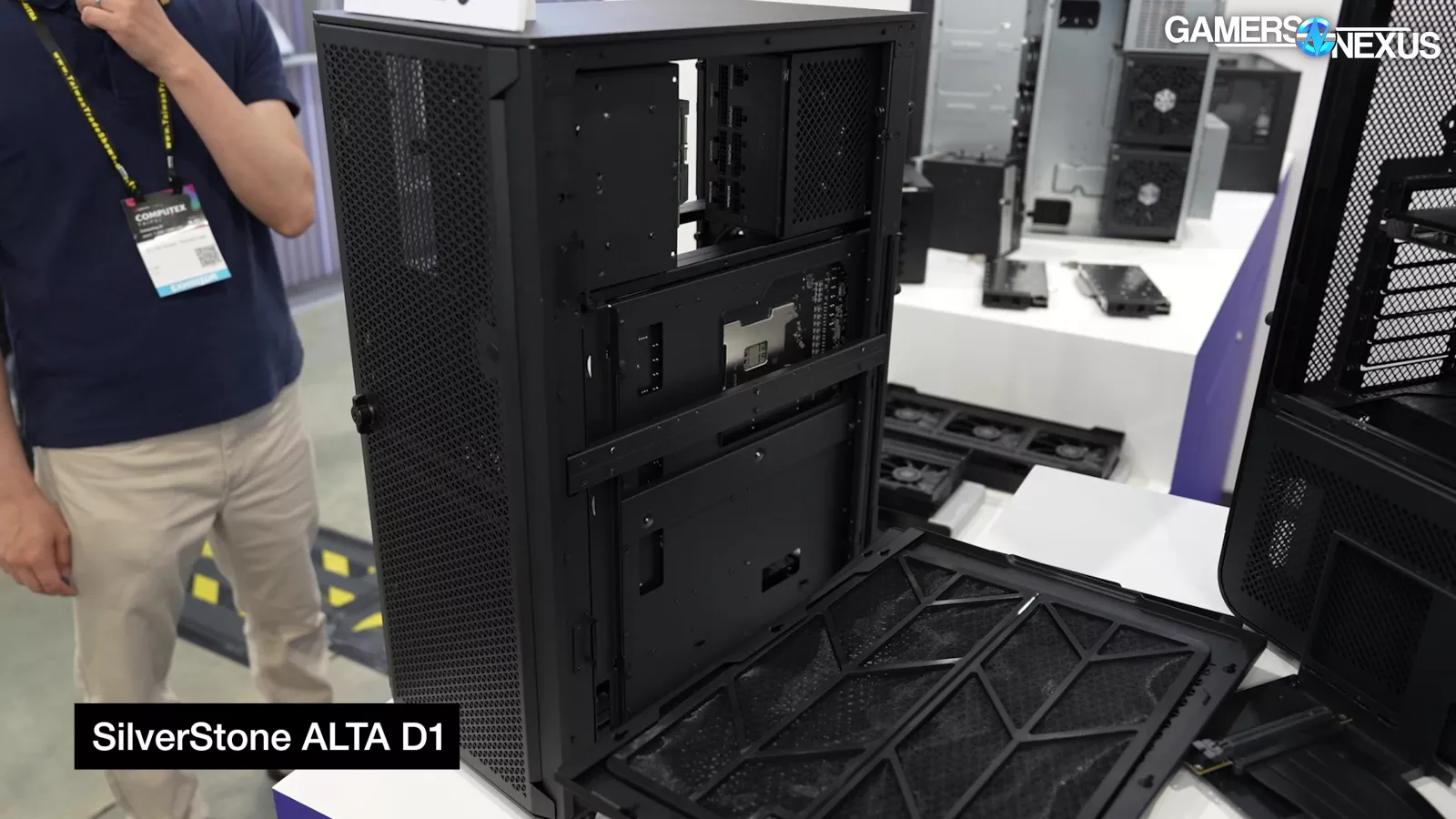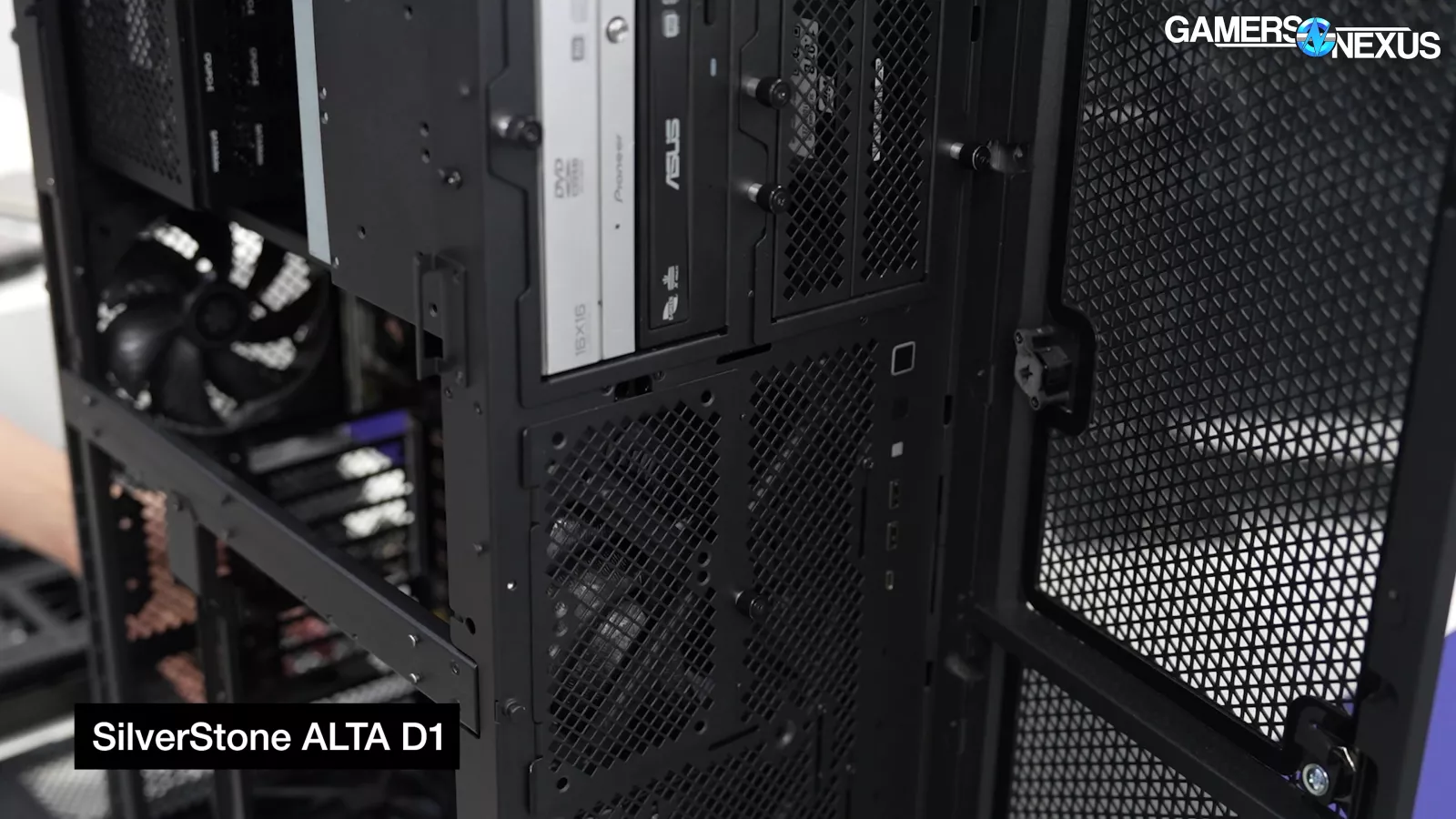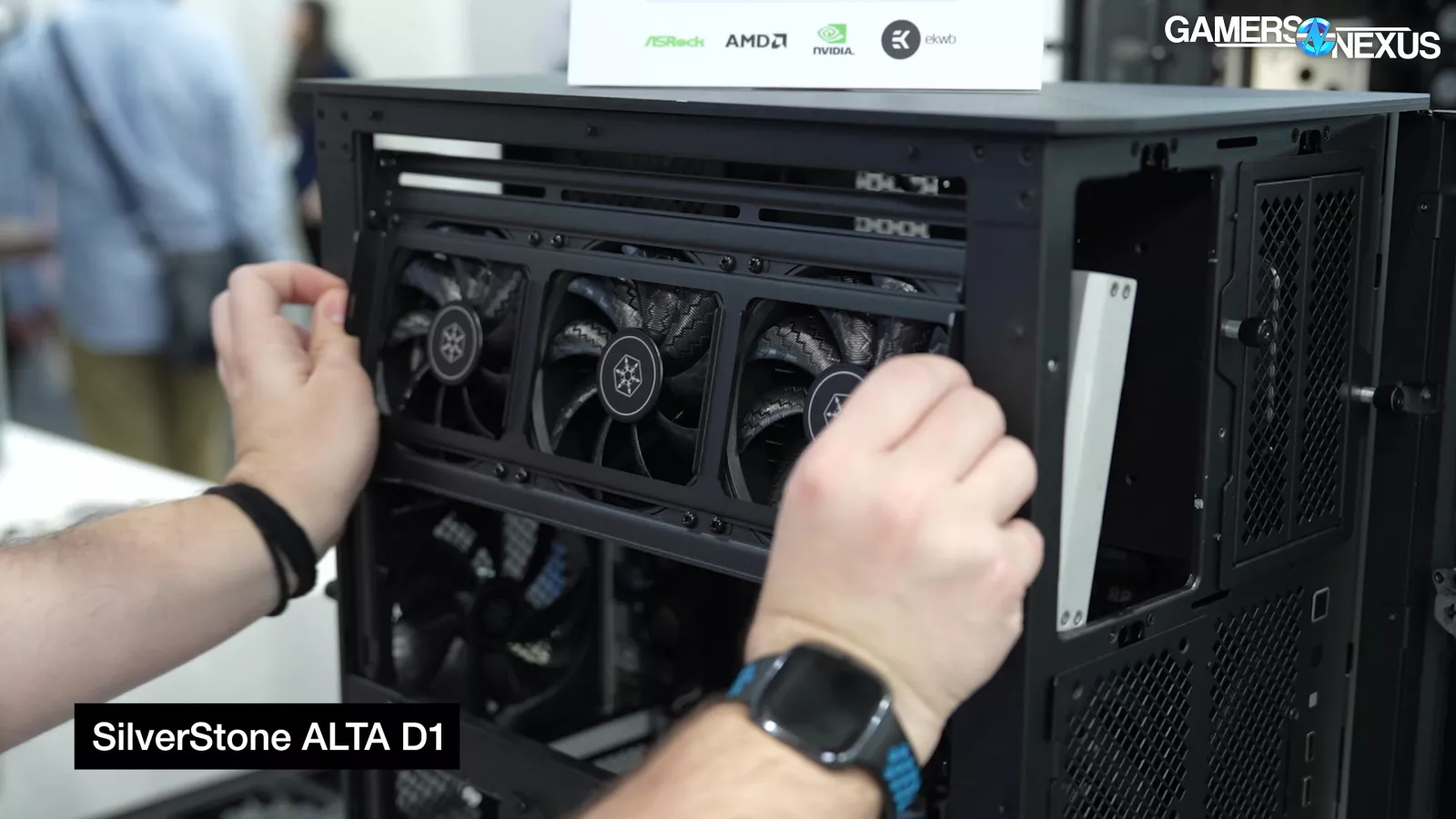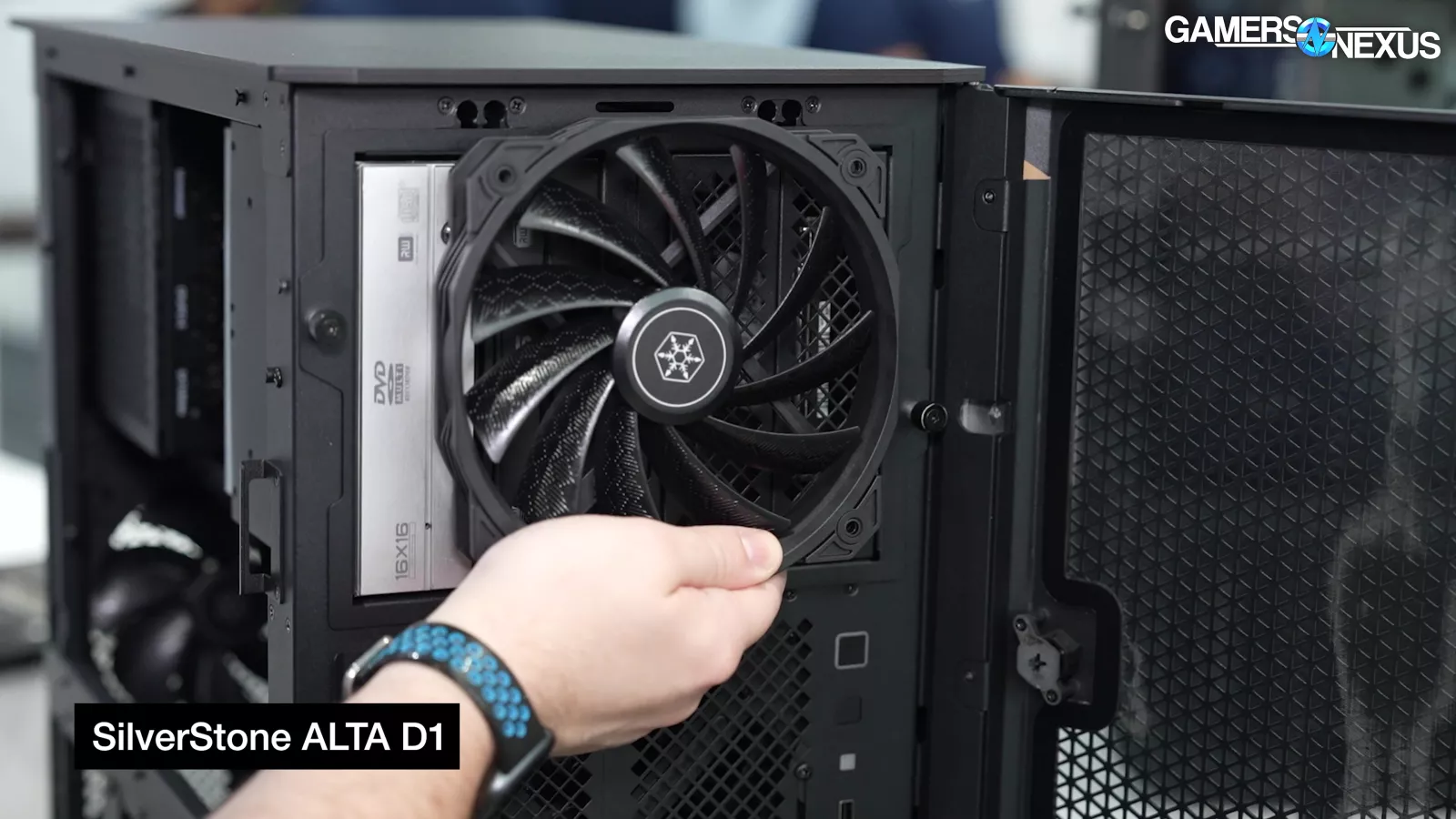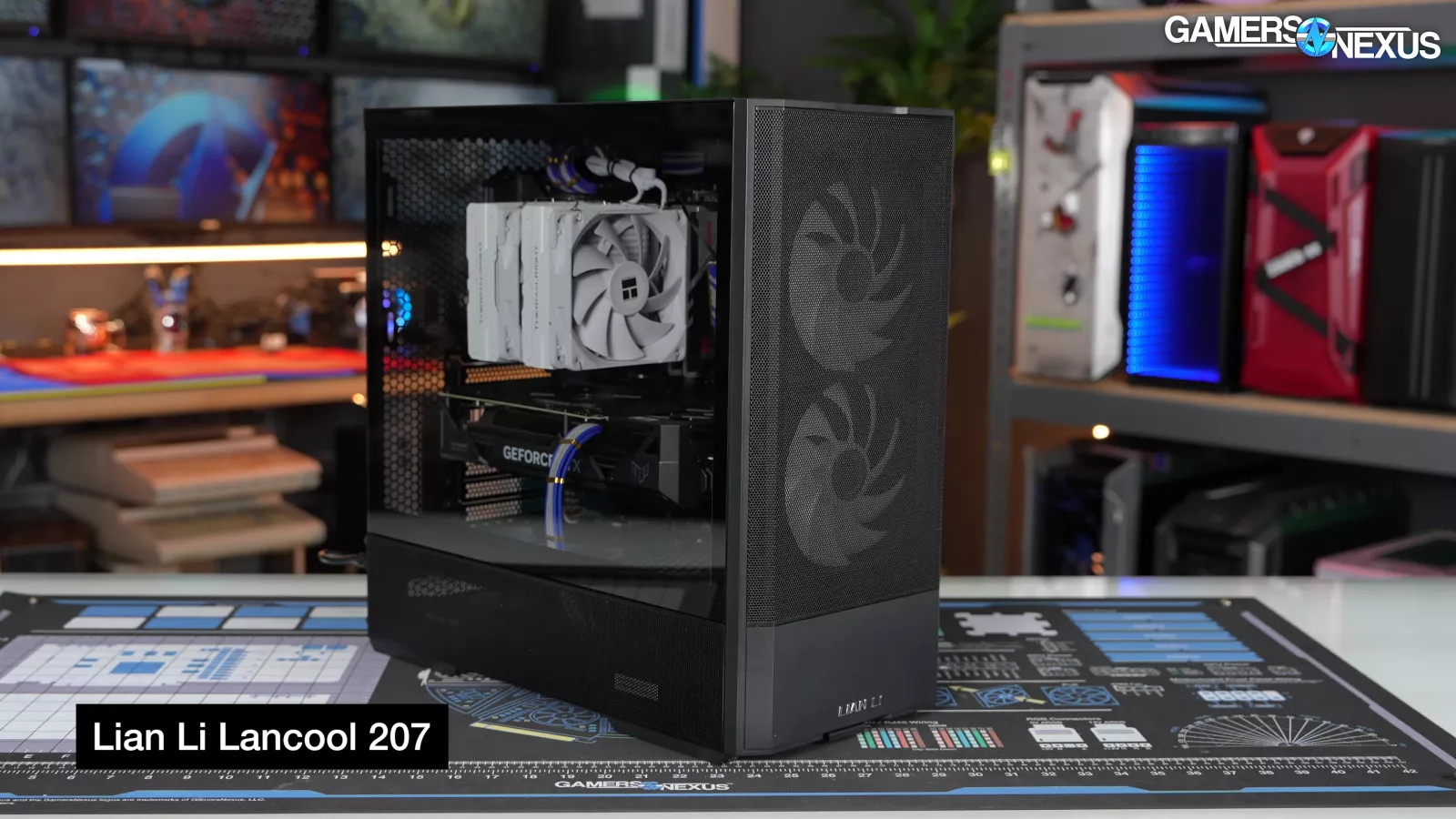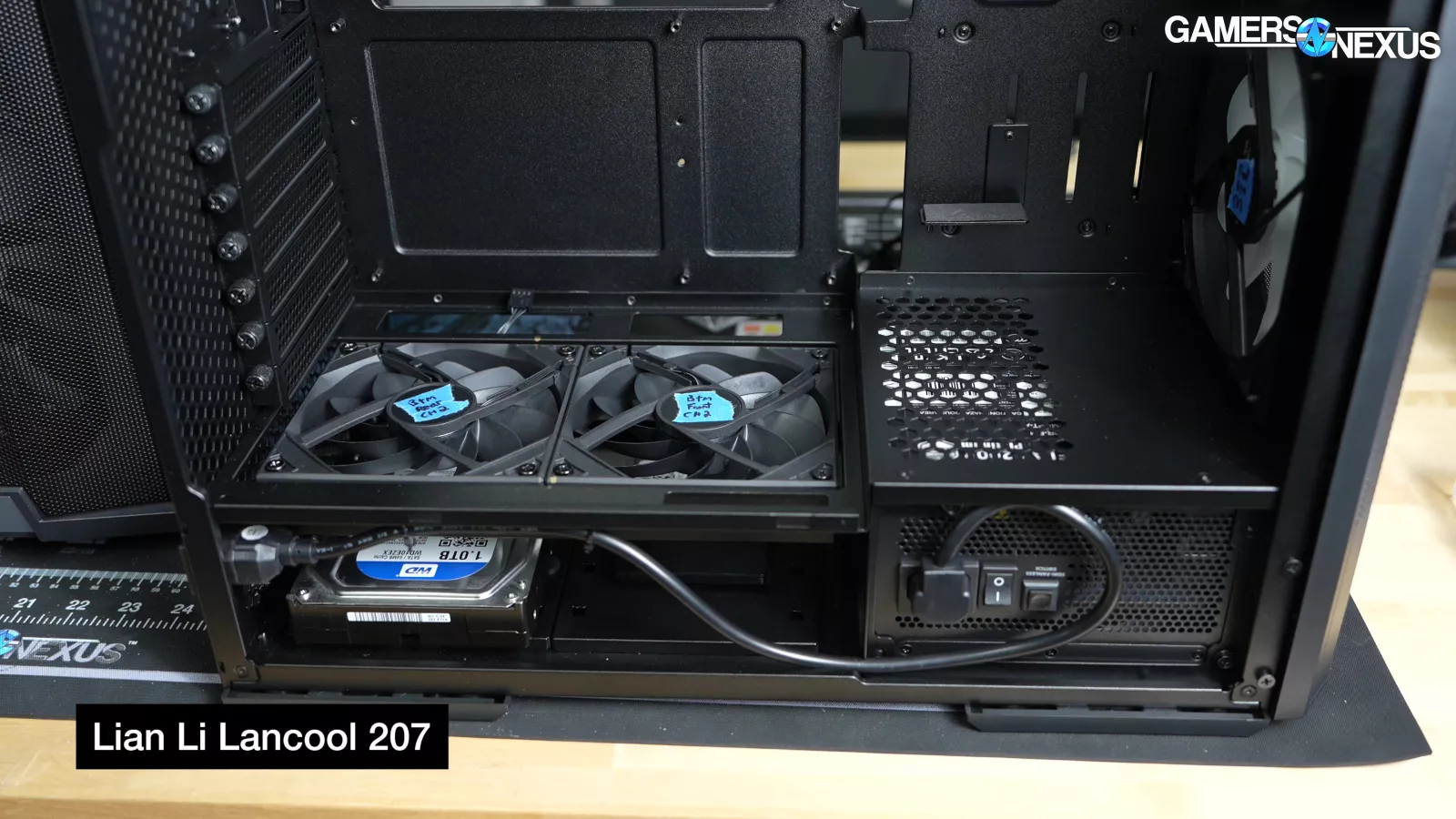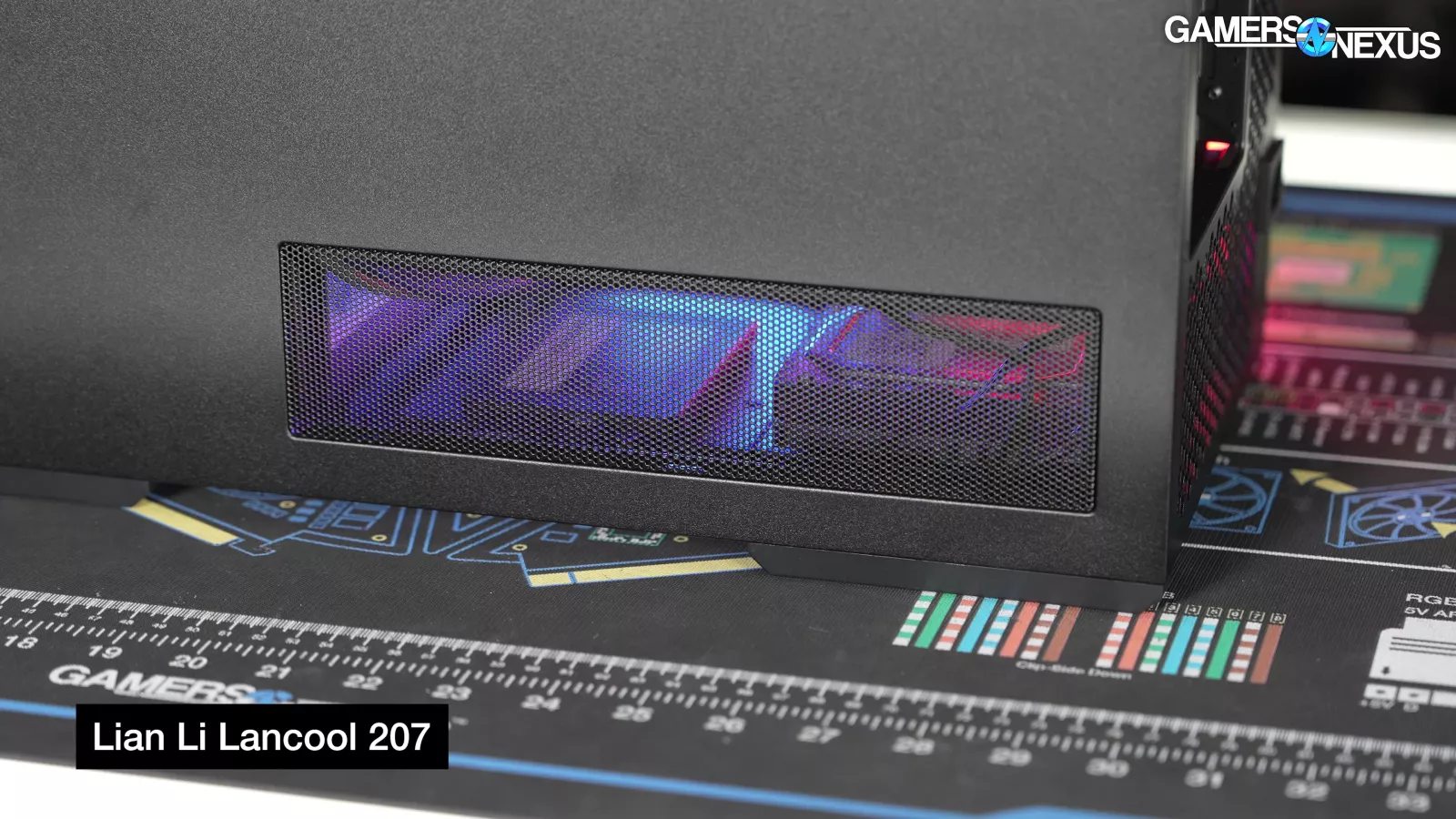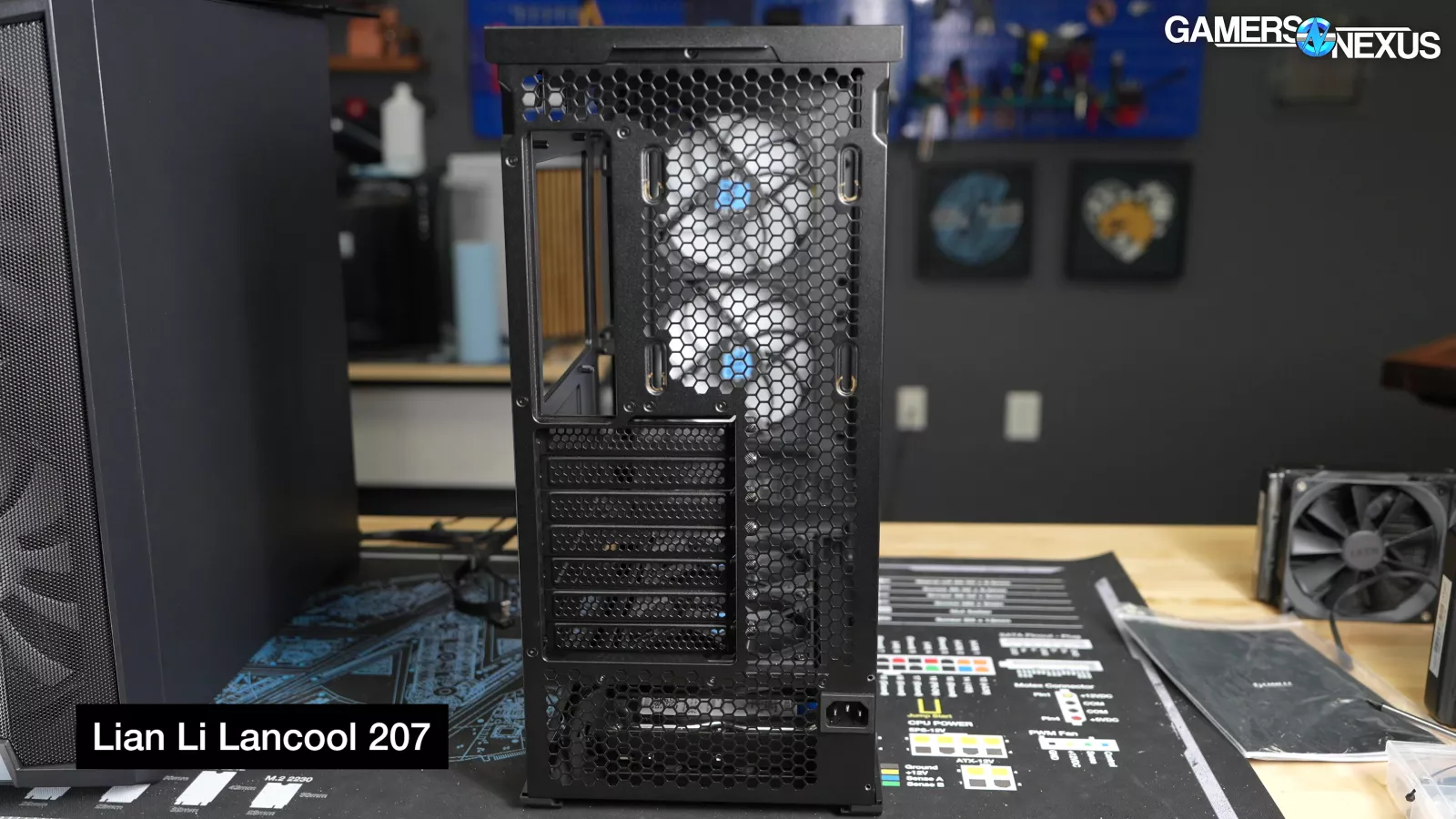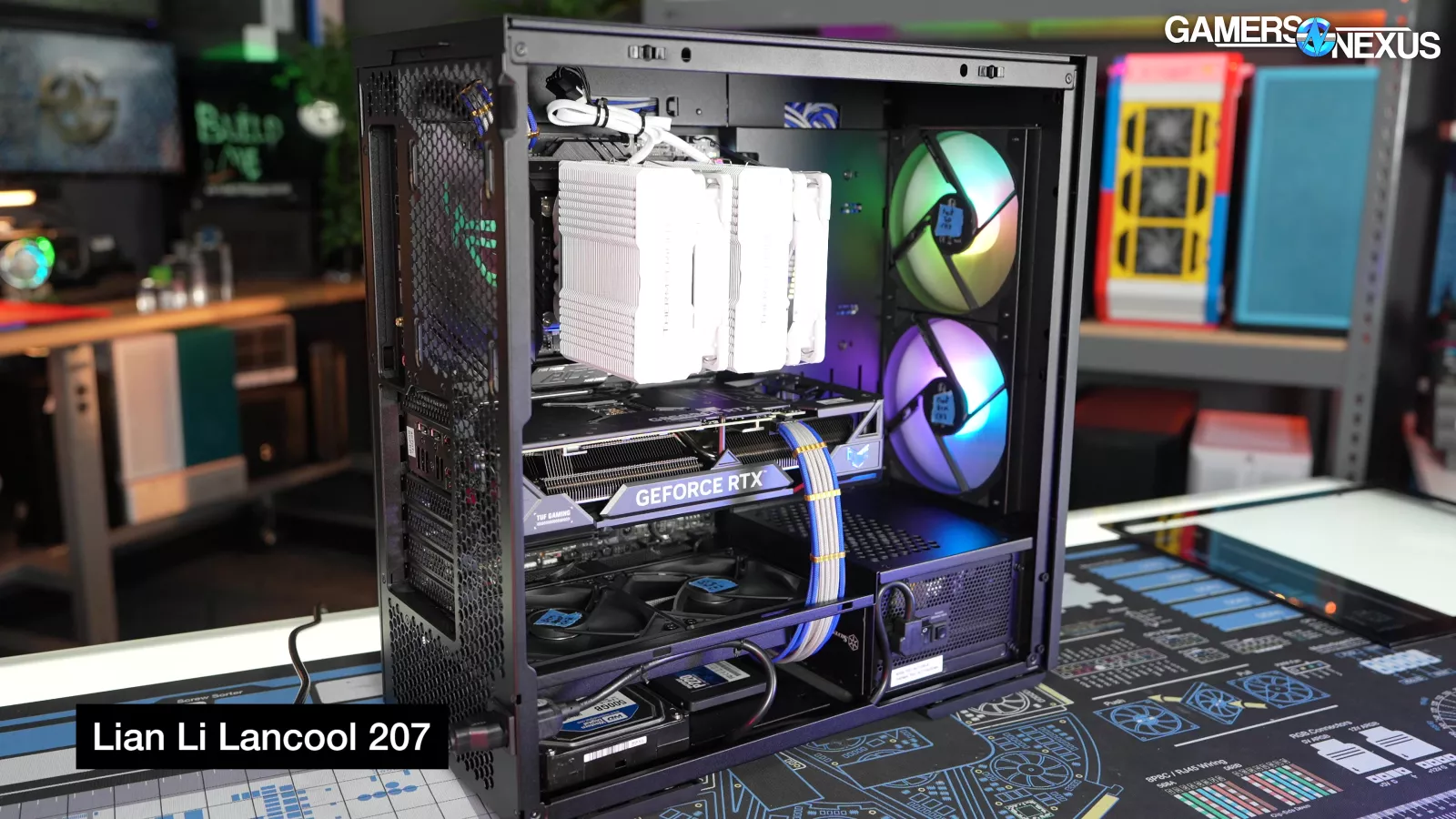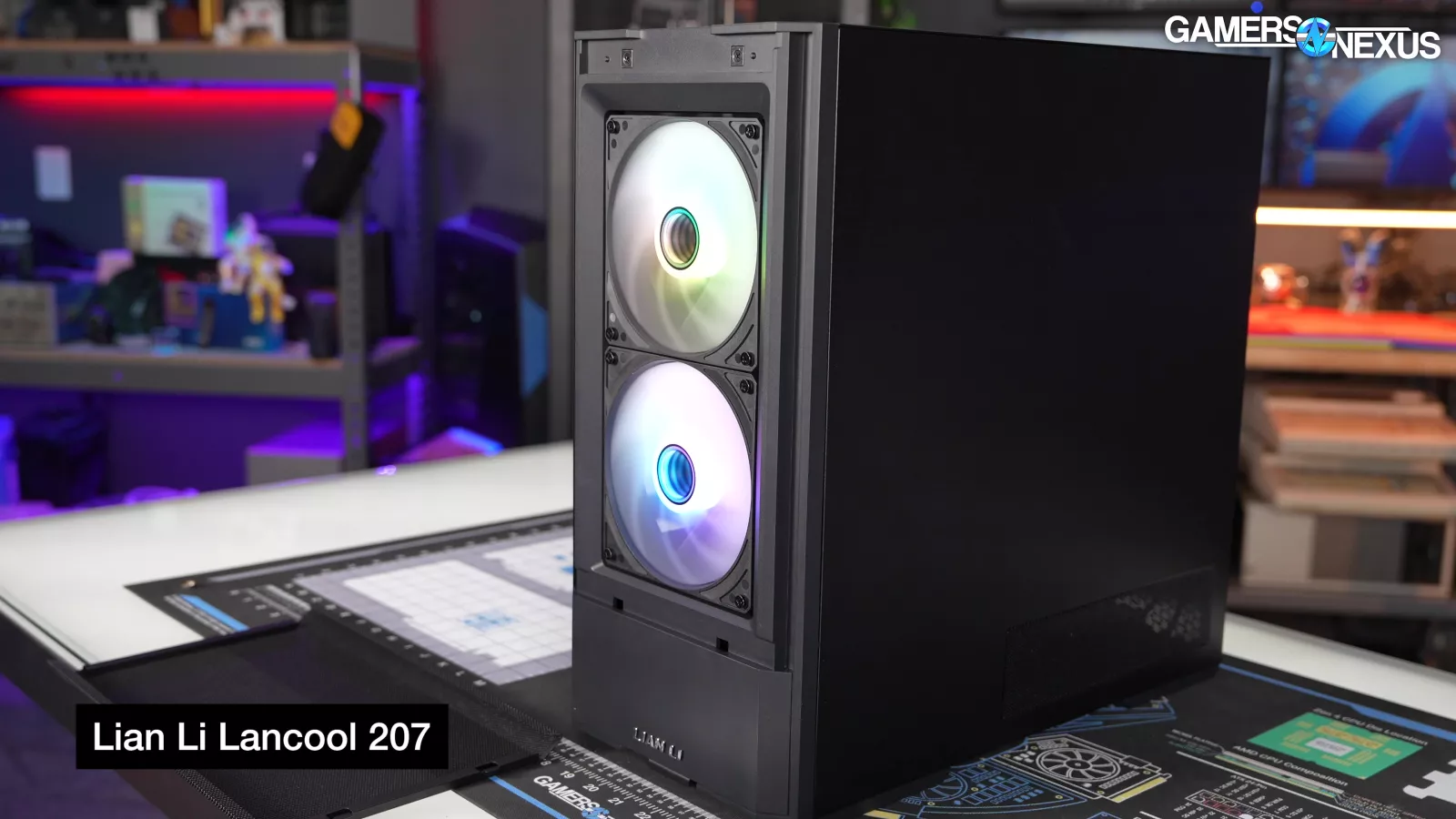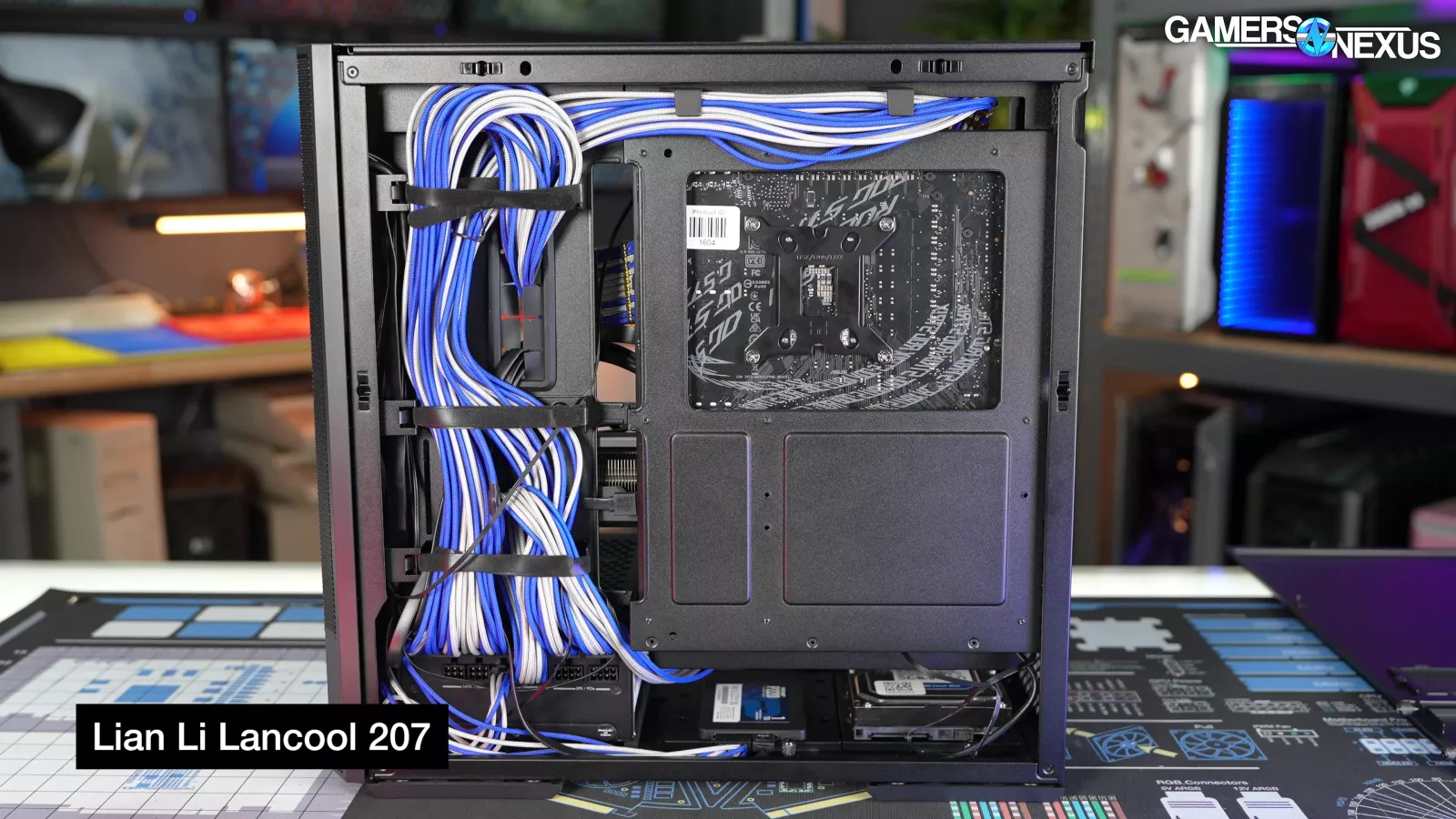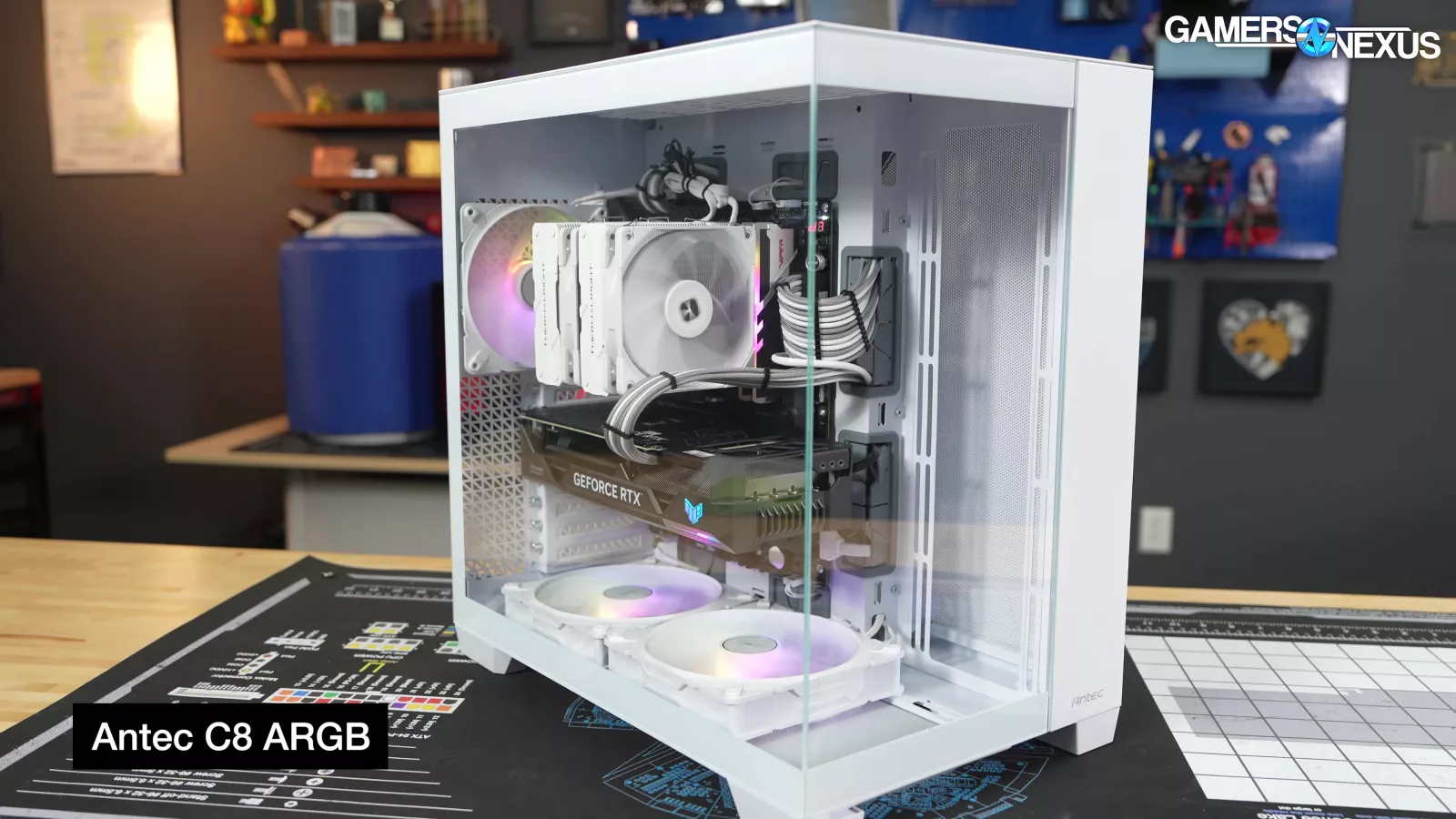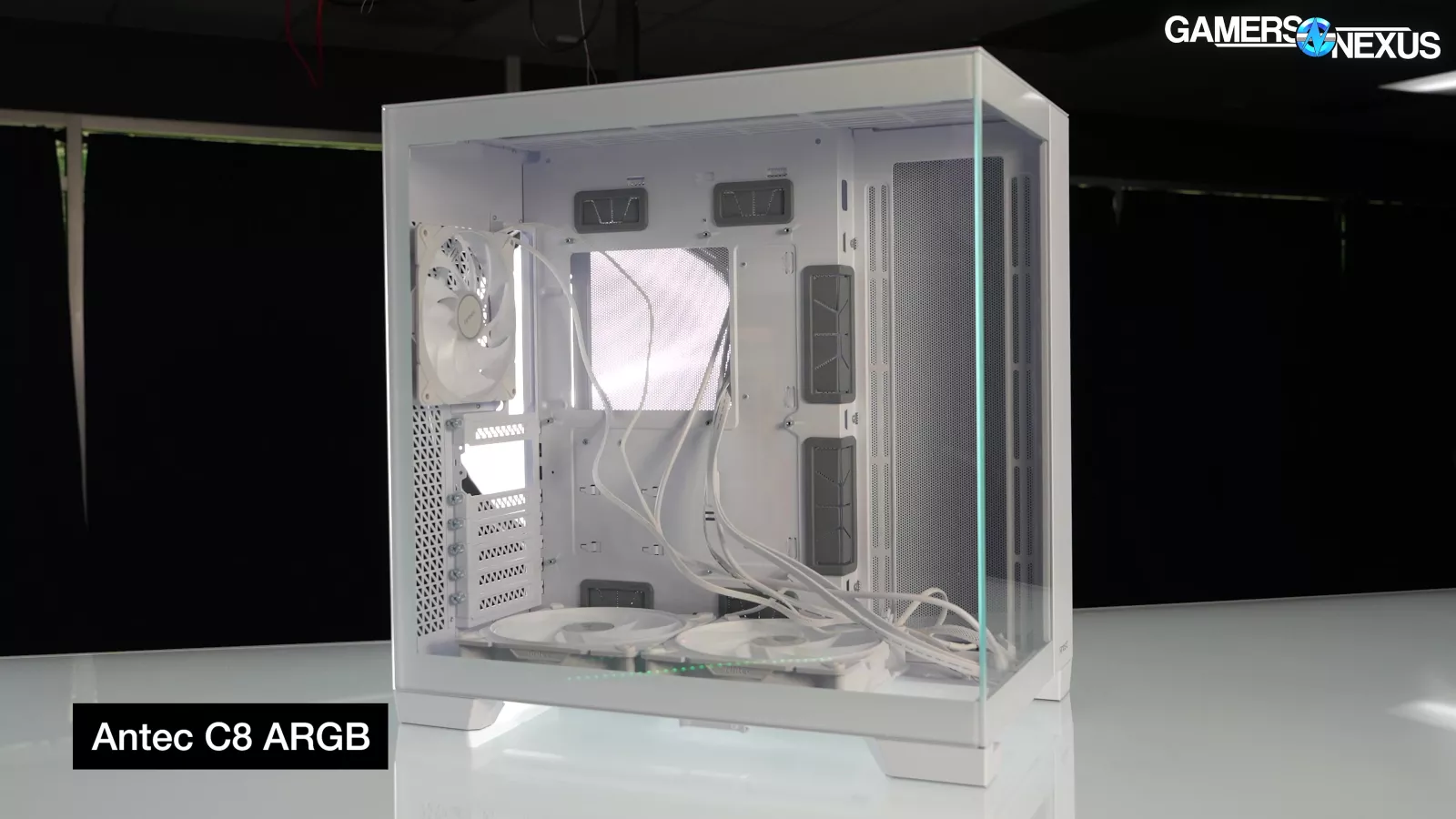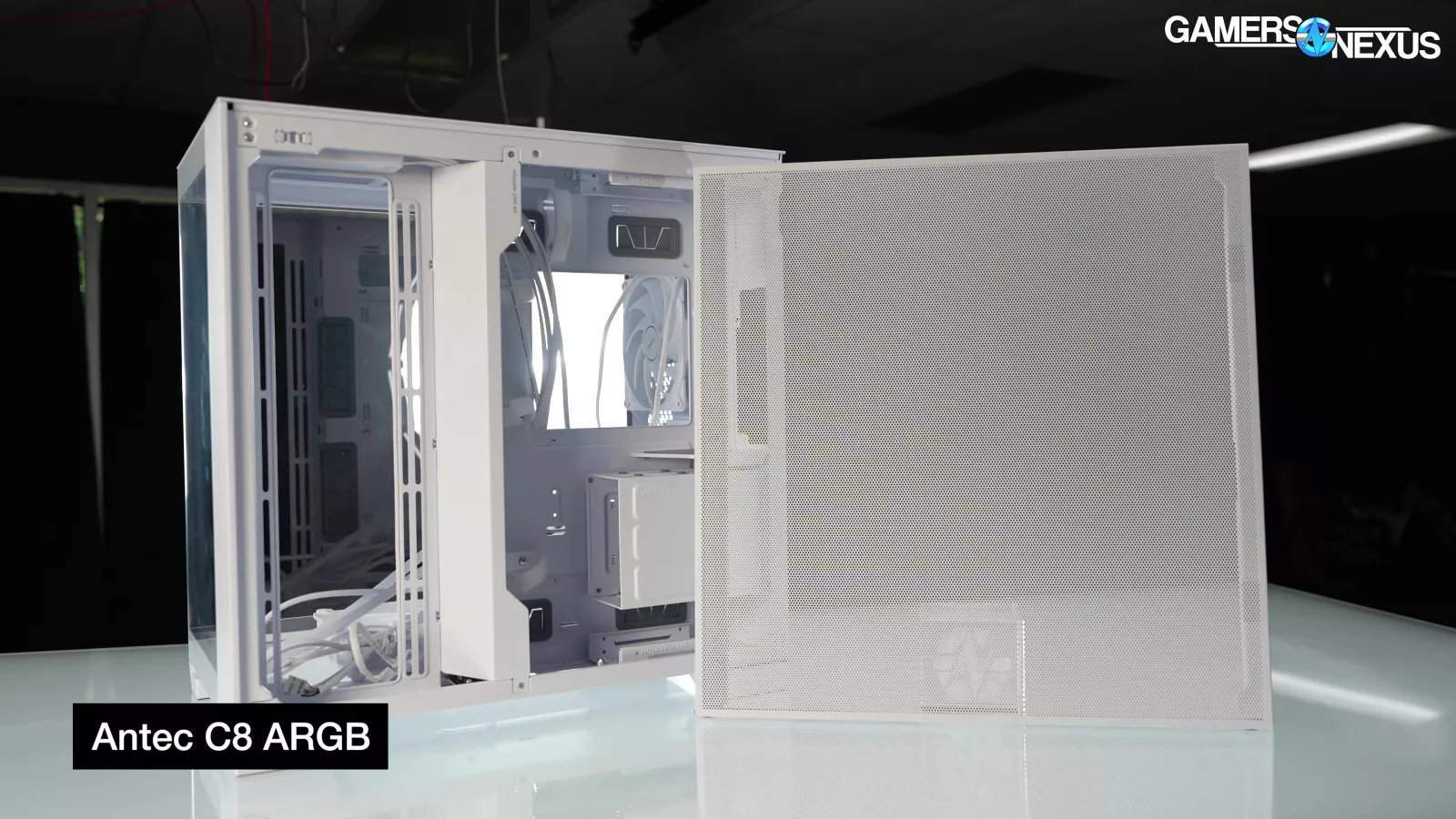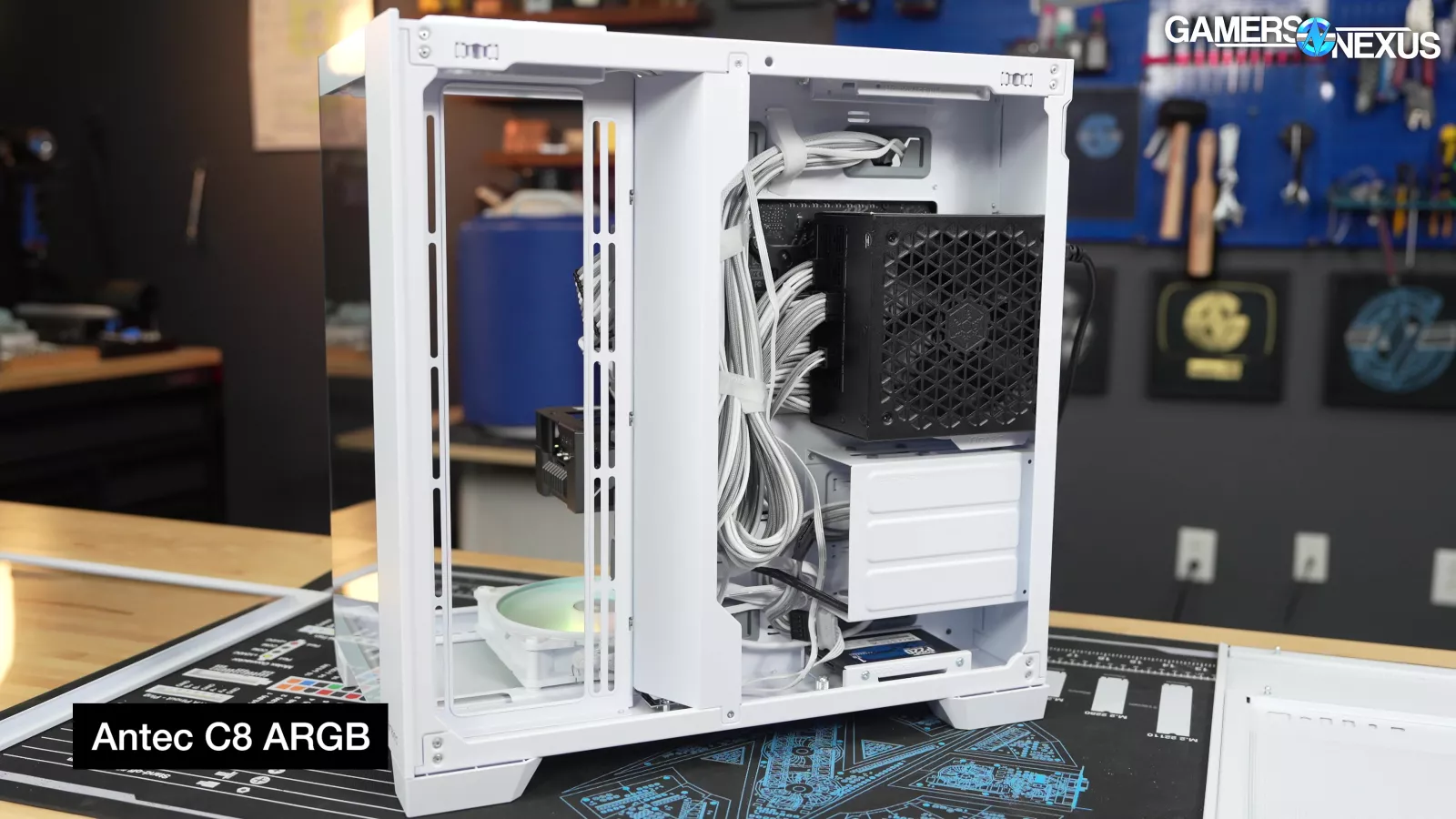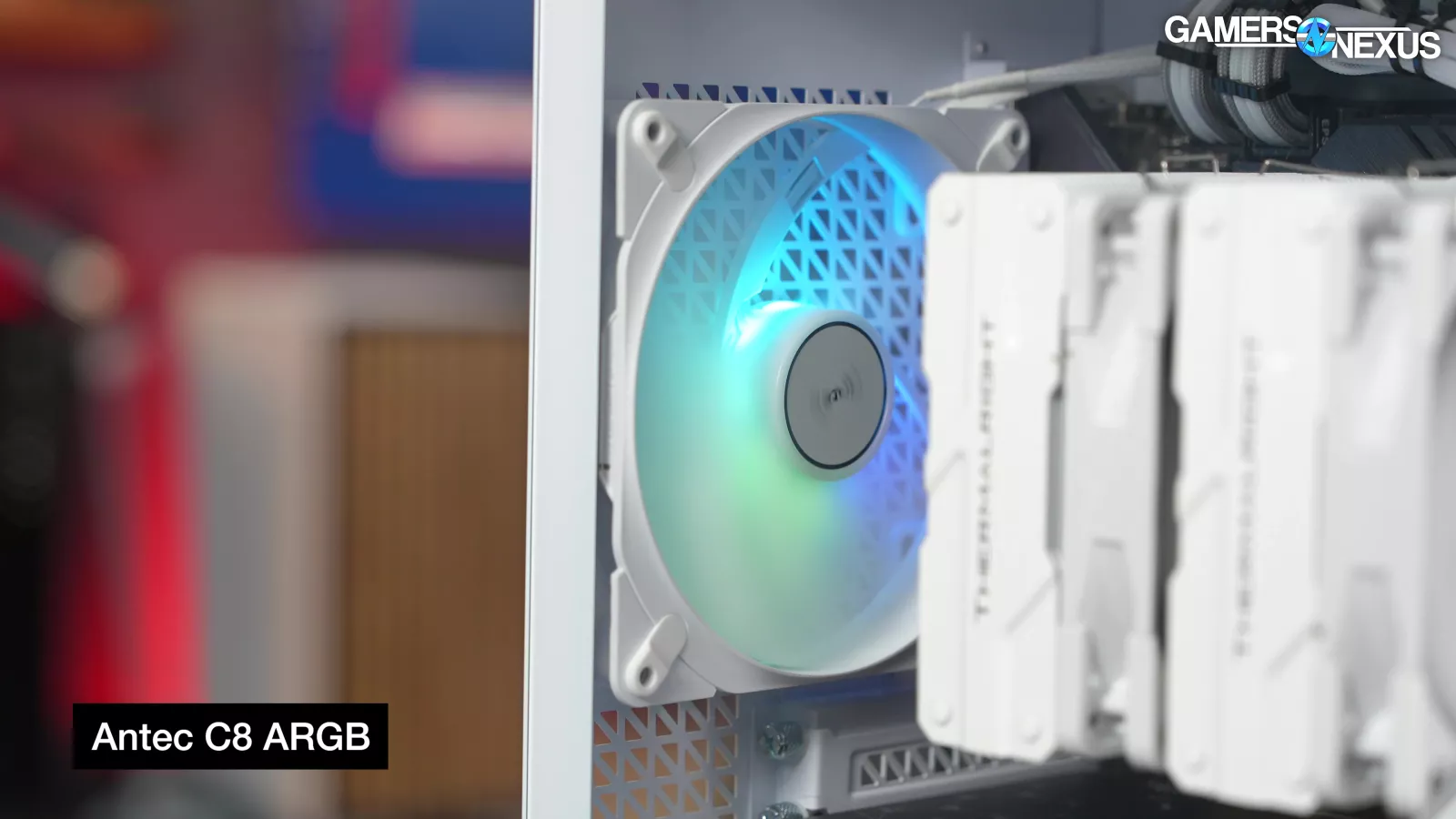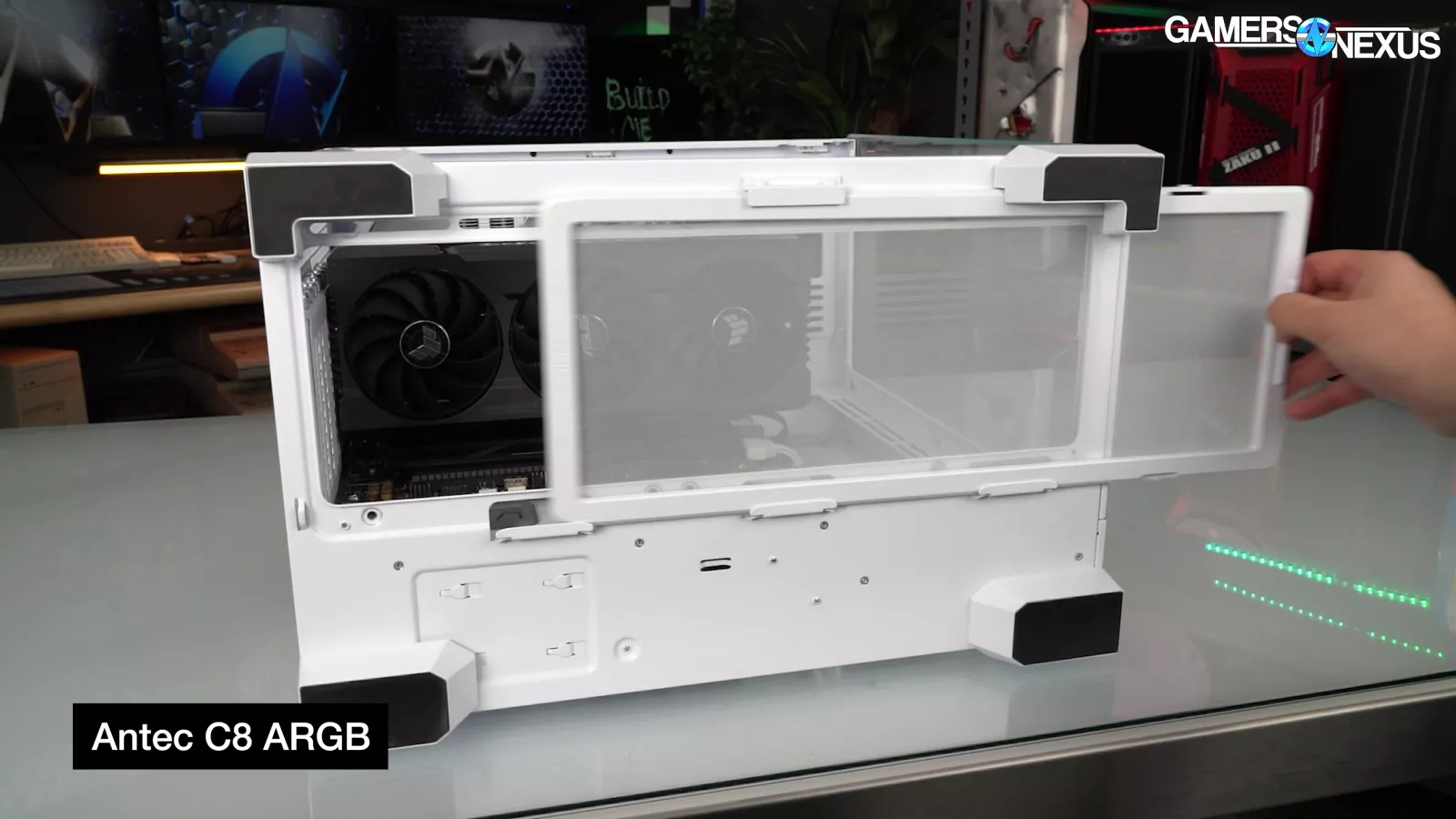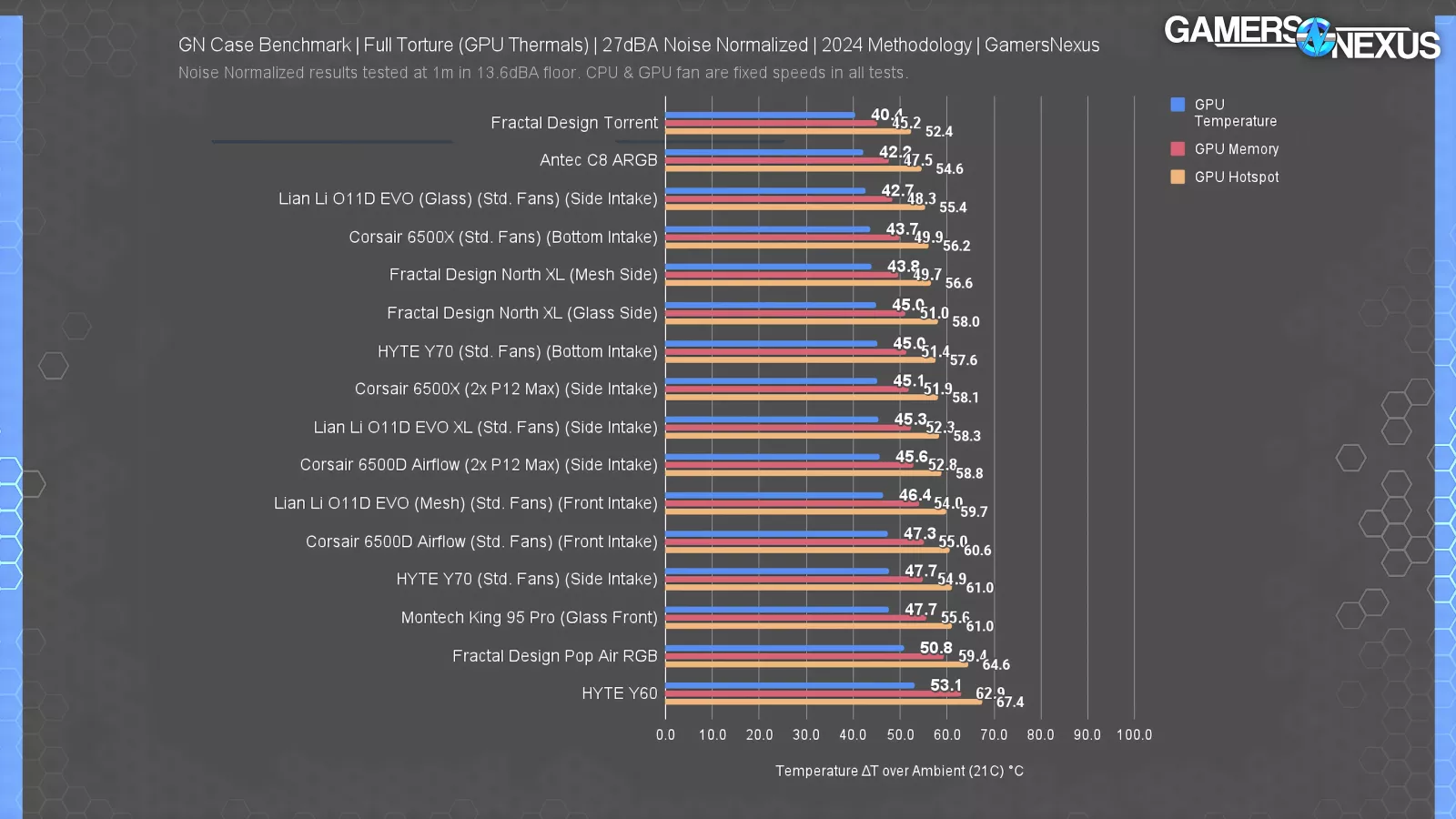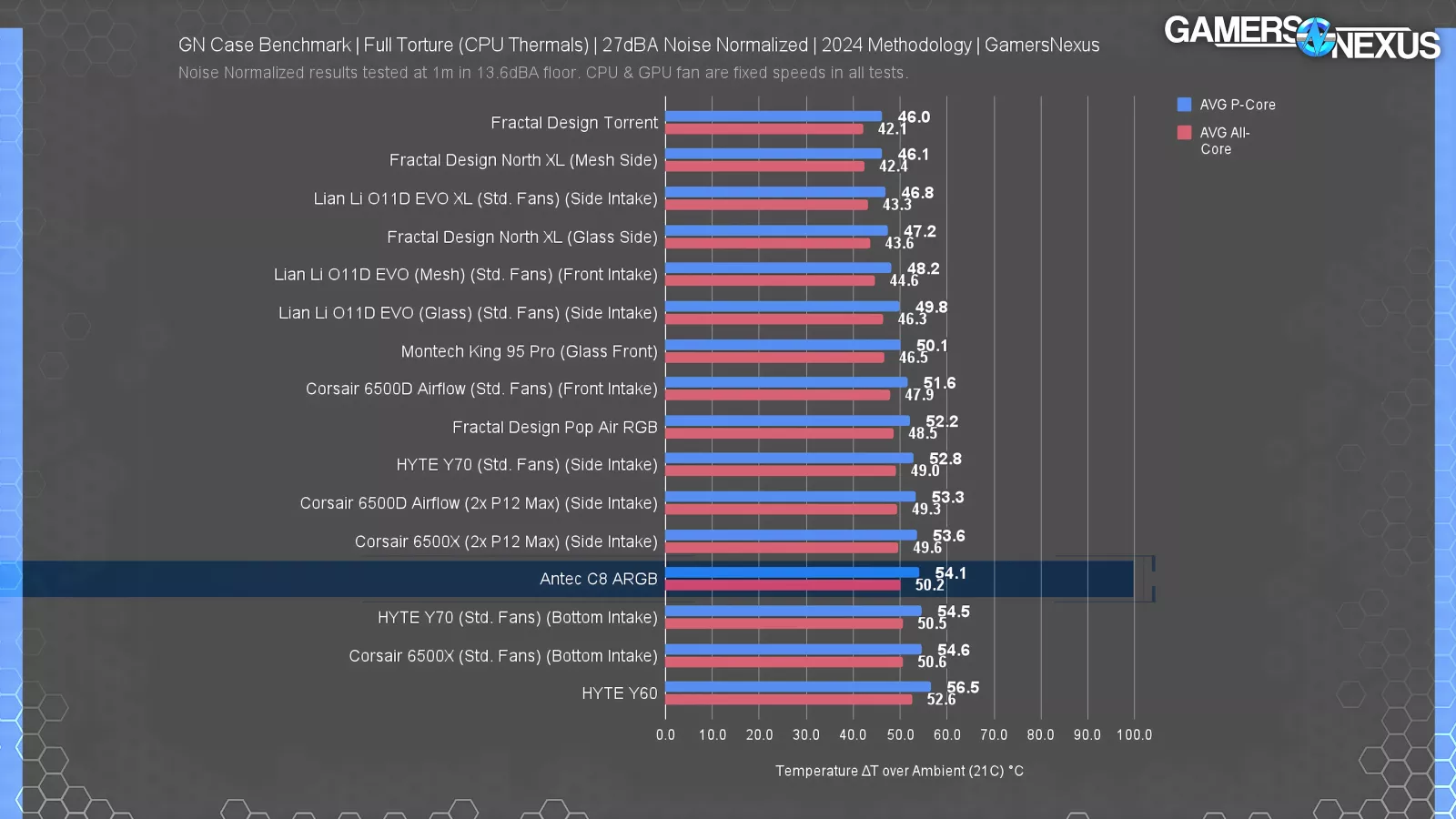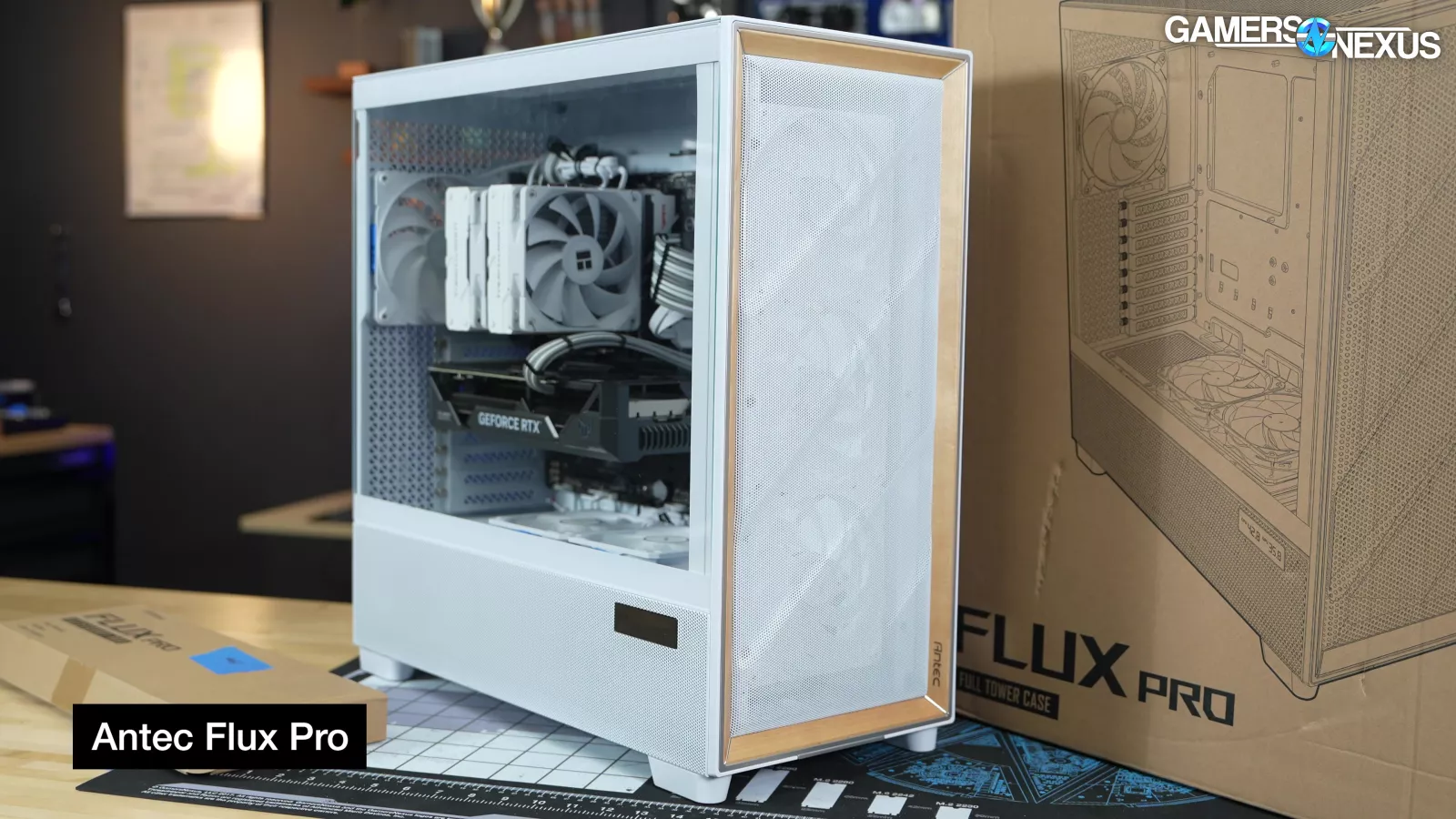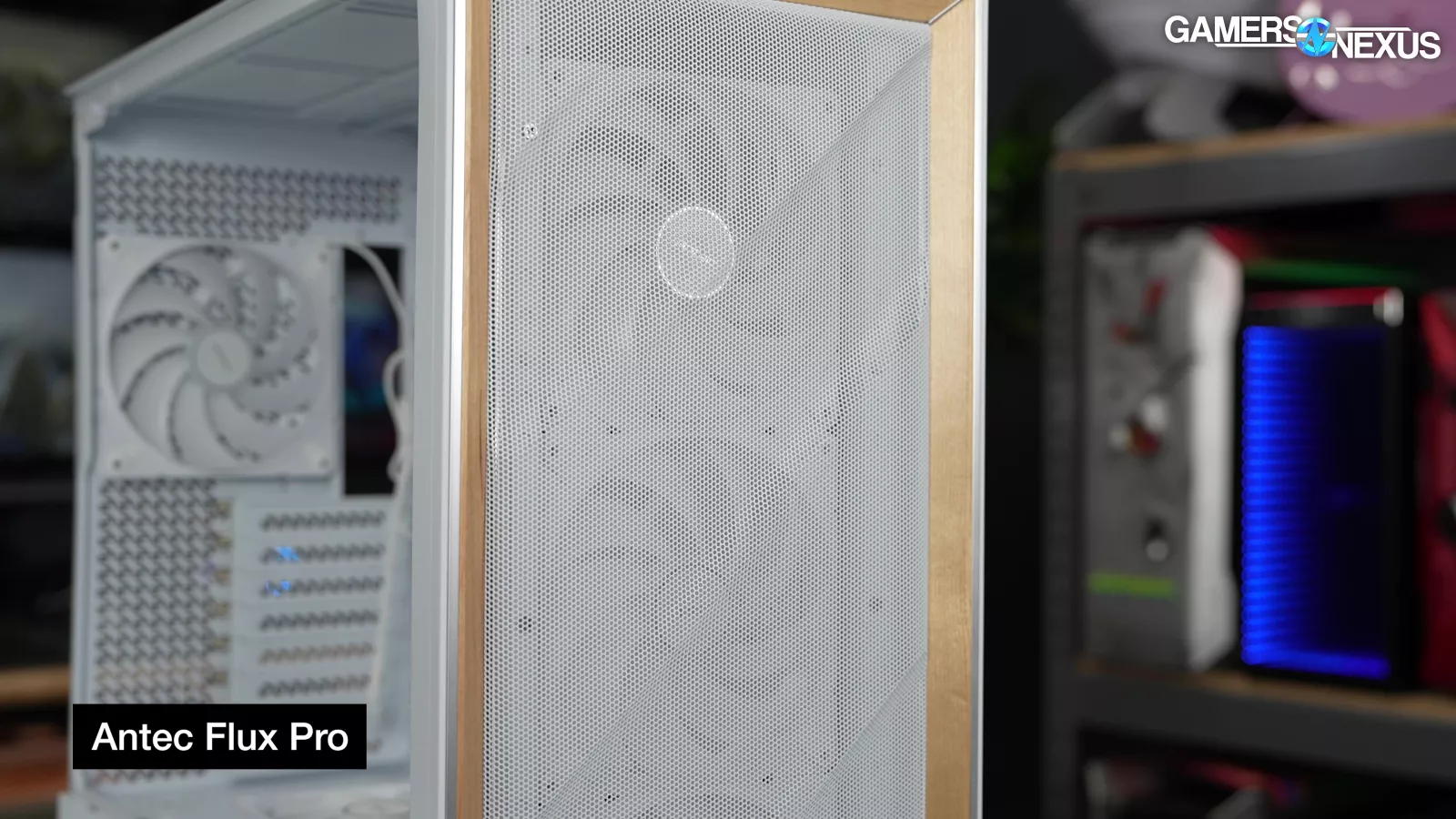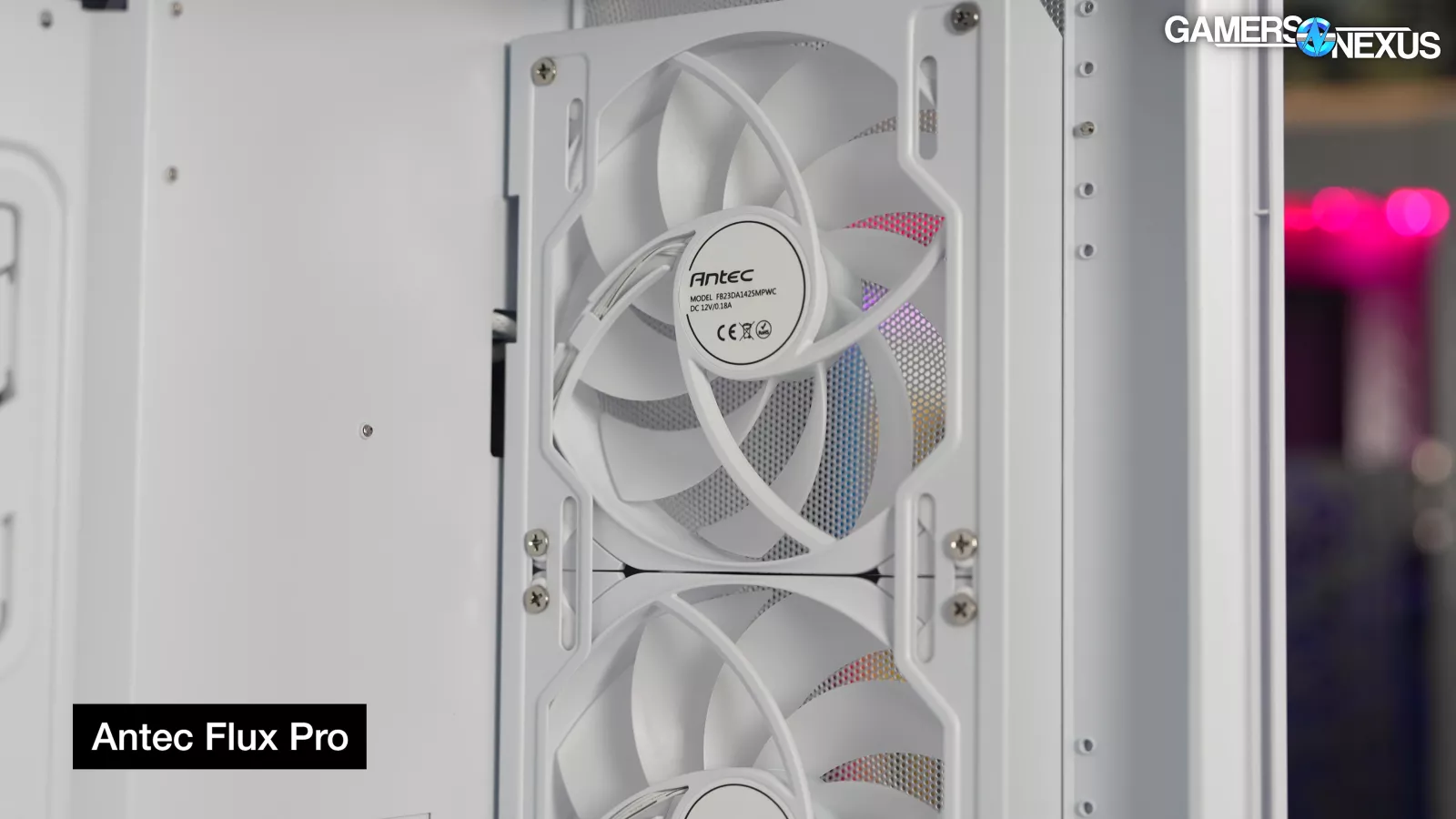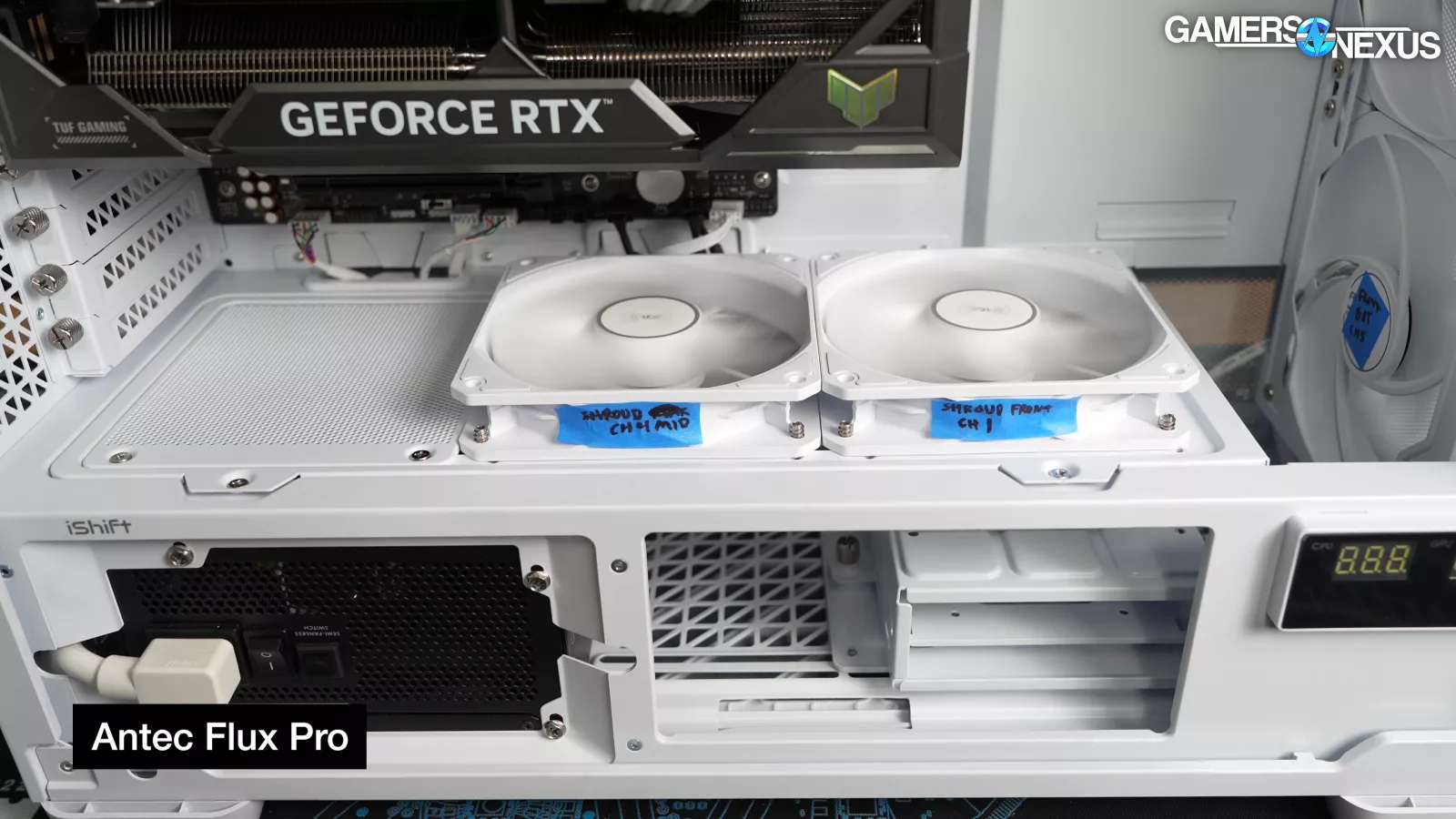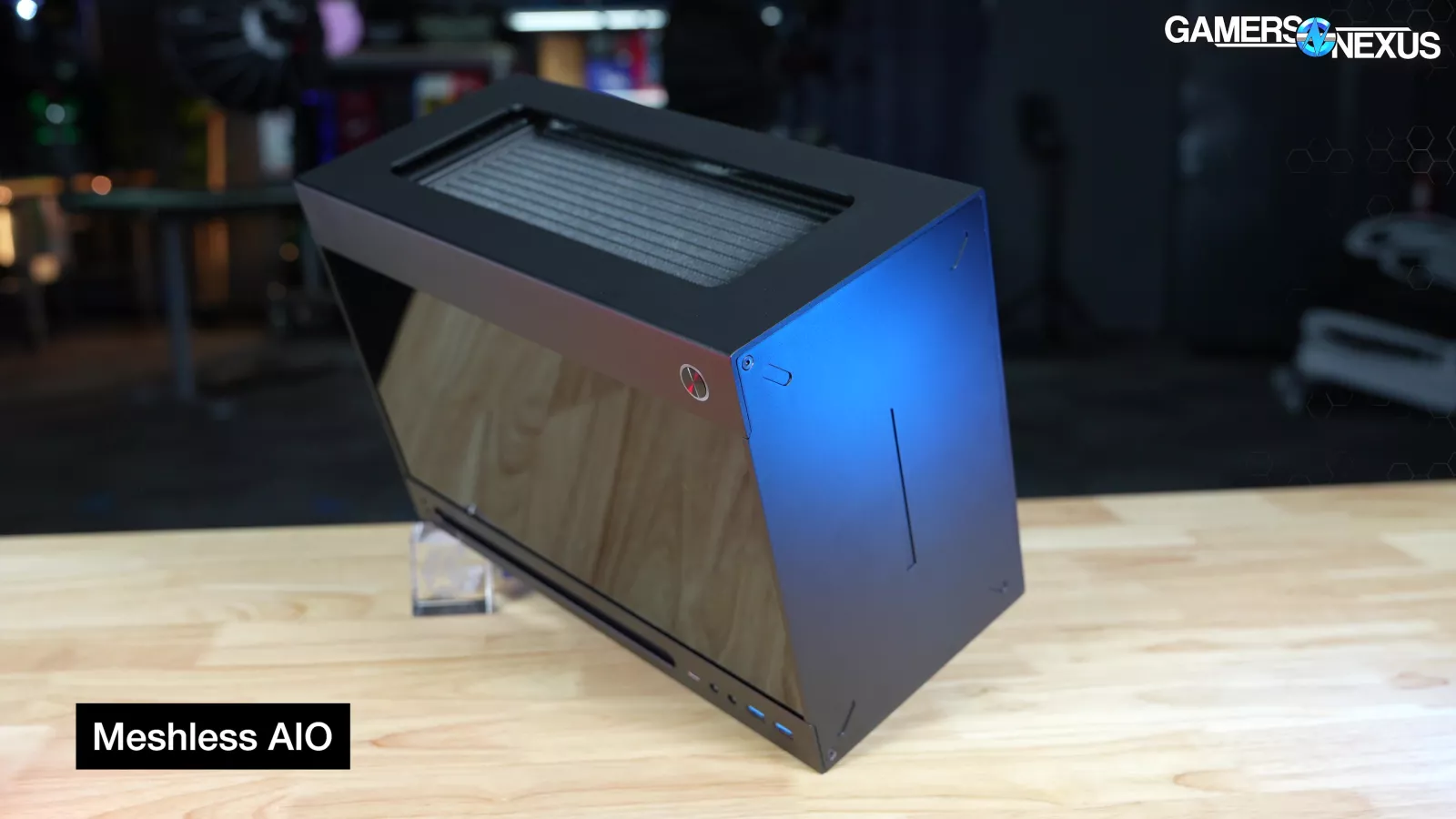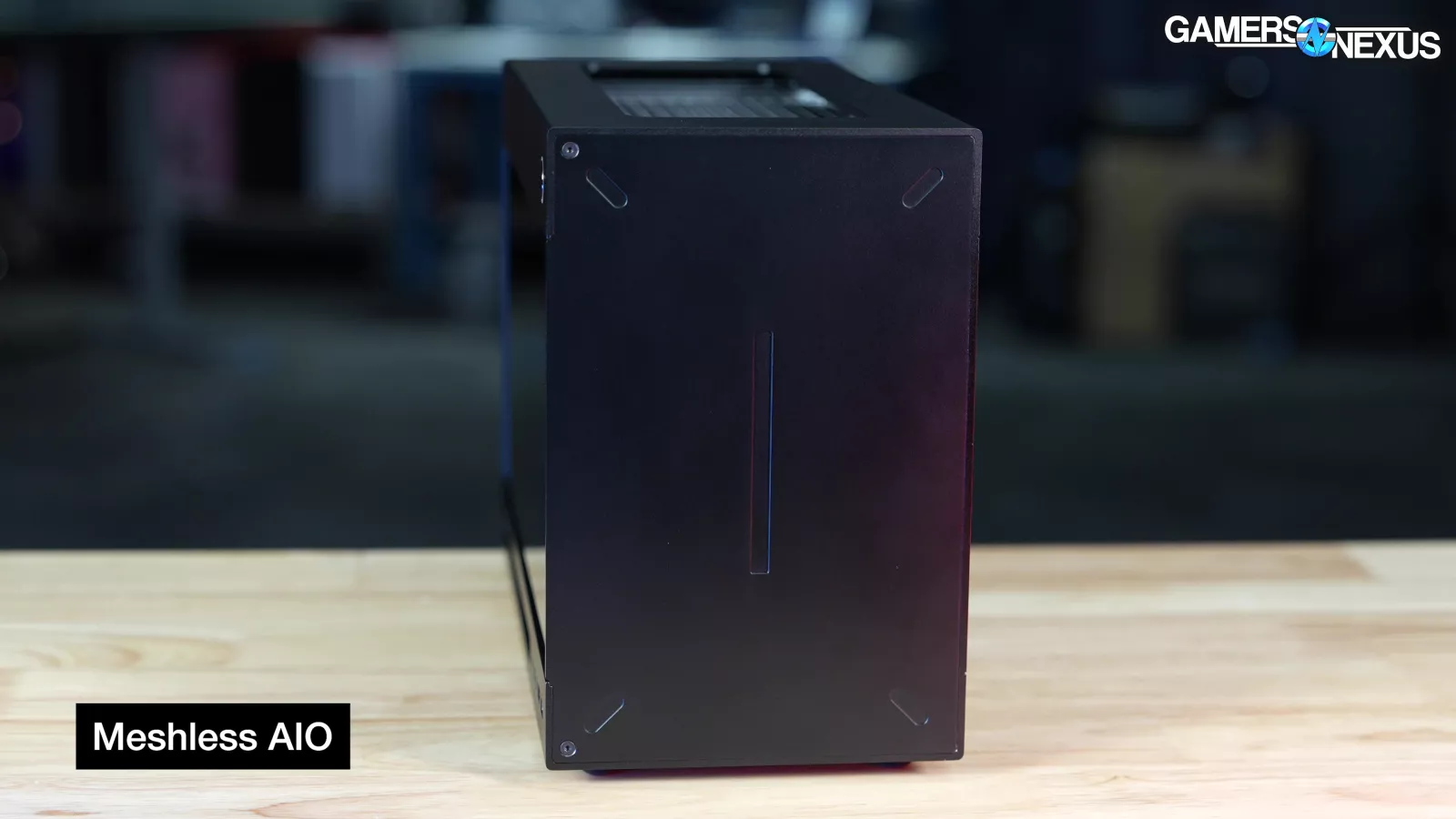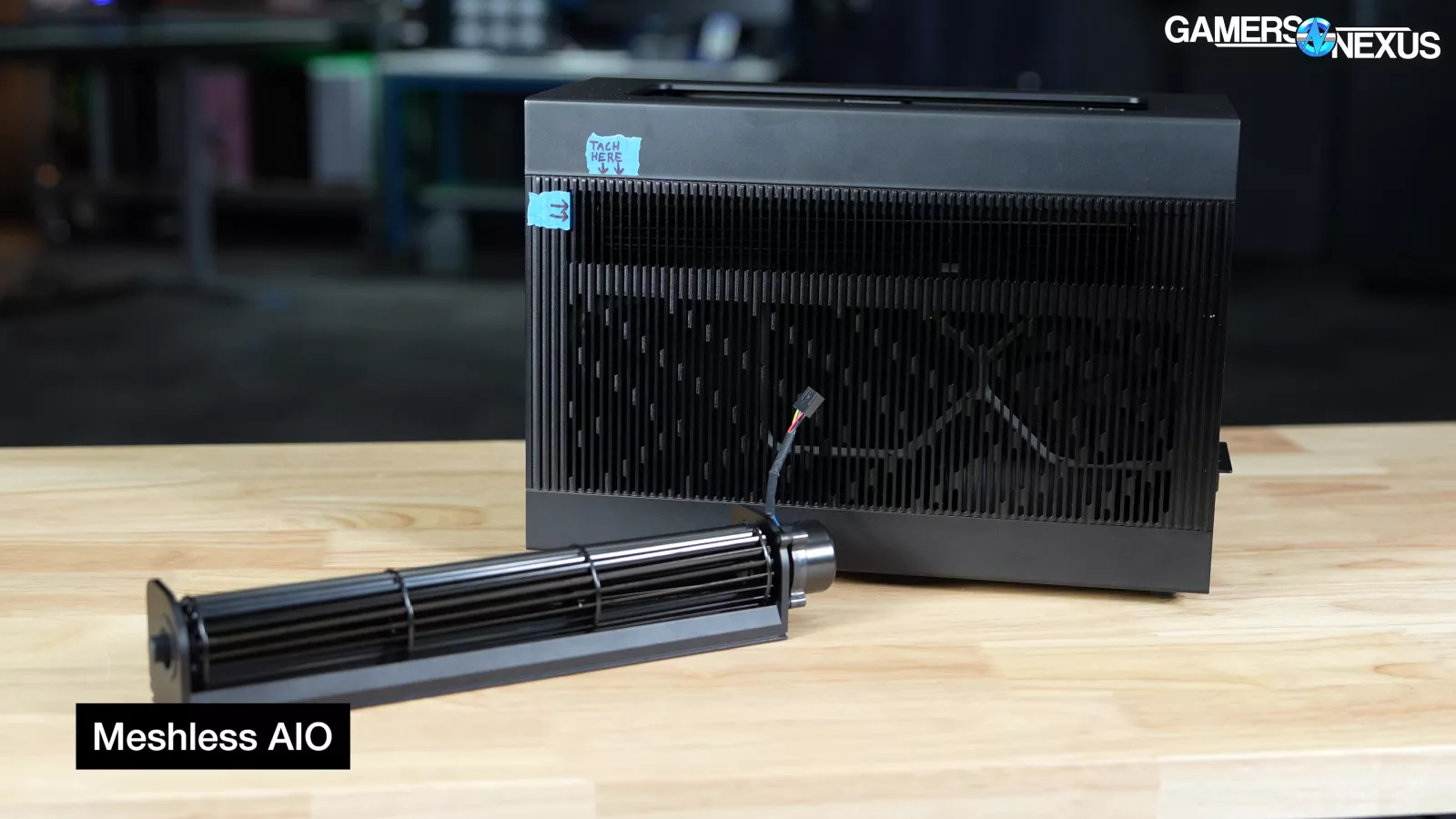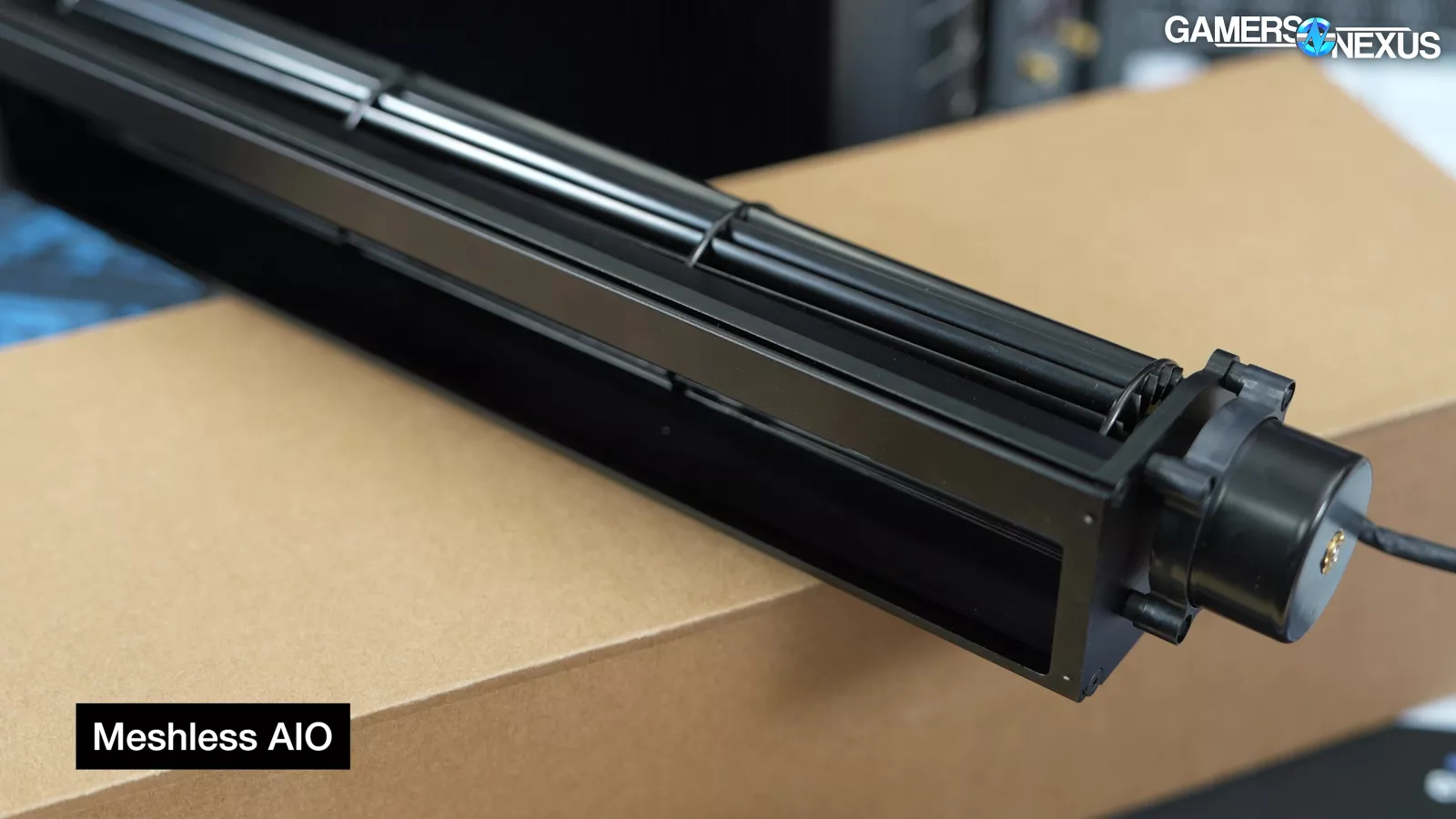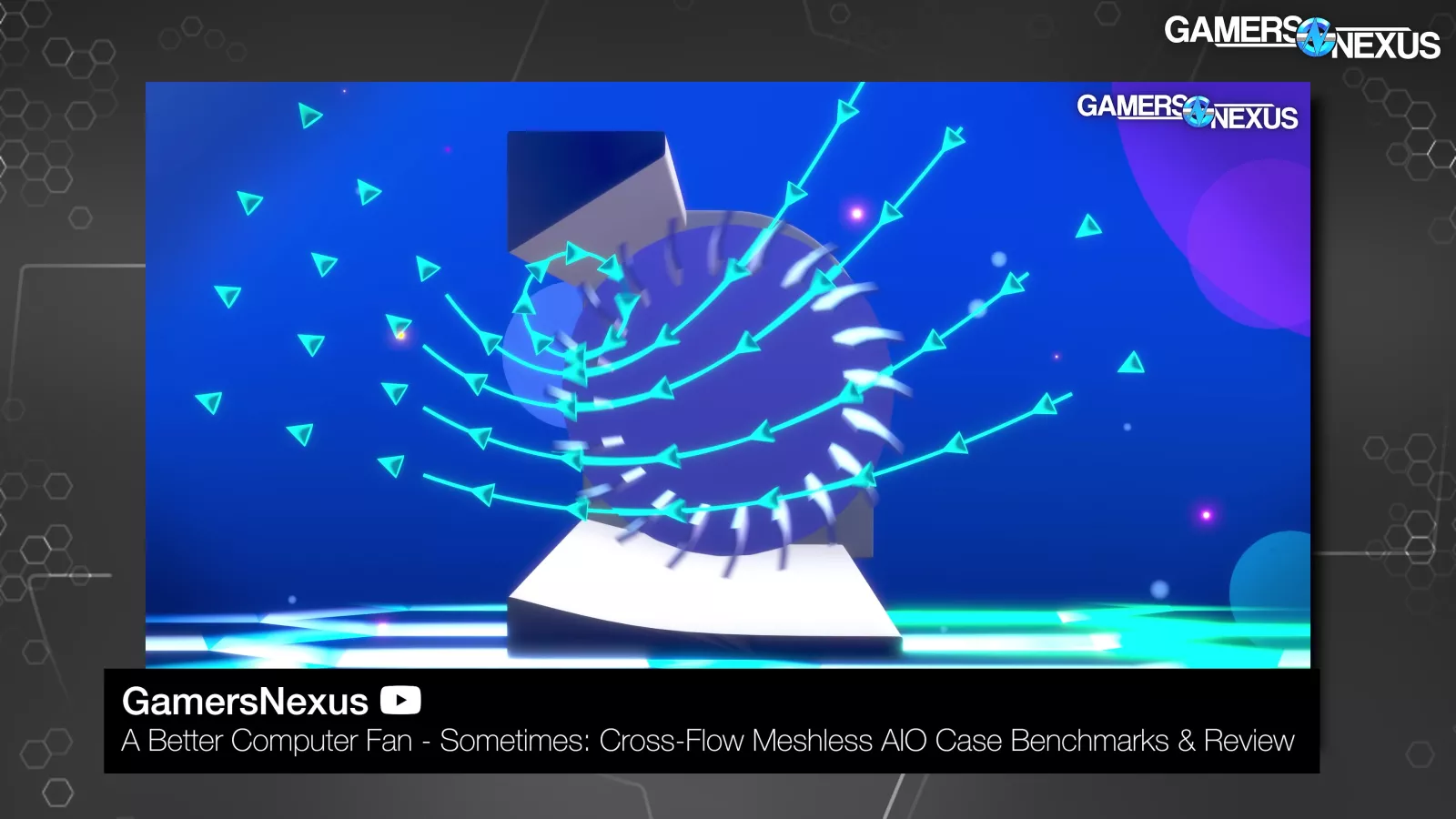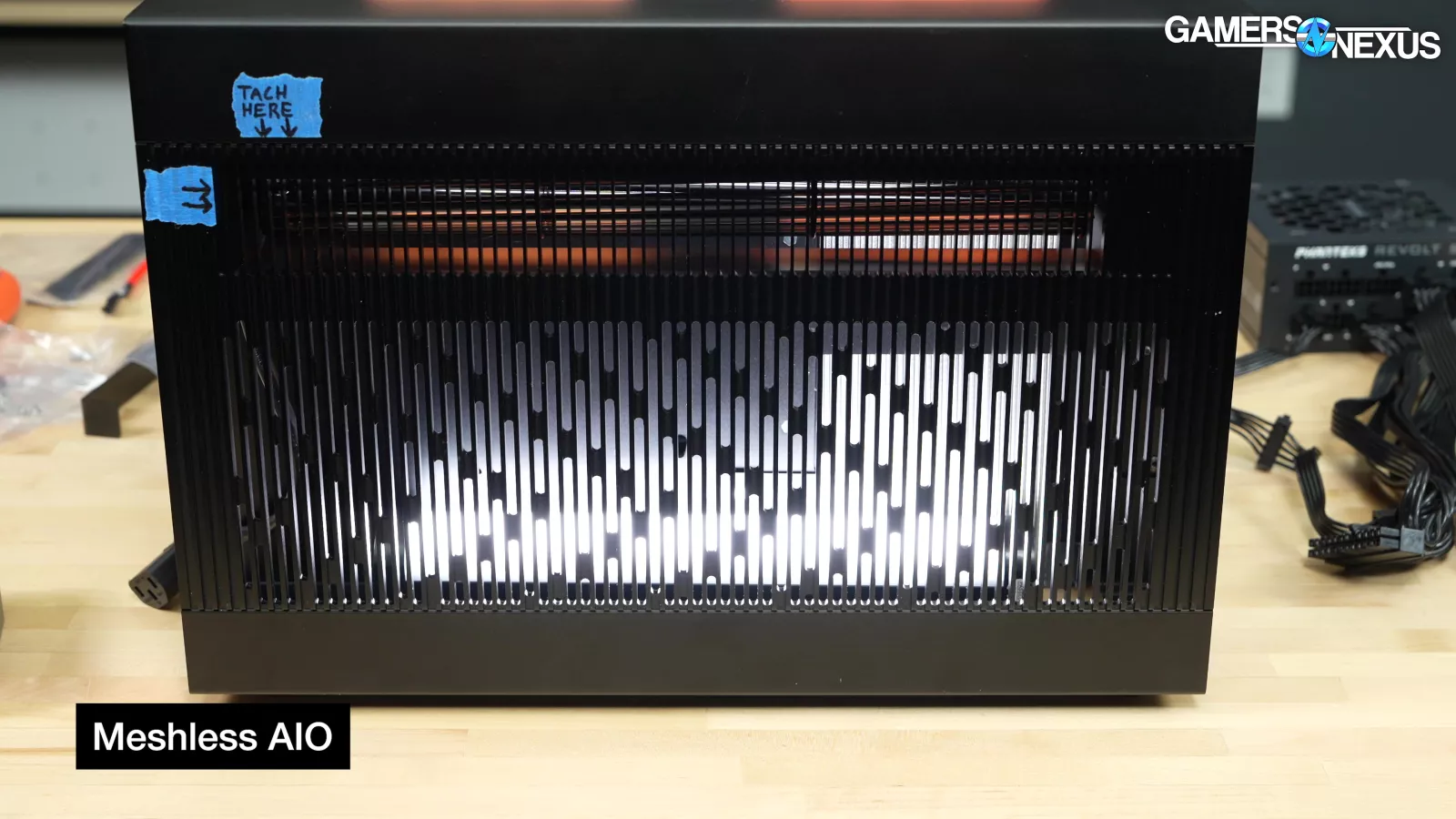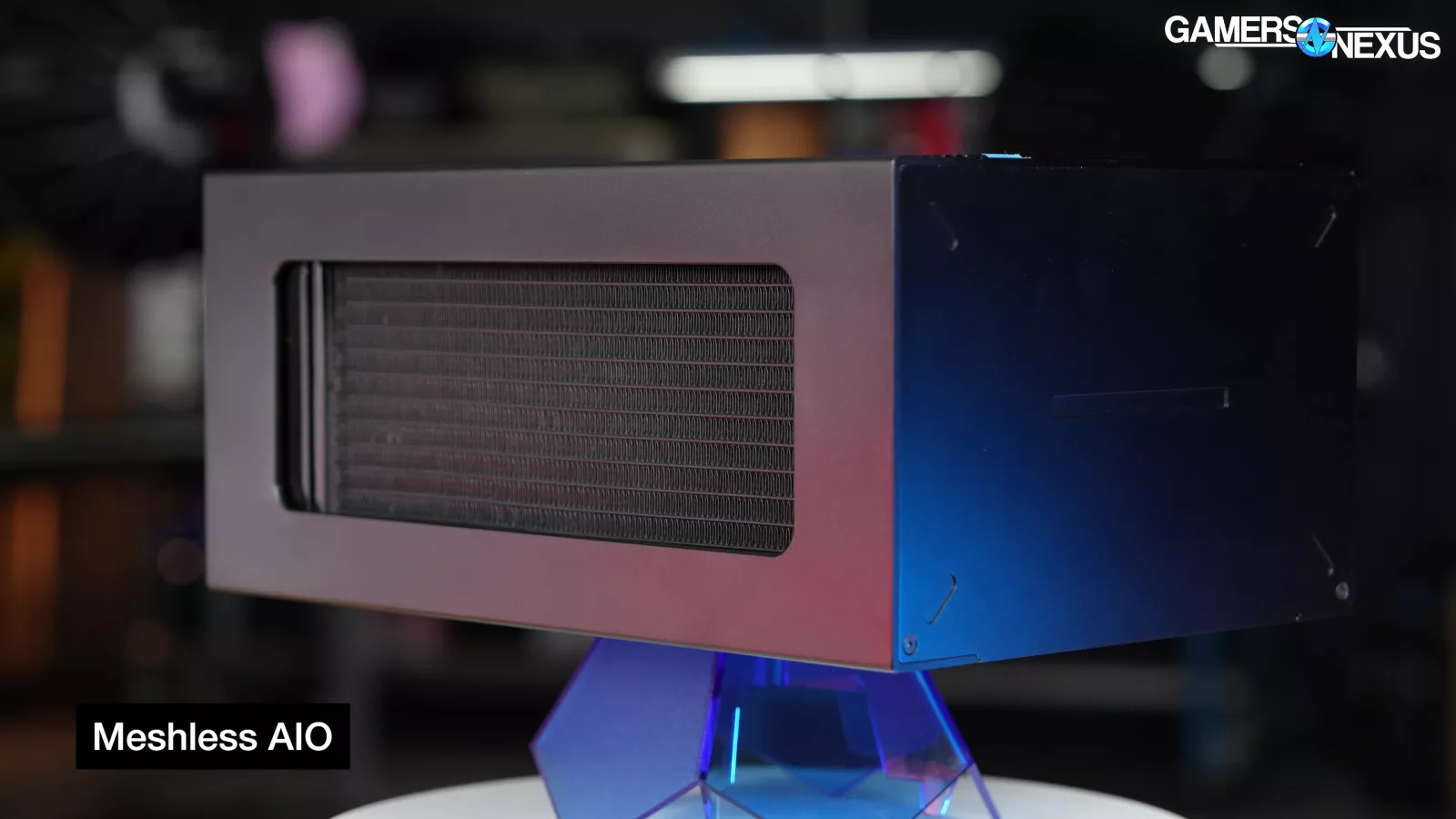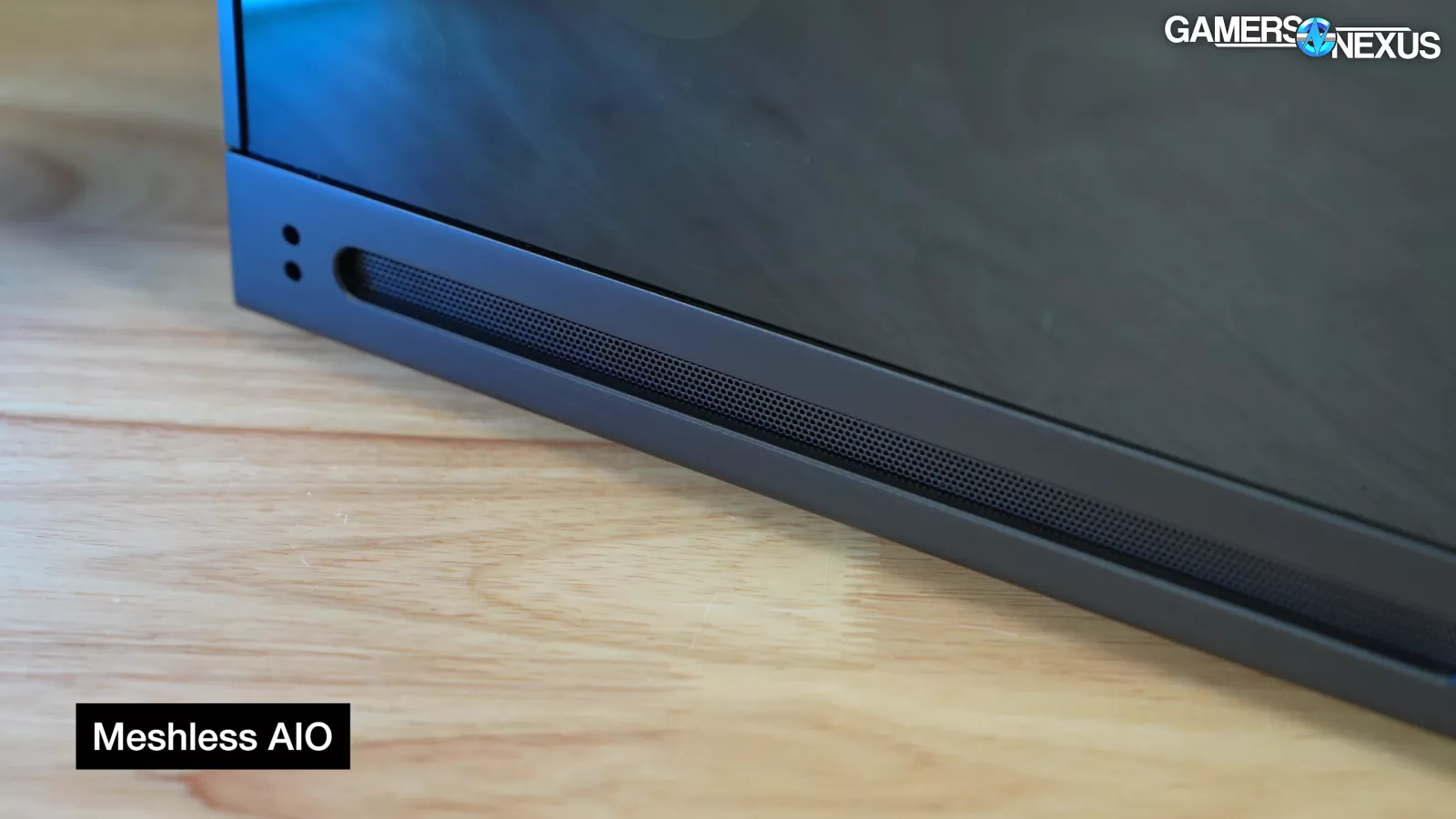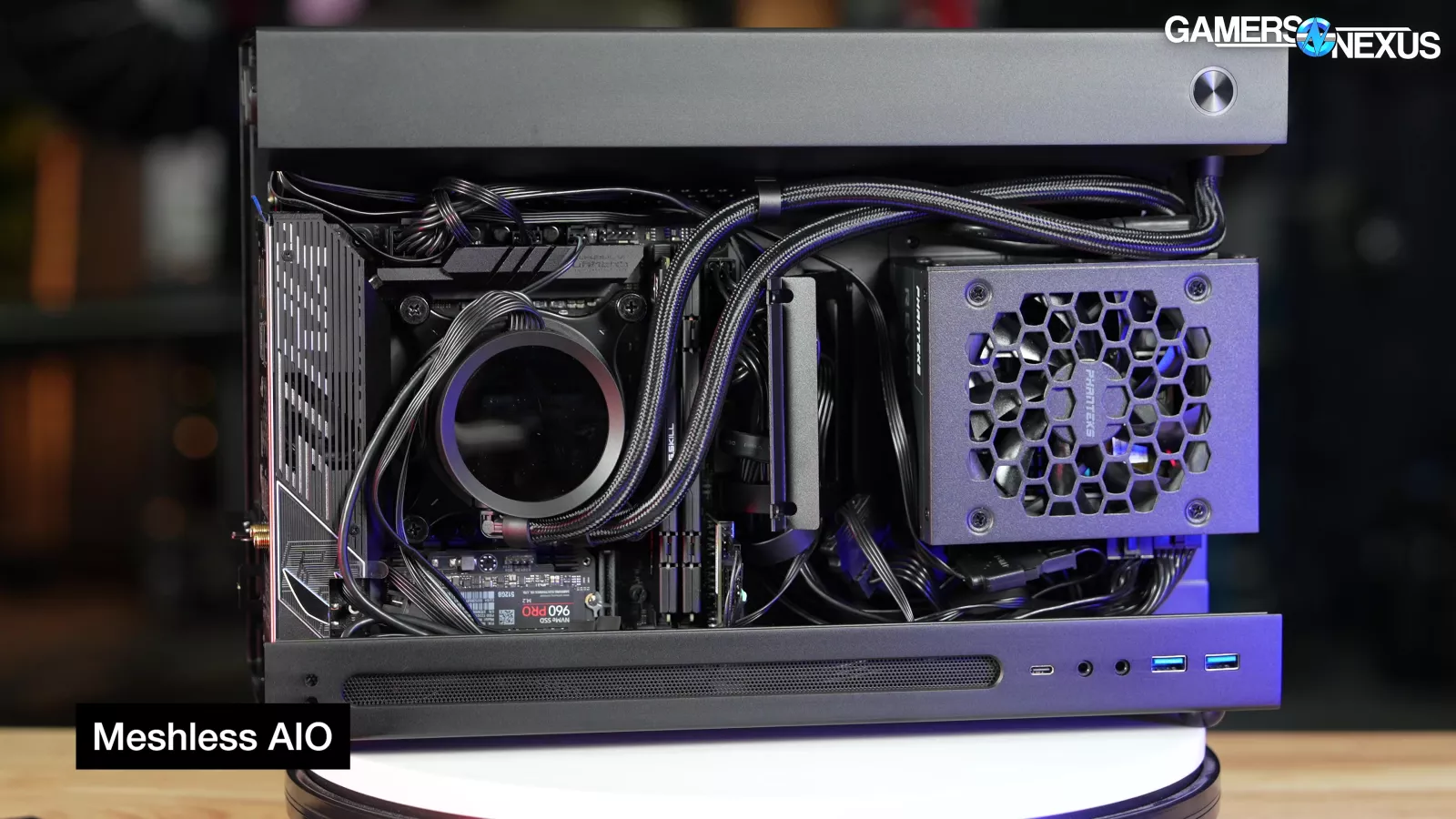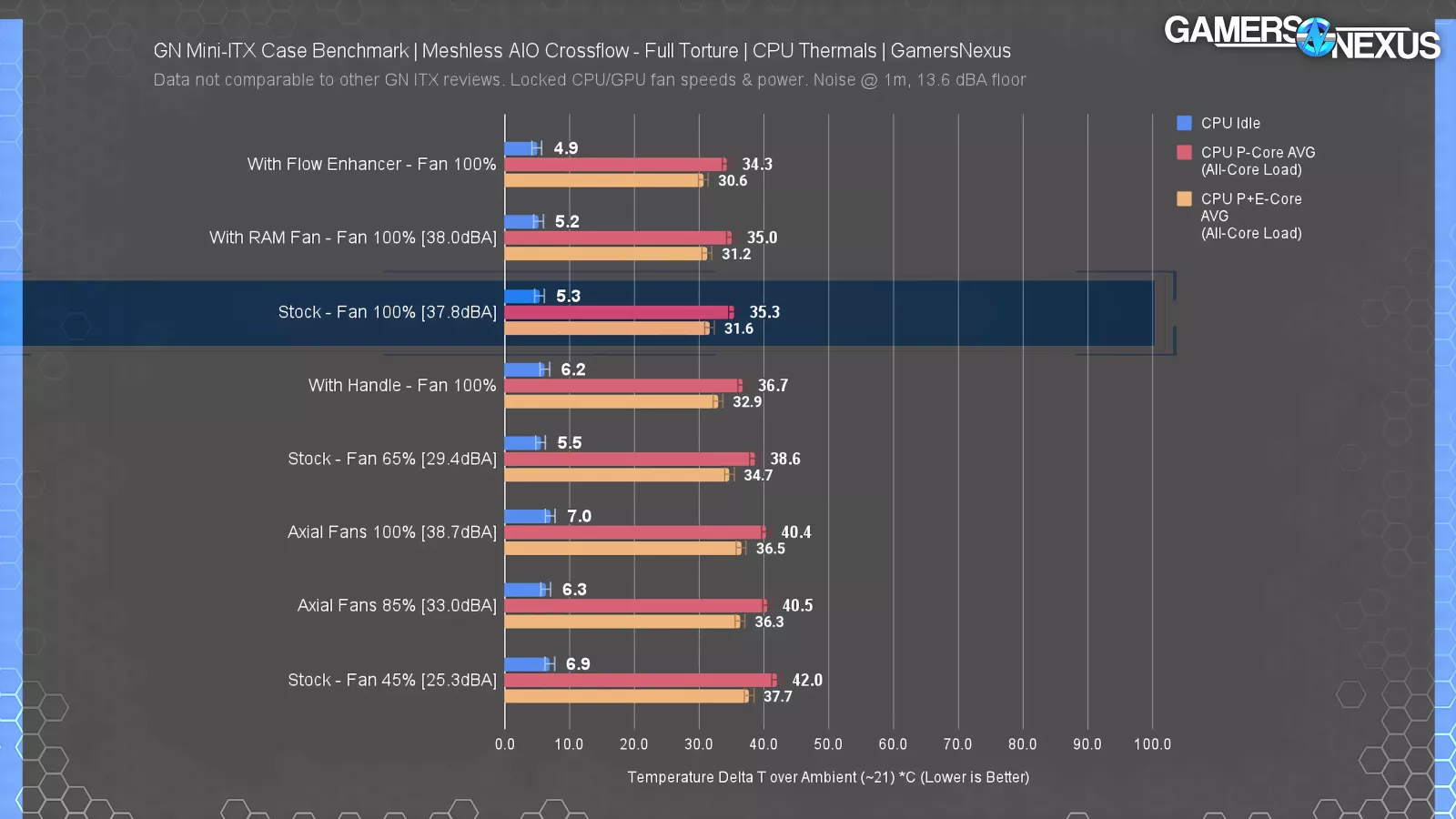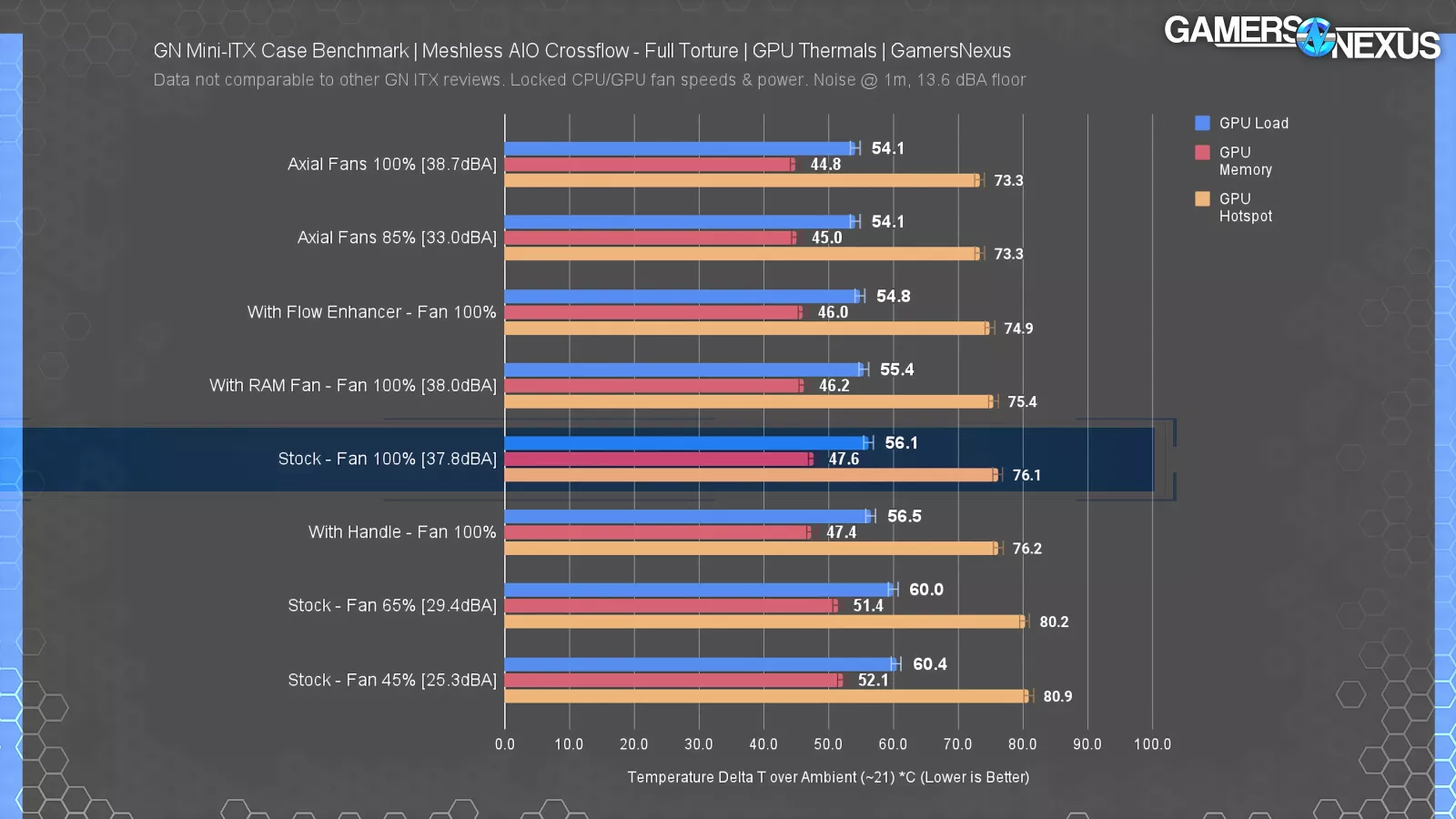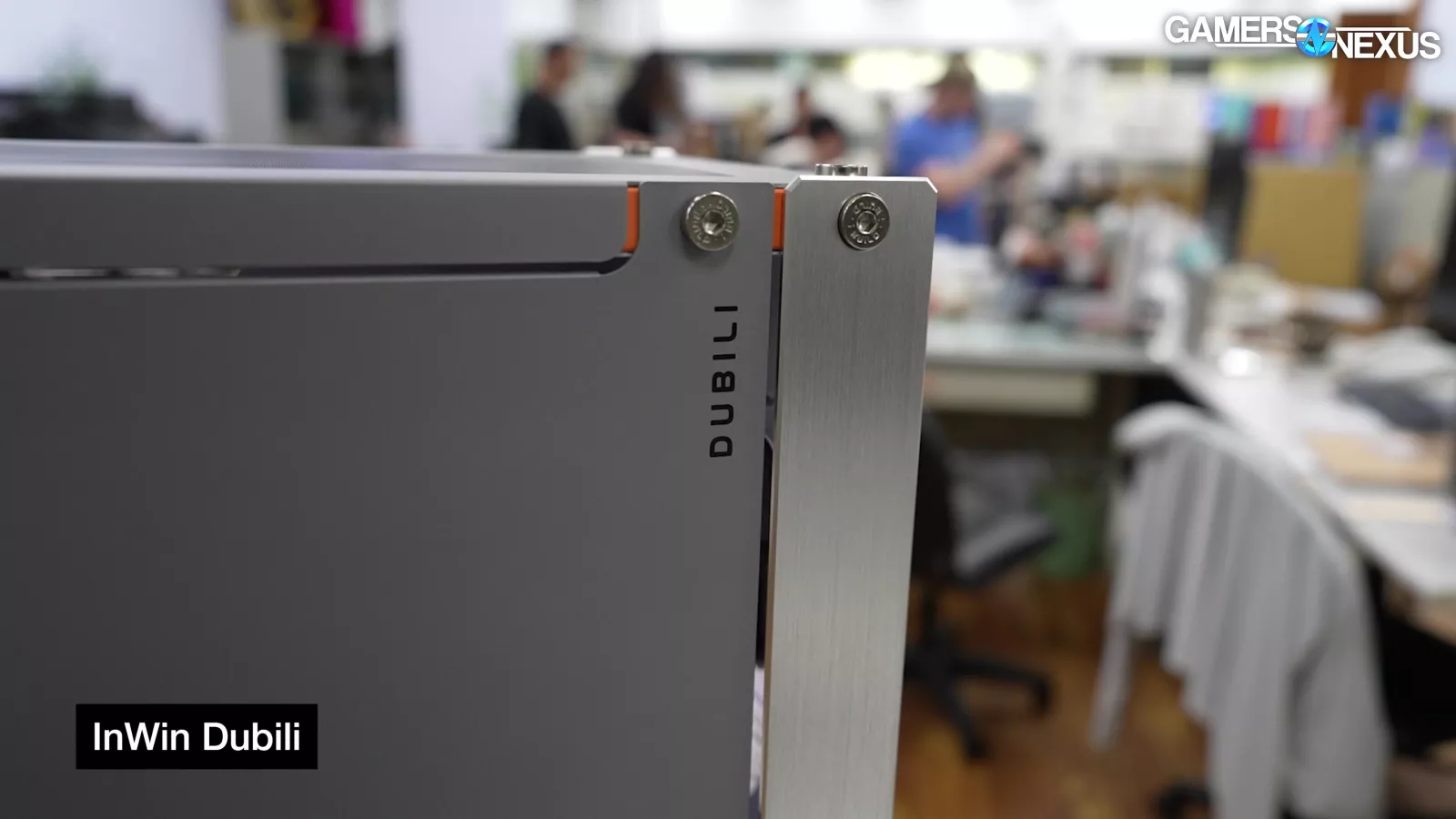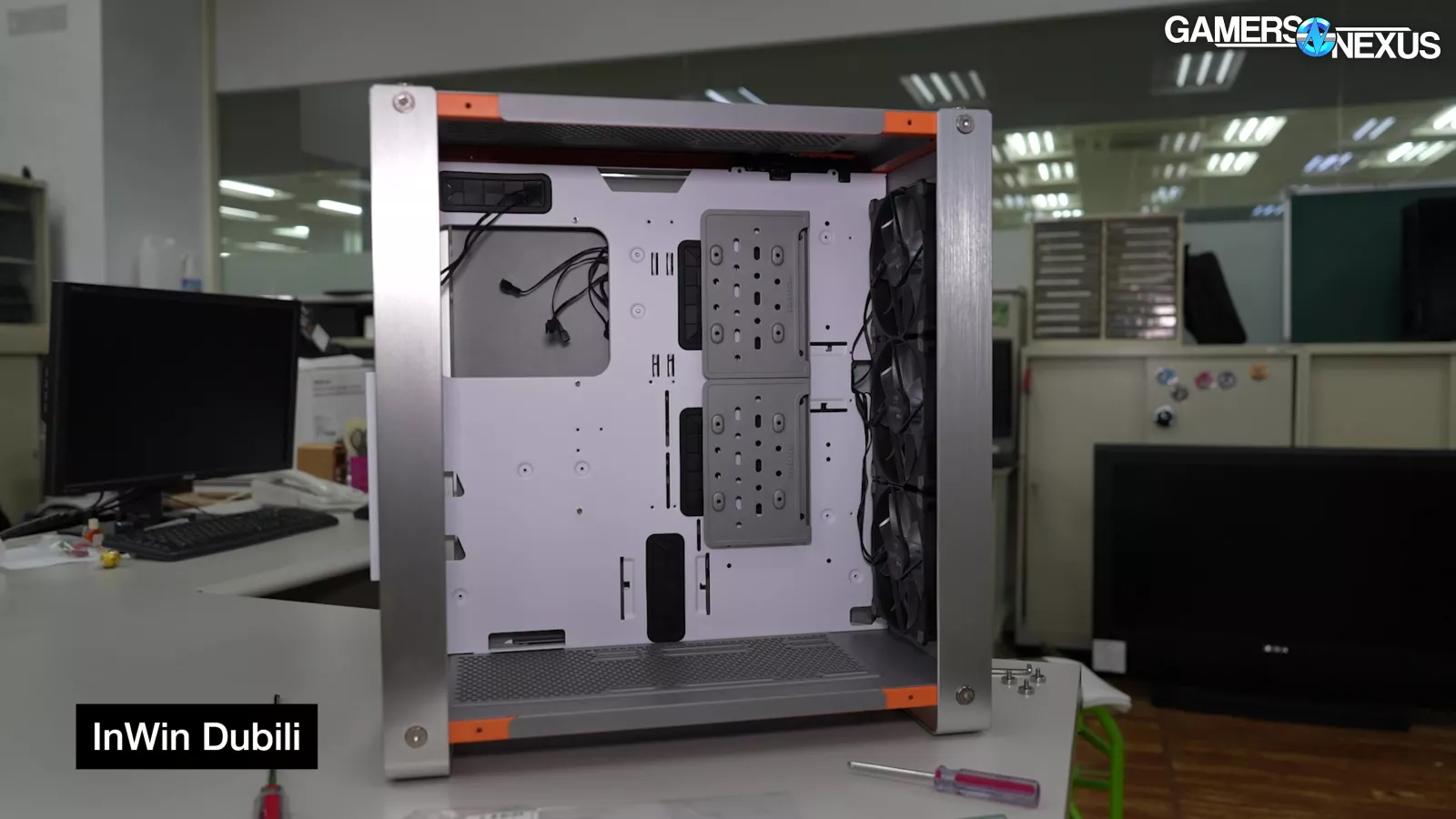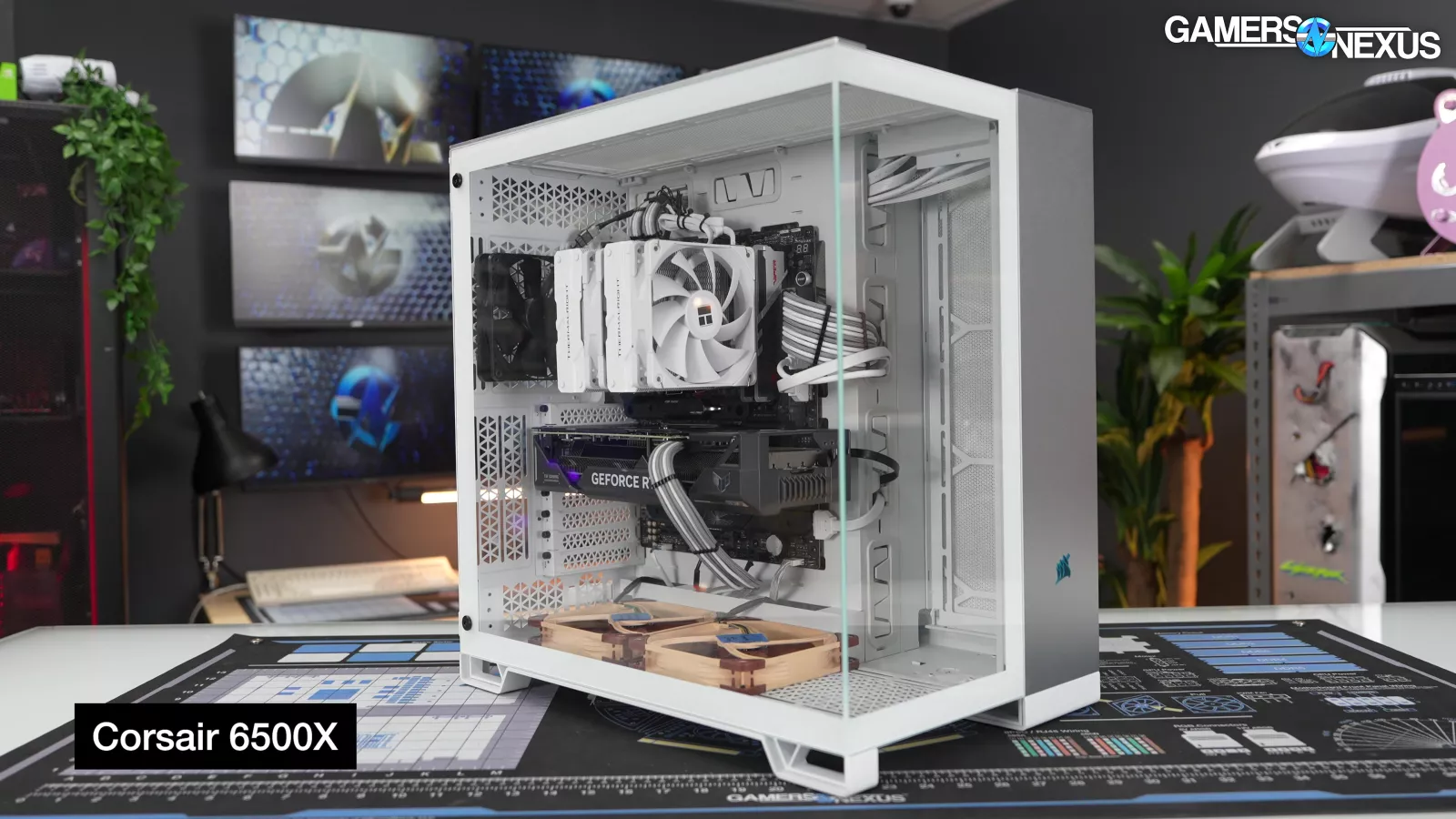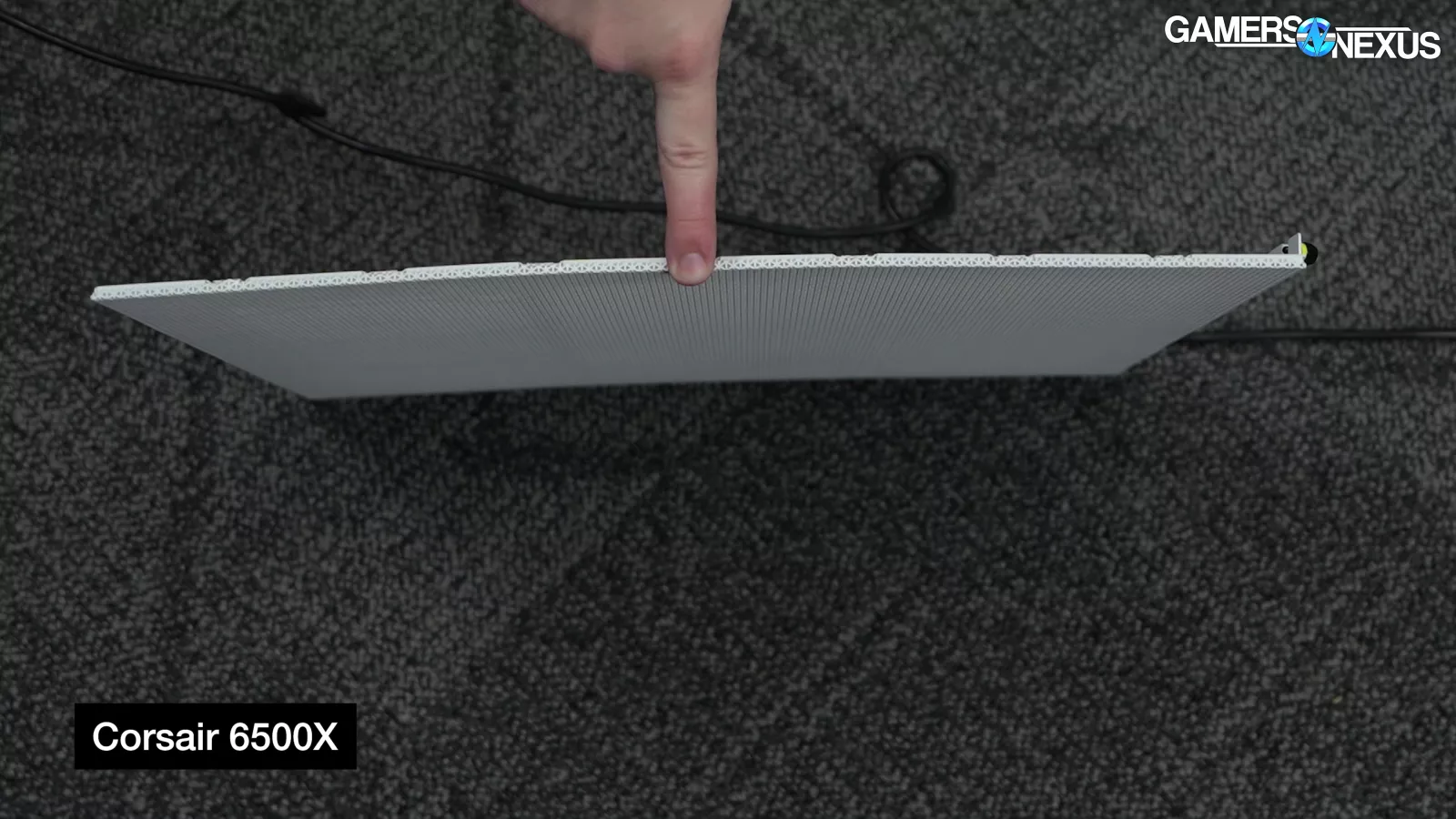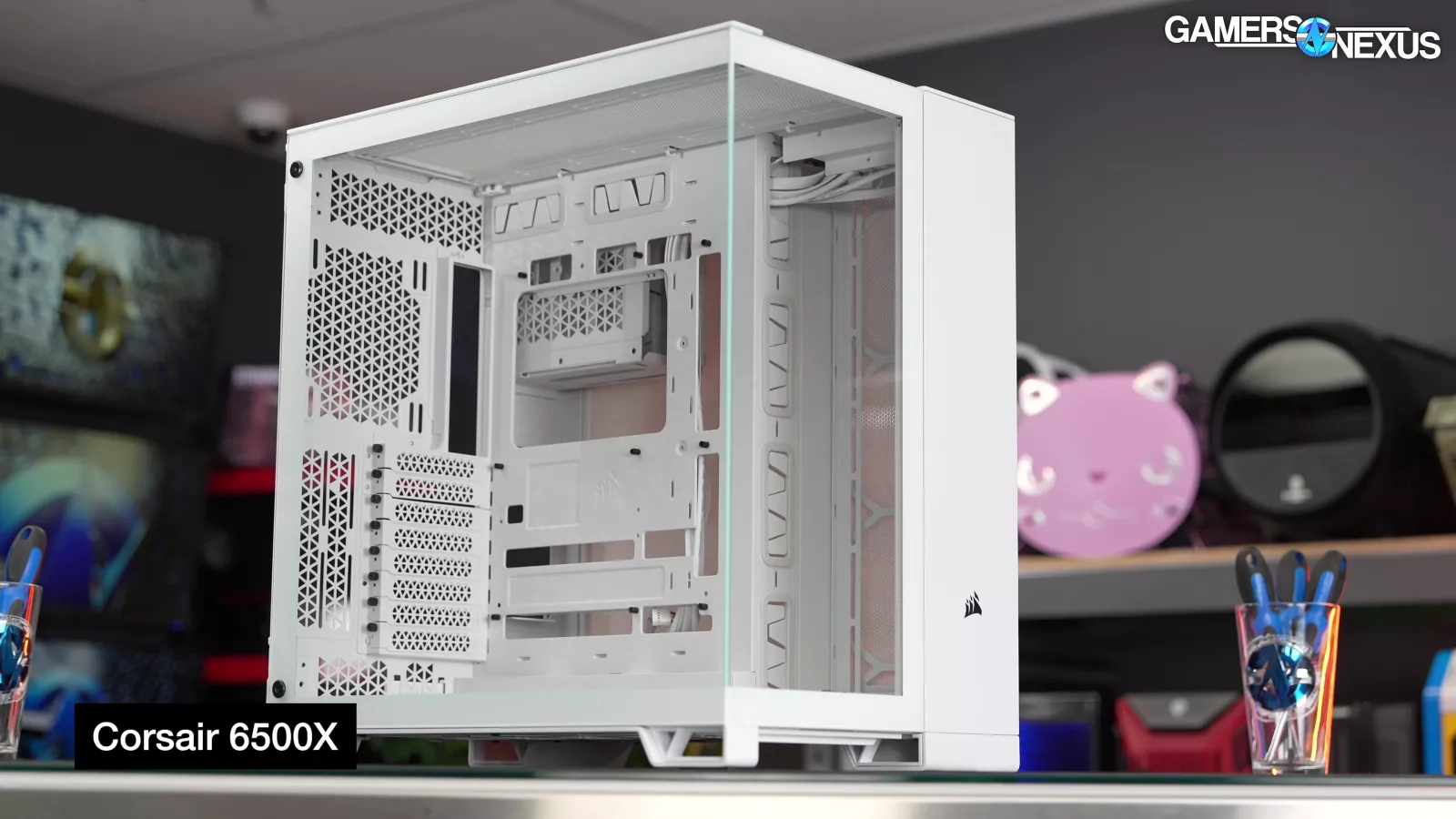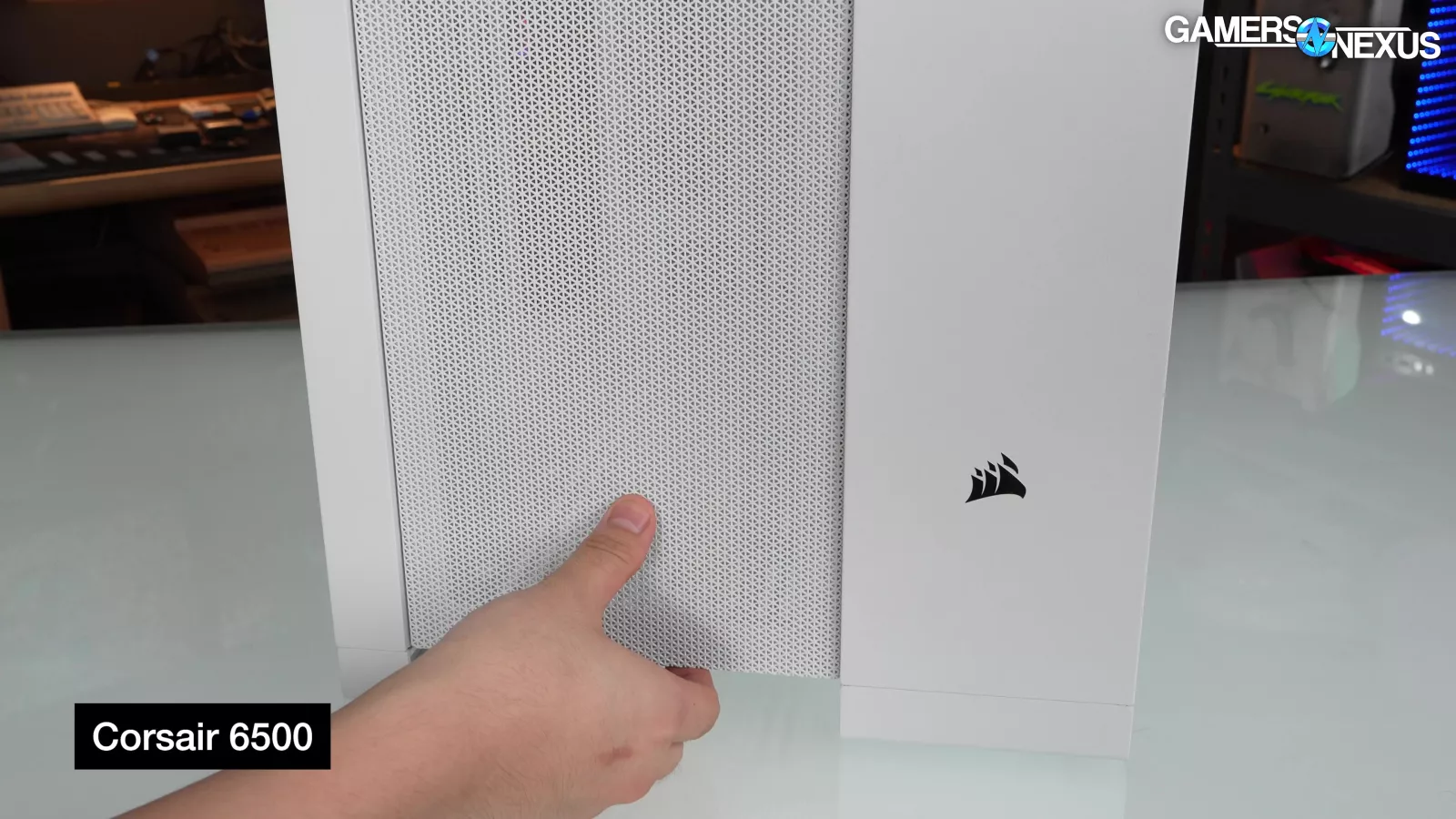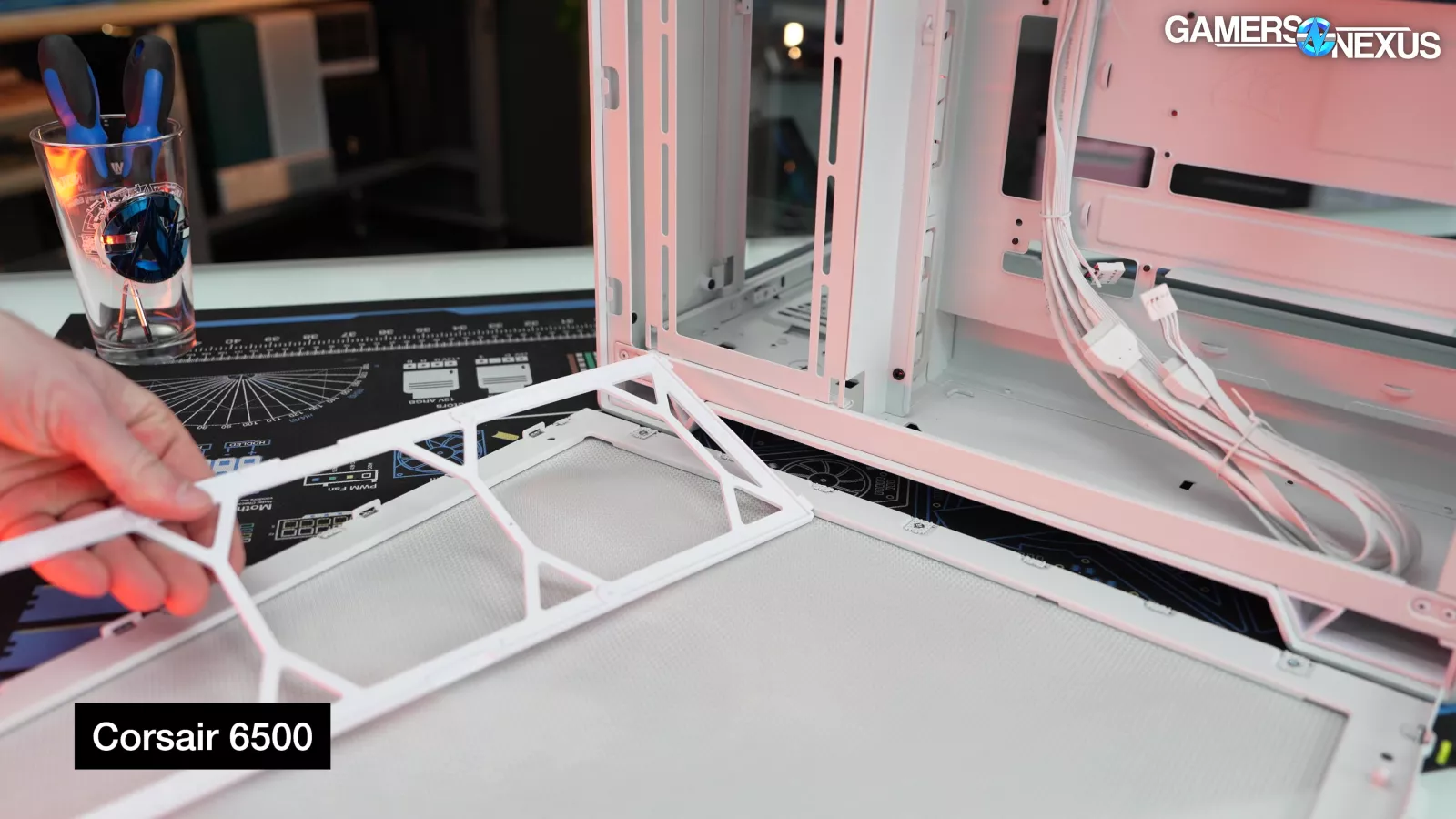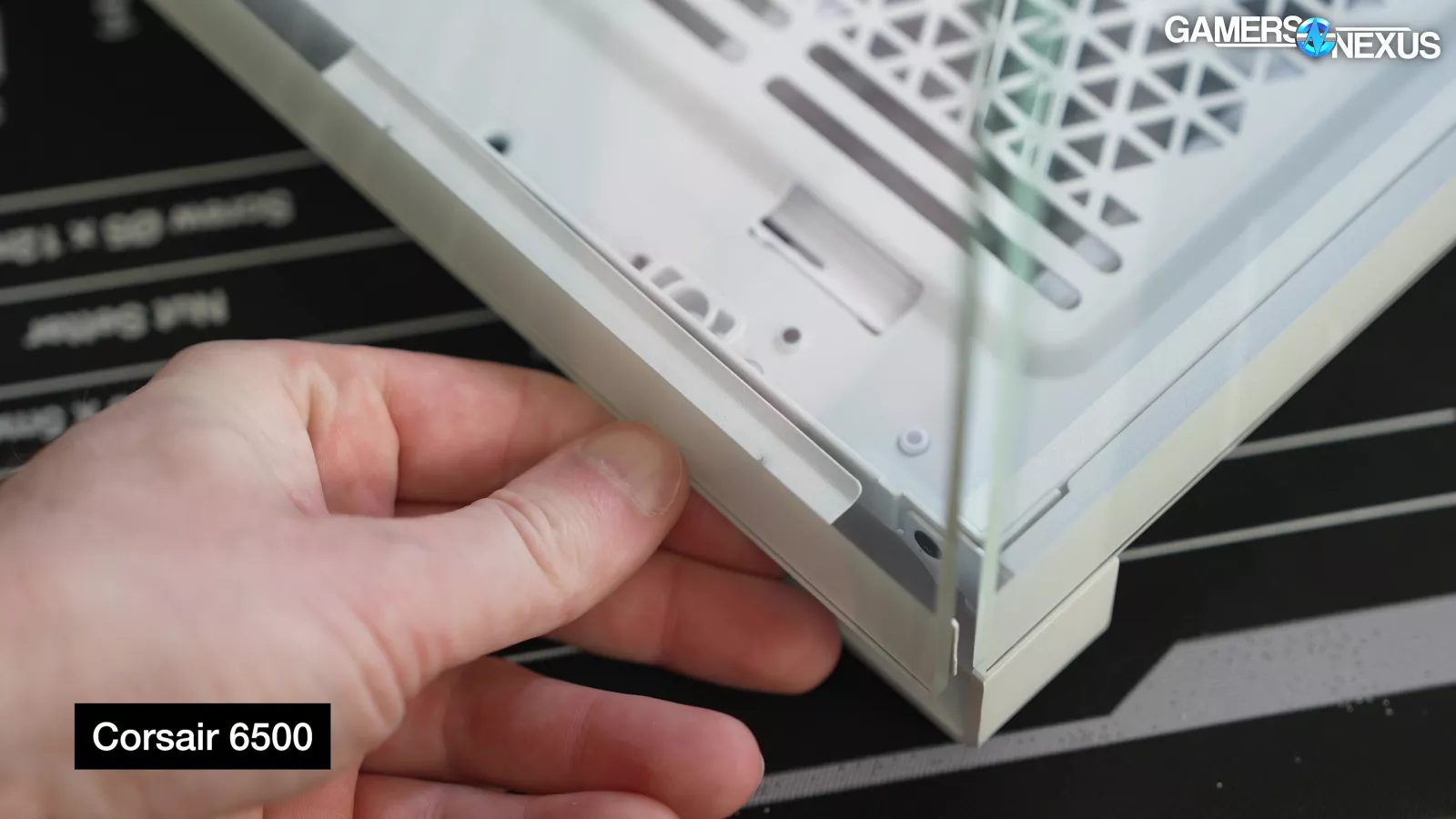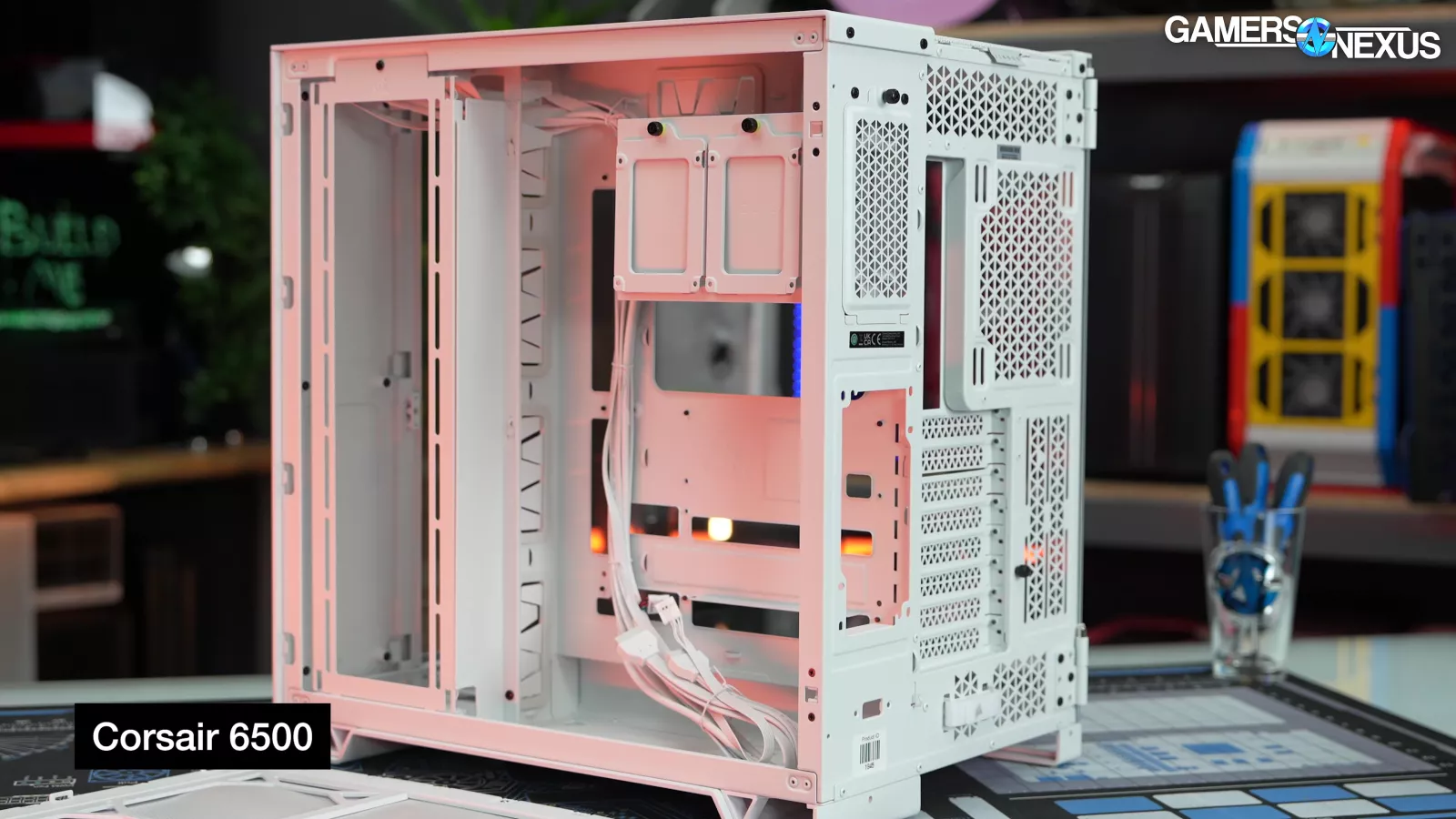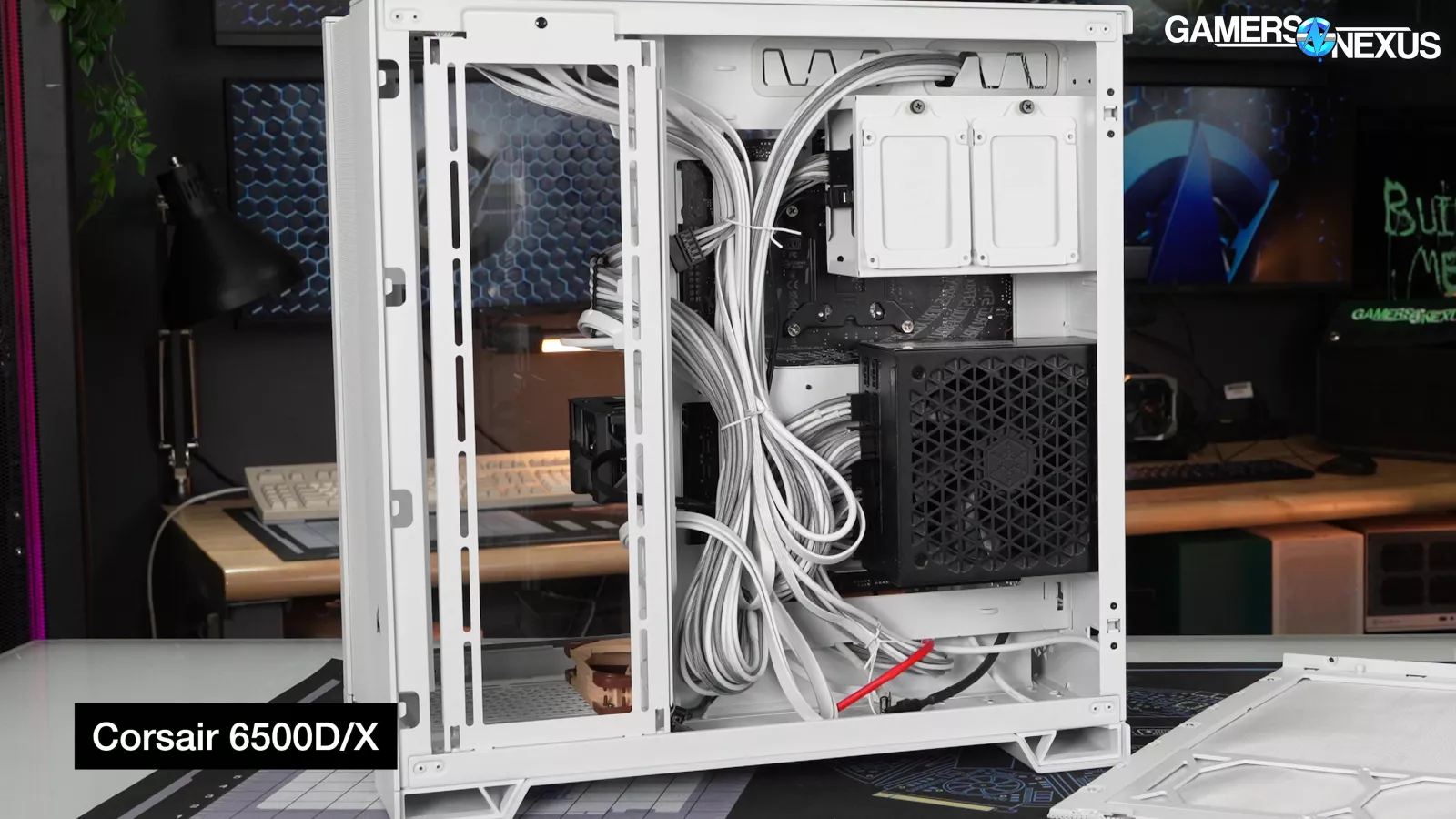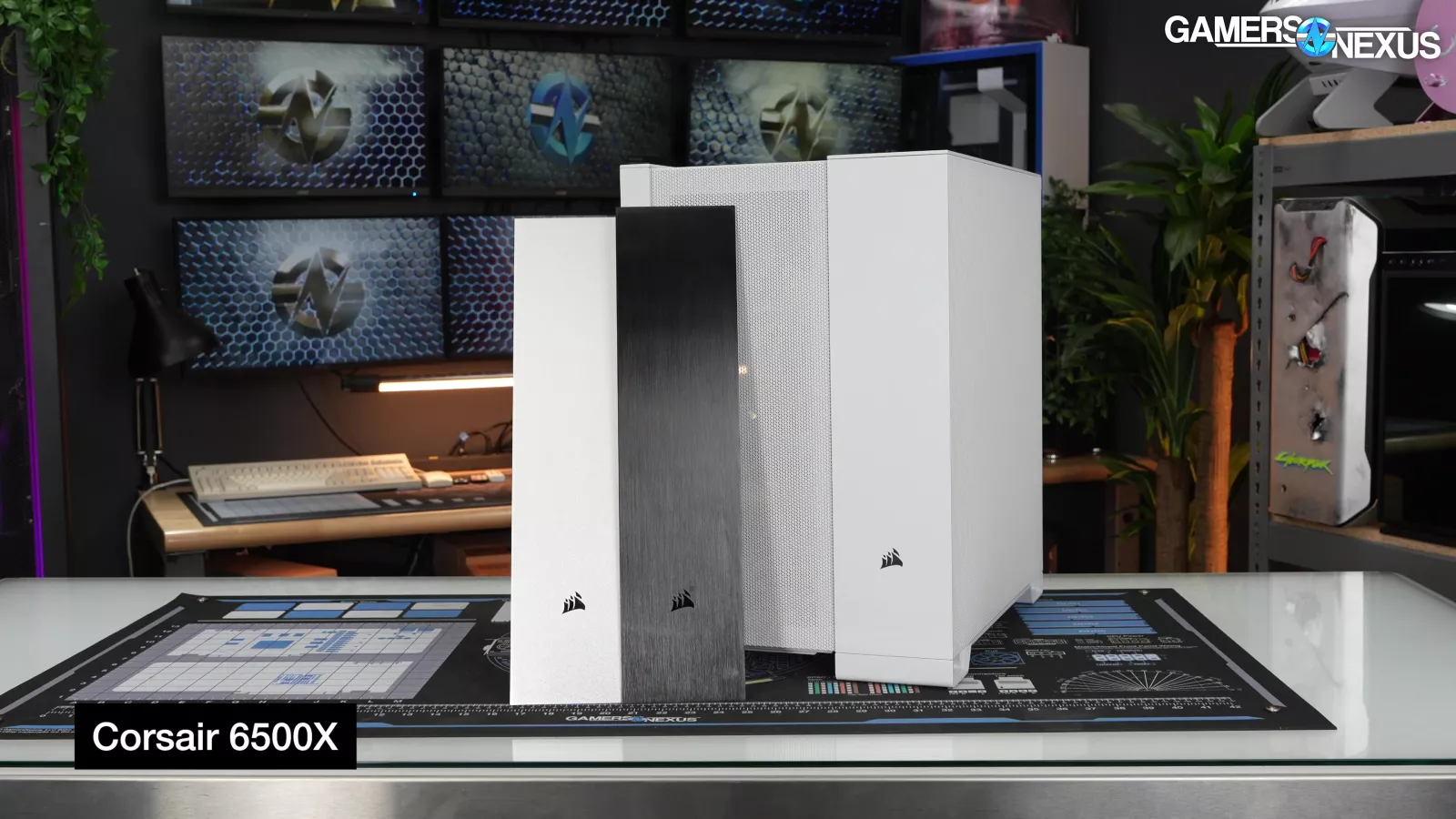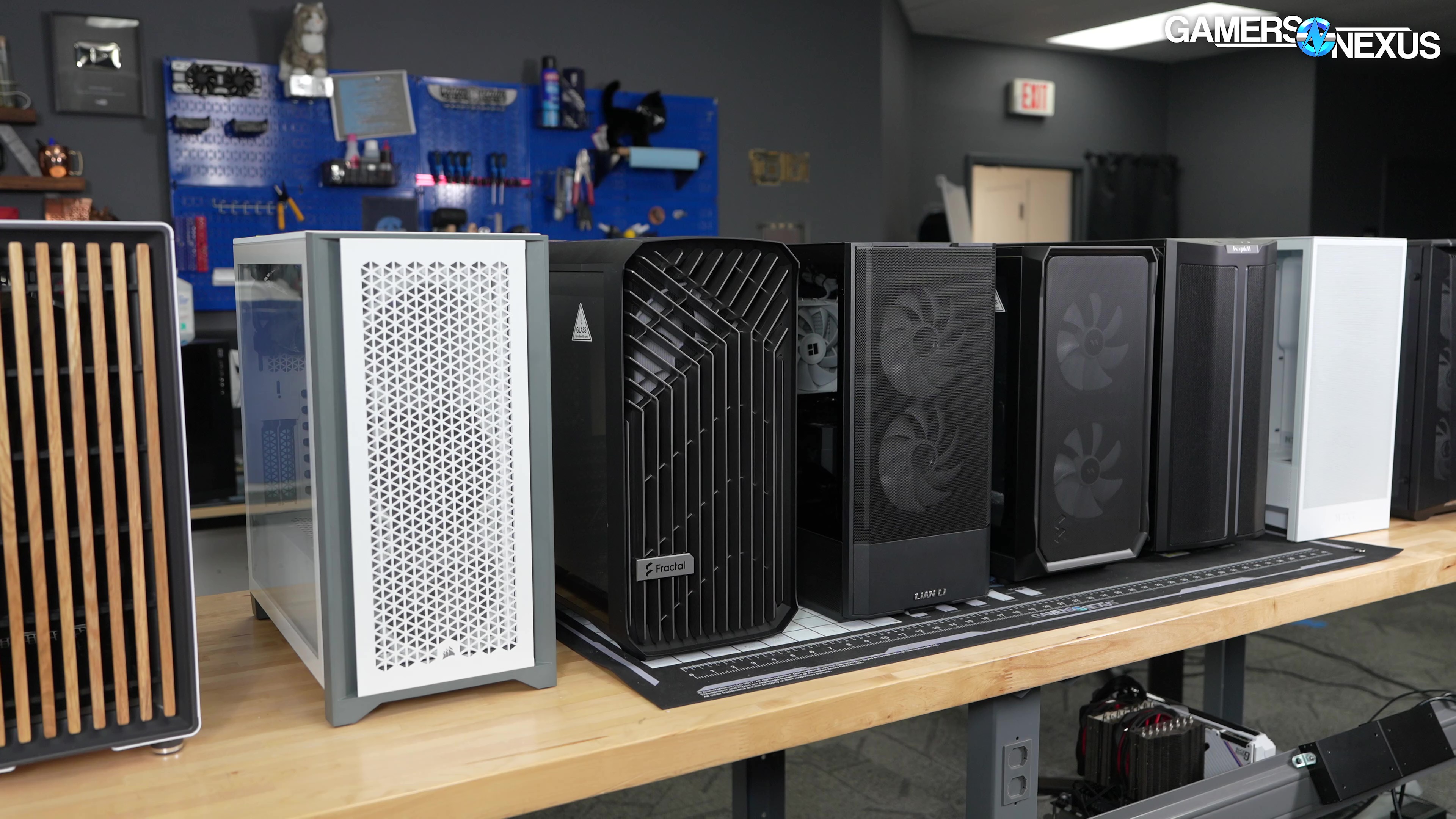
Our best cases round-up is back! We're looking at the best gaming PC cases for 2024, ranging from $80 to $800 and covering all aspects of custom PC building.
The Highlights
- Best Overall Case 2024: Fractal North & North XL
- Best Mechanical Design Case: HAVN HS 420
- Best Sub-$100 Case: Lian Li Lancool 207
- Best Mid-Range Case: Antec C8 ARGB
- Best Noise-Normalized Case Thermals: Antec Flux Pro
Table of Contents
- AutoTOC

Intro
We’re looking at the best cases available right now.
We broke back into case reviews this year and have added to our case collection. This round-up highlights the best cases we think are available in 2024 based on our thermal benchmarks, acoustic tests, build quality evaluation, and cable management testing.
This year was packed with excellent cases -- but of course, a few that were really problematic as well.
Editor's note: This was originally published on November 21, 2024 as a video. This content has been adapted to written format for this article and is unchanged from the original publication.
Credits
Host, Writing
Steve Burke
Writing
Patrick Lathan
Video Editing
Vitalii Makhnovets
Writing, Web Editing
Jimmy Thang
Setting Expectations
Welcome back to the Best Of Round-Up series. These are our favorite pieces to run annually and help you quickly get back into PC components if you haven’t been paying attention, but also give us a reason to go back through all the cases we’ve tested recently and remember what was the best.
These are meant to be more of a fly-over story in the round-up series to help simplify and highlight the key points. If you want the full in-depth reviews with all the nuance, check the links in the description below. We’ve linked each case review and have also provided all the usual affiliate links with them.
We already published Best CPUs and the same thing applies here: Sometimes, the best case or CPU in 2024 might be something that launched in a previous year. We look at the total market and what the best options are now, not just what launched this year. As a reminder as well, we took about a year off of case reviews in 2023, so we launched back into it heavy this year and we’re excited to be back to the Best Of series for something positive.
Let’s get into it.
Overview: Best PC Cases for 2024
Best Overall Case 2024: Fractal North & North XL
Fractal North: Original review | Newegg | Amazon
Fractal North XL: Original review | Newegg | Amazon
Awarding the best overall case is difficult this year, which is a good problem to have -- that means cases don’t suck. This category requires a strong offering on all fronts: Value, thermal performance, acoustic performance, aesthetics, build quality, ease-of-installation features, and cable management.
We’re giving it to the Fractal North & North XL. Although other cases are superior in some individual situations, like the Antec Flux Pro (by a slim margin) in thermals or the HAVN HS 420 in mechanical aspects, the North and North XL are masterful executions of a standard computer case.
This is bolstered by prices that have been lower in recent weeks, typically down around $125 to $140 for the North (watch our review).
The Fractal North was the first case to successfully kick-off the wooden trend at scale, with everyone else in the industry scrambling to follow. InWin gets credit for initially attempting this years ago, but it failed to find a way to bring it to market and execute. Fractal pulled it all together and cleaned up the idea.
The North comes with either a glass or mesh side panel, which includes options for additional side mounts to further boost cooling performance. Actually, in our recent tour of Wendell’s offices, you can see such a configuration for one of his machines.
Fractal’s fan support on the XL is also effectively whatever you want it to be: The company cleverly uses standard hole spacing for its rear ventilation (and even PCIe slot covers and top of the power supply shroud) so that you could mount a fan basically anywhere you want in the case. The cooling options are really opened up because of this.
Ease-of-installation options are also great: Because the top panel so easily slides off to remove, and because Fractal doesn’t put a ton of other metal in the way, you can get clear access through the top of the case for builds. The extra width in the XL also makes larger radiators easier to work with up top, reducing board clearance issues.
The North XL (read our review) is what we prefer to the North, mostly for its increased size for easier building and for our style of build, but both are good takes on the theme. Visually, the wood look doesn’t look like the slapped-on Vinyl style we see in other cases. It looks more purposeful. Fractal also does great work mixing different tone wood coloring with different panel coloring, including matching the black case with gold accents and the white case with silver accents.
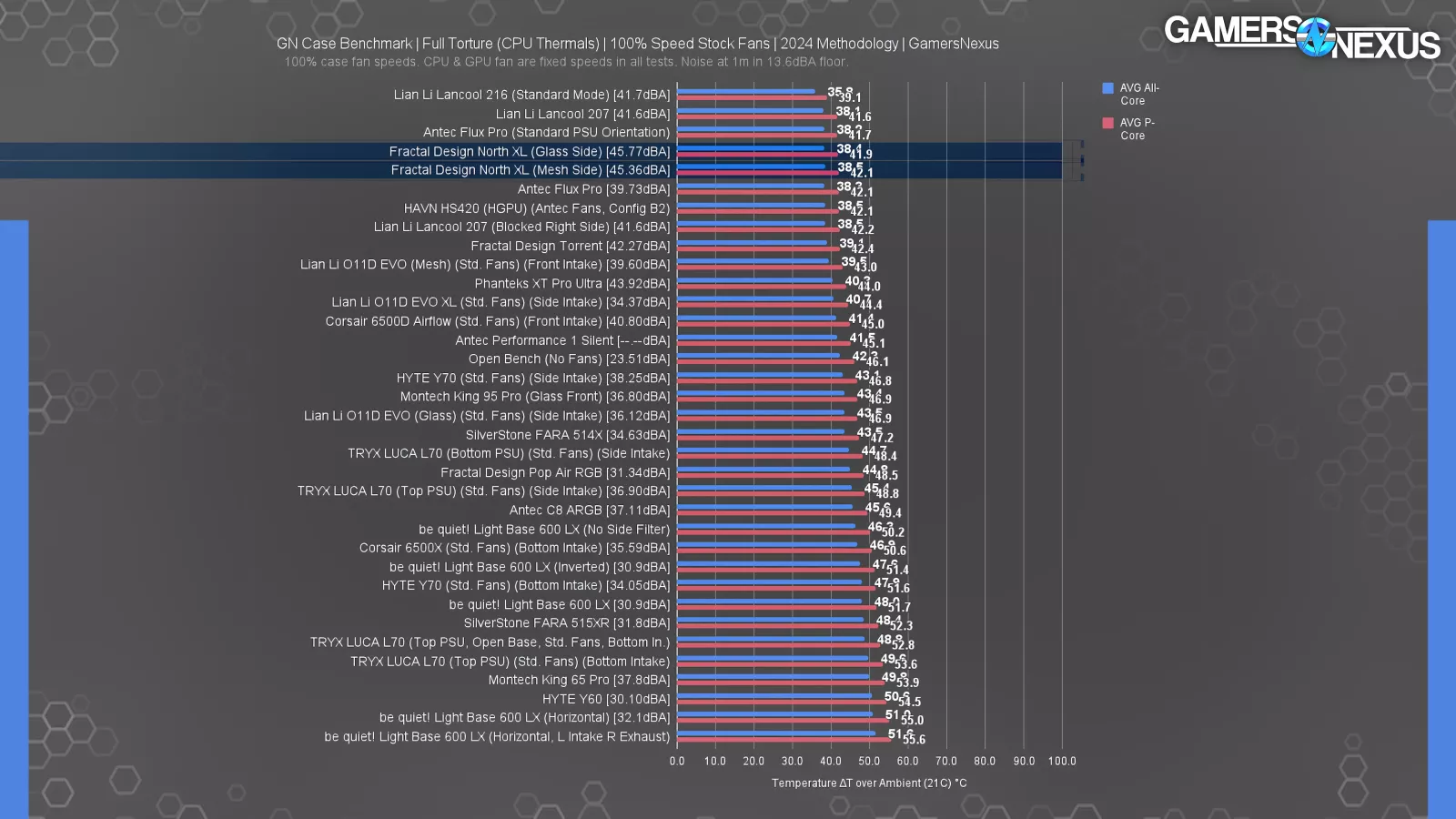
And finally, even in cooling performance, the North XL is routinely at the top of the charts for thermal benchmarks. It’s not the best -- that’ll go to two other cases this year -- but it’s regularly at the top, and that plus all the other features, plus the value, get the North cases the Best Overall award.
Best Mechanical Design: HAVN HS 420
Runner-Up: SilverStone Alta D1
The next award is for the Best Mechanical Design, which we give to cases that may not have won in other categories, but truly innovated for the physical and mechanical elements of the case.
This year, it goes to newcomer HAVN and their HS 420. The HS 420 (read our review) exhibits a mastery of mechanical features.
The HS 420 doesn't include fans, it's not fully airflow-focused, and it isn't cheap at $200 for the horizontal GPU model. That makes it a tough fit for our price- and performance-focused award categories, but it needs to be recognized, because it's one of the most interesting and downright good cases that we've reviewed this year.
Mechanically, it’s excellent. The curved tempered glass panel is the most significant feature. The panel is installed by sliding it back and down into the case on plastic wheels, where it then comes to rest on the bottom edge of the chassis. It takes some getting used to, but it's a clever and secure way of getting the huge glass pane seated. It's also proven to be durable, surviving multiple build/unbuild cycles through the filming process without serious wear.
There was a lot of thought put into airflow, something we illustrated in animations. The HS 420 VGPU includes a curved glass deflector that's intended to direct incoming air around and into vertically-mounted GPUs. It was a clever idea and a fresh approach, which we appreciated, but it did not help performance in our test system. That’s also why we're specifically giving the award to the $200 base model, which is cheaper and sheds the hardware that didn’t do much.
Even with the base model, though, HAVN planned for an unusual airflow pattern with intake at the bottom of the rear panel and exhaust at the top of the same panel, and included 120mm plates on each mount that are isolated with rubber vibration damping. In fact, every fan tray is padded with rubber, including the side mount that doubles as drive storage. The drive storage alone is pretty cool. It creates a spine-like structure that can be removed for more fans.
The case's construction is clever and precise in areas like the tightly-spaced storage bays at the front and the rounded edges of the PSU shroud and motherboard tray. The simple GPU support that ships with the non-VGPU case variant is one of the sturdiest we've seen, cast from solid metal and braced against the PSU shroud. The cable channels are not only labeled, but color-coded in what is an excellent feature, as it helps new builders understand where to route cables.
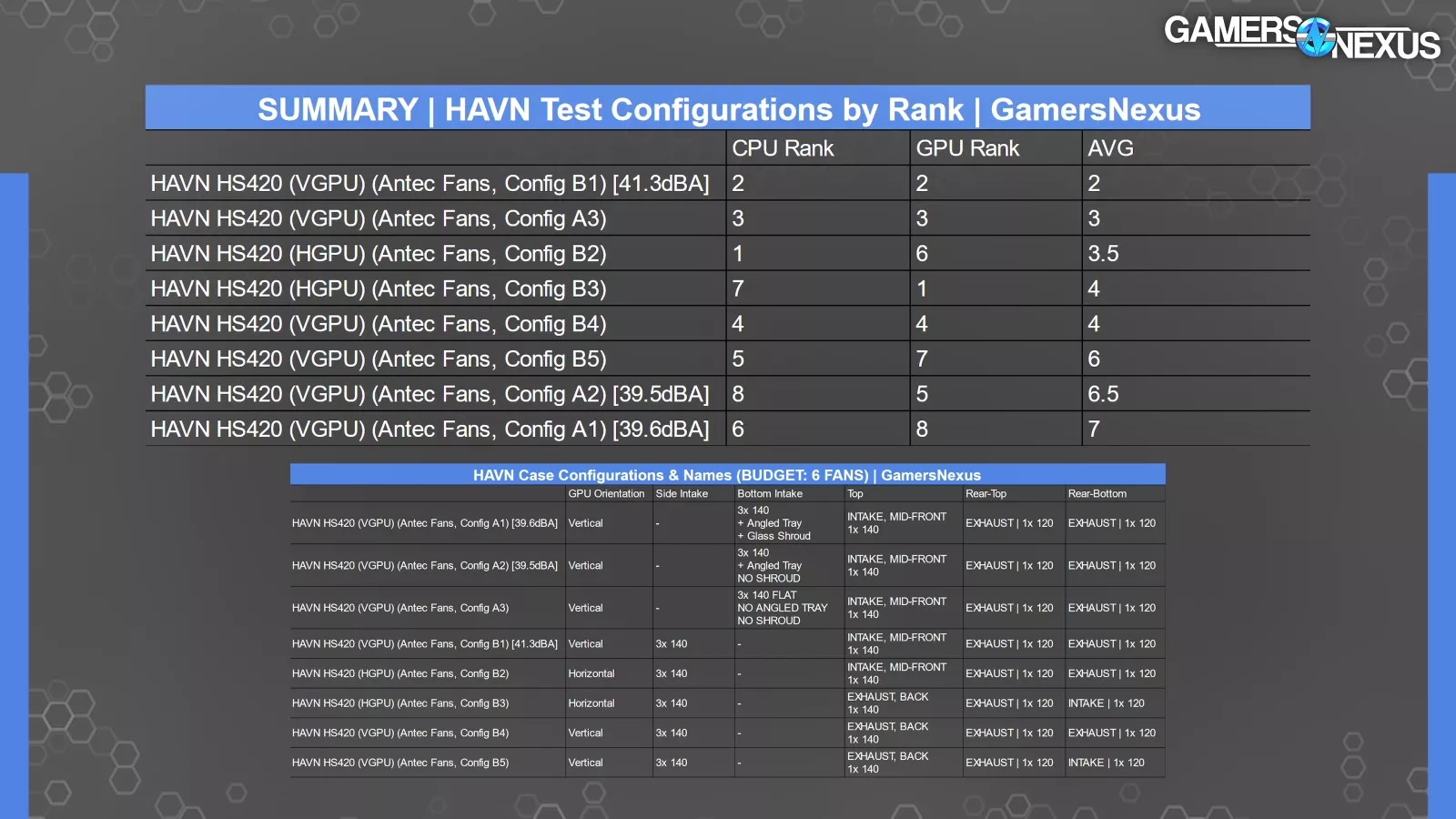
There are a ton of other small attention-to-detail elements, like the fact that HAVN matched the structural reinforcement for the panels to align with fan hubs, or the dead zone, rather than obstructing air intake. You can check our review for all the other details, including our full charts with 7 or 8 different fan configurations.
Before closing out this category, we want to give some recognition to SilverStone's ALTA D1. The ALTA D1 is an $800 halo product that's finally hit retail following our first encounter with it at Computex 2023 and again at Computex 2024. The price is ridiculous and very few people will buy the case, but the mechanical design hopefully inspires some more affordable cases: It has modular bays on rails everywhere, including 5.25" drive support, socketable radiators, a slide-out motherboard tray, SSI-EEB support, 11 expansion slots, large fan mounts, repositionable power supplies, and a true home server setup. It's beyond what we could recommend in a serious review if only for the price, but we may come up with a fun project for the ALTA D1 in the future and we respect its mechanical design.
Best Sub-$100 Case: Lian Li Lancool 207
Original review | Newegg | Amazon
We’ve had a category for years for the “Best Budget Case,” but the amount of quality cases in the $60 price point and under has really declined in recent years. Honestly, at or below $60 right now, we think used cases are typically a far better deal than something new at the same price.
So this category has become Best Sub-$100 case, which we’re giving to the Lian Li Lancool 207.
There were a lot of cases to consider for this category: When we were deciding this year's winners, although there are a lot of sub-$100 cases, there just aren’t any that defeat the Lian Li Lancool 207 (read our review). In the current market, $80 is dirt cheap for a name-brand case: there are cheaper cases available from companies like SAMA and DIYPC, but we're confident that none of them come close to the Lancool 207's frequently chart-topping thermal performance.
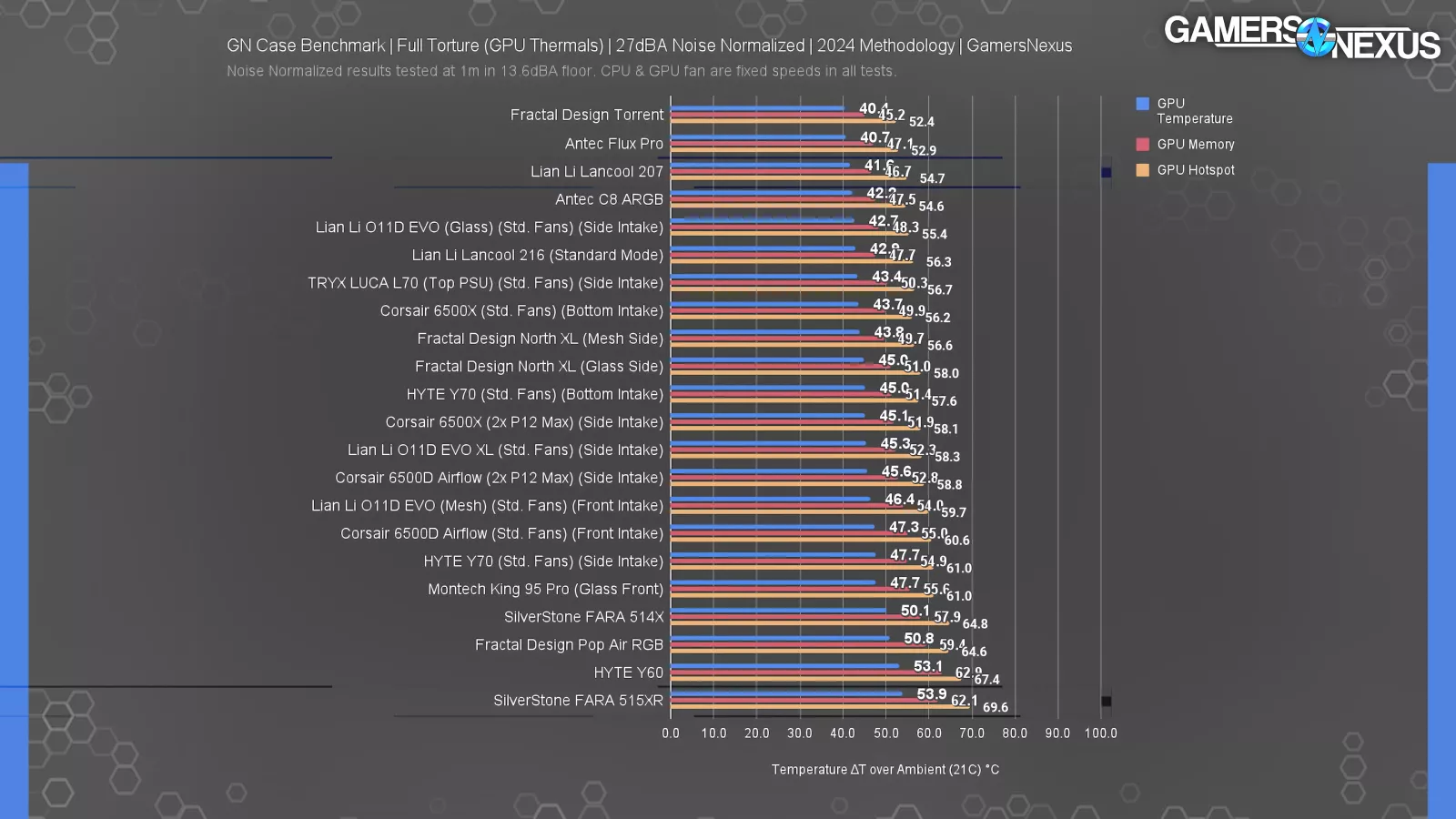
When we reviewed the SilverStone 515XR, we were aware that SilverStone had pulled out all the stops to offer a case with four fans at $68, but the performance gap between it and the 207 is massive. There’s also differences in quality-of-life features.
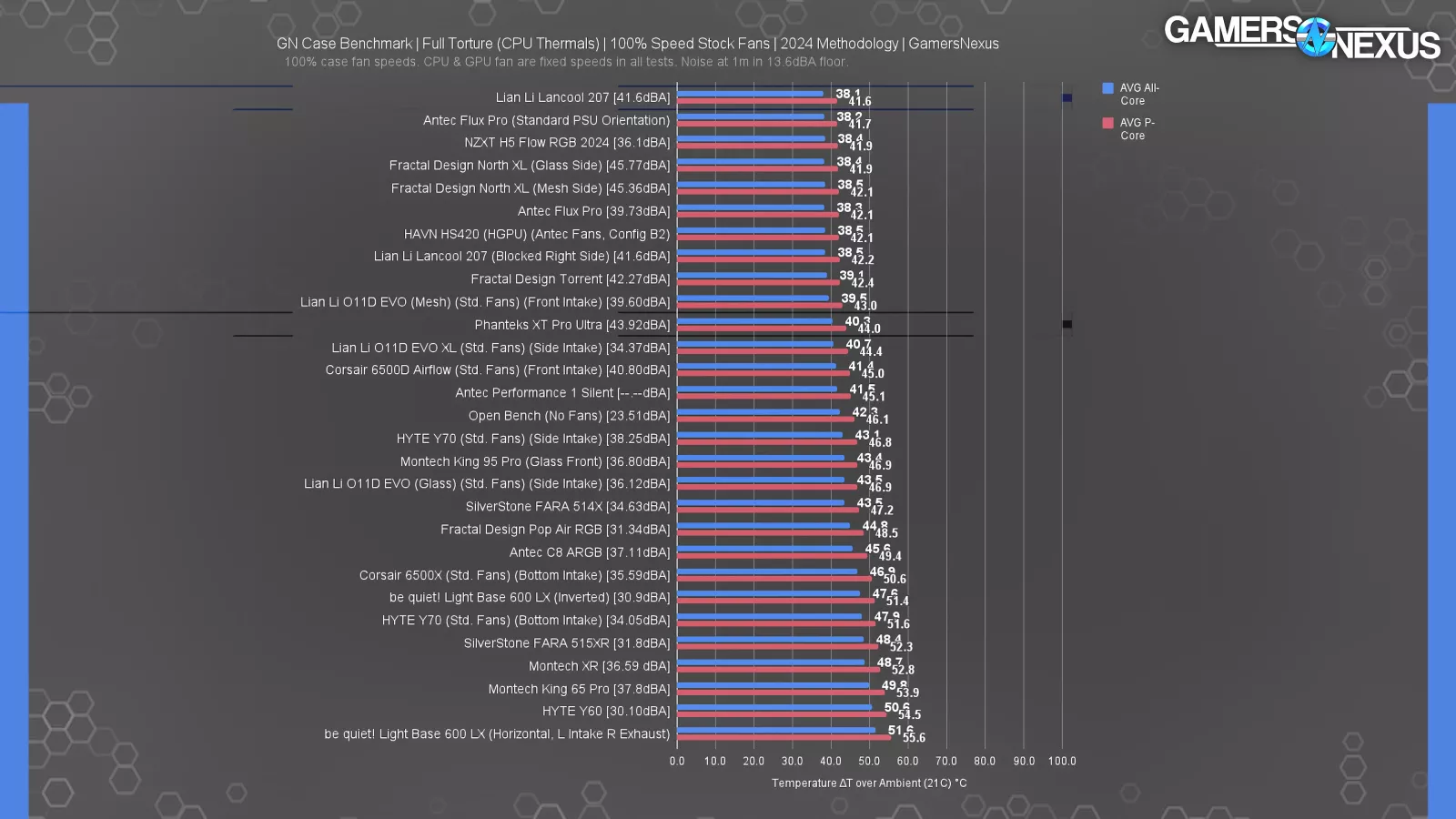
The same goes for the Phanteks XT Pro Ultra and the Montech XR. Both cases have been added to our charts recently. The Montech XR is supposed to be closer to $60, but has been out of stock lately and often more expensive when it is available.
The Lancool 207 is a solidly-built case with sturdy toolless panels, which is unusual at this price point. The most unusual aspect, though, is at the bottom of the case, where two 120mm intake fans are positioned directly underneath the GPU, while the PSU is mounted at the front with an extension cord. The shroud is ventilated on both sides as well as the rear in order to provide an airflow path for the bottom intake fans (although adding drives and cables to the case reduces that ventilation, but the ample intake through the rear counters this). In addition to the two bottom intake fans, 2x 140mm ARGB front intake fans are included with the case.
They may not sound significant individually, but the fact that the 207 has a full suite of basic quality of life features like reusable (and bridgeless) expansion slot covers, rubber grommets for cable cutouts, a USB Type-C port, ARGB fans, built-in velcro straps, and toolless panels is impressive in combination with its price and thermal performance. It's rare to see that full combo in a case, especially one which is also a top thermal performer. The fact that the 207 also wins our objective, numbers-based Best Thermals category is also part of why it lands here.
We have two big issues with the 207: first, the toolless side panel won't stay on without meticulous cable management. There's no way around this, but sticking to flat cables and minimizing the number of cables used will help. There's also room to improve PSU cooling in the case, as most PSUs will be oriented fan-side-down with barely any clearance above the table surface. The cable management is the one to be aware of. You can watch our review for more on that.
Still, at $80, Lian Li is being brutally competitive.
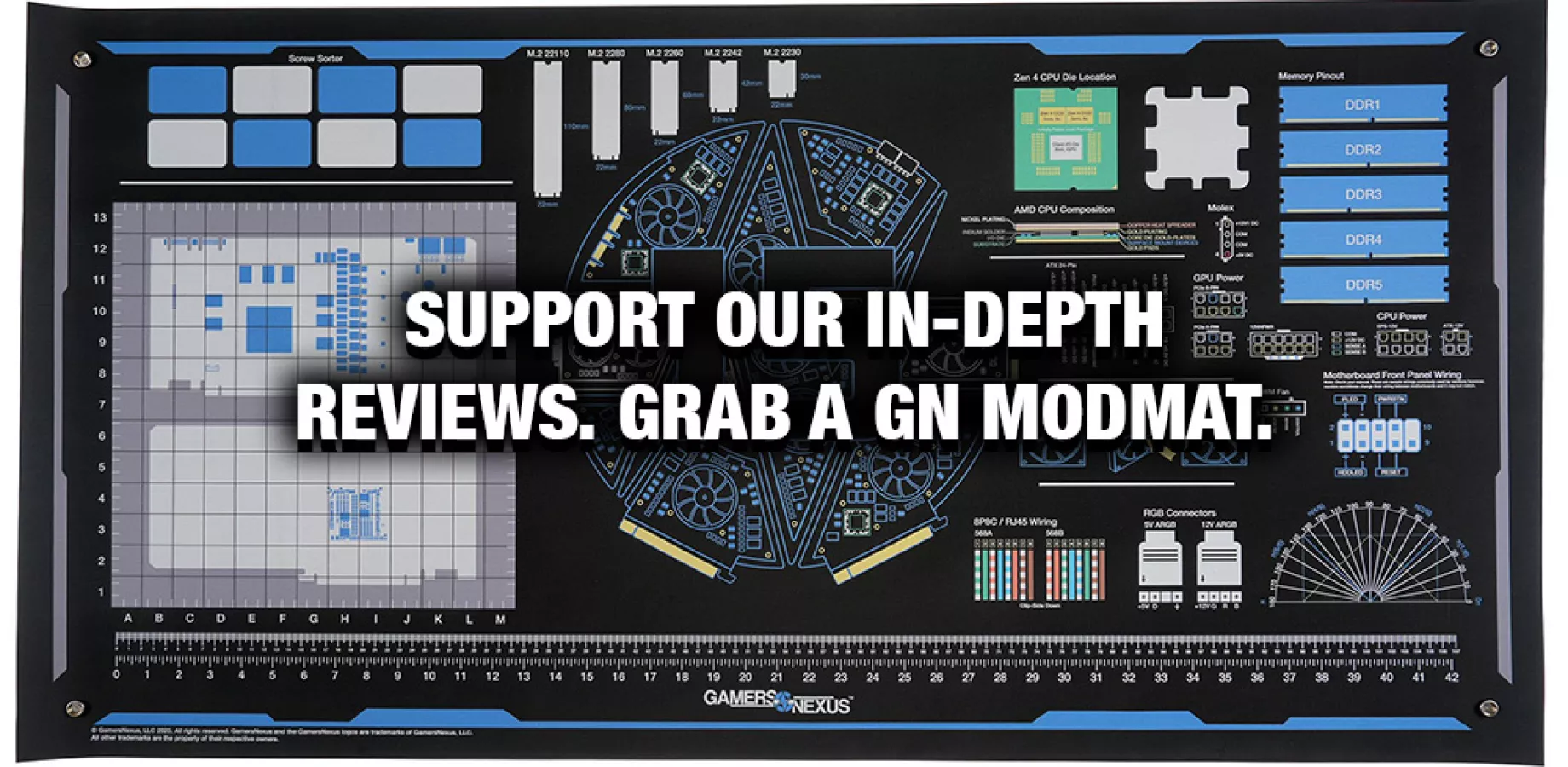
Best Mid-Range Case: Antec C8 ARGB
Original review | Newegg | Amazon
Next up is the award for the Best Mid-Range case. We’re looking for something that isn’t too wild or out there. We want relatively standard, but a good price-to-performance and overall build quality. We’re also looking for something a little bit better than the budget case. For this, we’re giving it to the Antec C8 ARGB.
Antec has had a strong year. It had 2 showings this year in our list we have today, but it was the Antec C8 that first signaled to us that the company was worth paying attention to again after a decade of fading into irrelevance.
MSRP is $150 for the ARGB variant with fans included, but it's been long enough since the case's June launch that we're beginning to see discounts. The fan-less variant is regularly available with promo codes around $100.
This mid-range award category gives us some room to consider quality of life and aesthetic features, not just raw performance-per-dollar, and the C8 is well-balanced in those categories.
The C8's dual chamber layout isn’t new, but Antec impressed us with the level of care that it put into details like molding text into the fan frames, color-matching all the components in the white SKU, and the accessory kit. Small touches, even ones that aren't functional, add up to create a product that feels worth the price. The C8's appearance reminds us of the clean designs that made Corsair's 4000D Airflow (and 5000D, and 7000D, et cetera) so appealing, but we much prefer Antec's case to the directly comparable Corsair 6500D Airflow.
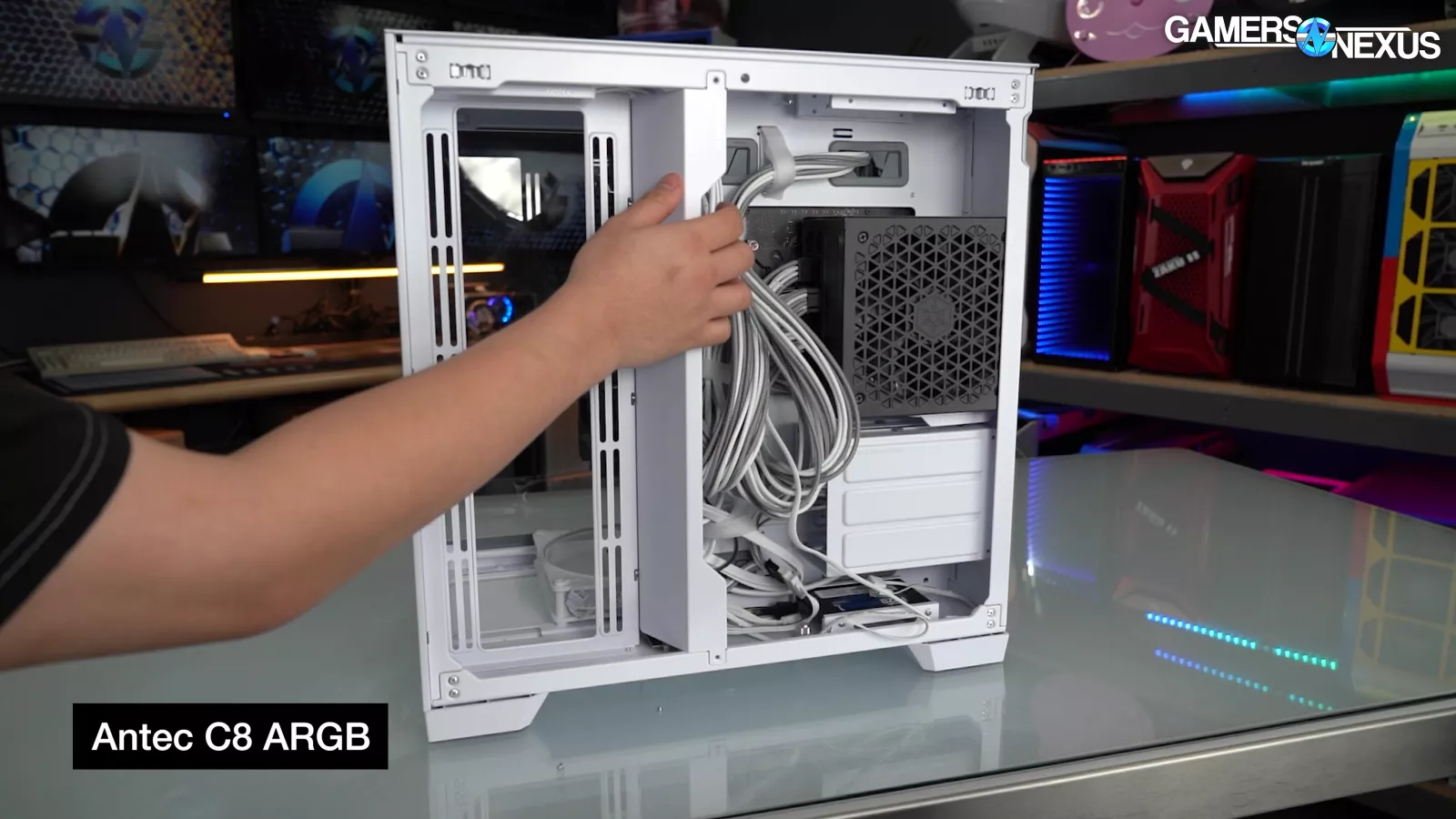
Functionally, the usual benefits of dual-chamber design apply: there's plenty of space to work with in both chambers, including storage space for cables and drives. Dual chamber cases frequently have cable channels so deep that it's difficult to reach tie points at the bottom and effectively bundle cables, but the C8's removable "air duct partition" solves that problem.
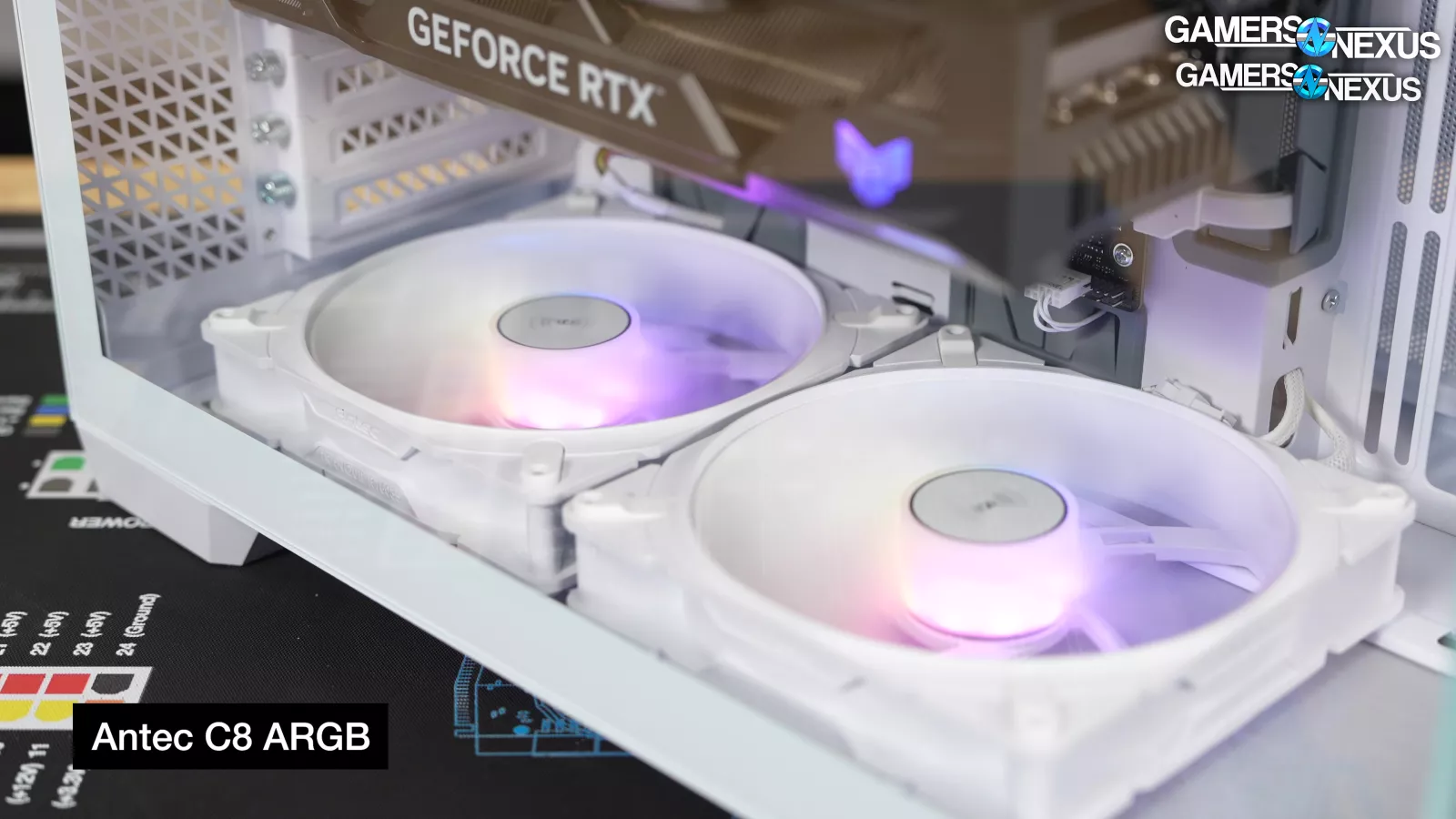
The centerpiece of the C8 ARGB (read our review) is the bottom fan mount, containing two unusual 160mm x 35mm reverse-blade intake fans (with an additional conventional 140mm exhaust fan at the rear of the case). These two 160mm fans are placed over a completely open vent, meaning that the removable bottom filter is the only obstruction to incoming air. Antec was aware enough to not obstruct this intake path, unlike many other companies.
This makes GPU cooling in the C8 ARGB excellent, although CPU cooling with our test setup was predictably lackluster due to the lack of front or side intake.
We prefer the C8 ARGB to the fanless base model, but the less expensive SKU may make more sense for liquid-cooled builds since the ARGB's 160mm stock fans won't match any normal radiator. The case can fit up to 3x 360mm radiators simultaneously, most easily in the side and bottom slots. For air cooled builds, the $20 upcharge for the ARGB variant with the extra fans is worth it. Many of the dual-chamber cases we've reviewed have followed in the footsteps of the O11 Dynamic by not including any stock fans, so having a choice is a welcome change.
Best Out-of-the-Box Case Thermals (Lian Li Lancool 207, Antec Flux Pro)
Lian Li Lancool 207 original review | Newegg | Amazon
Antec Flux Pro original review | Newegg | Amazon
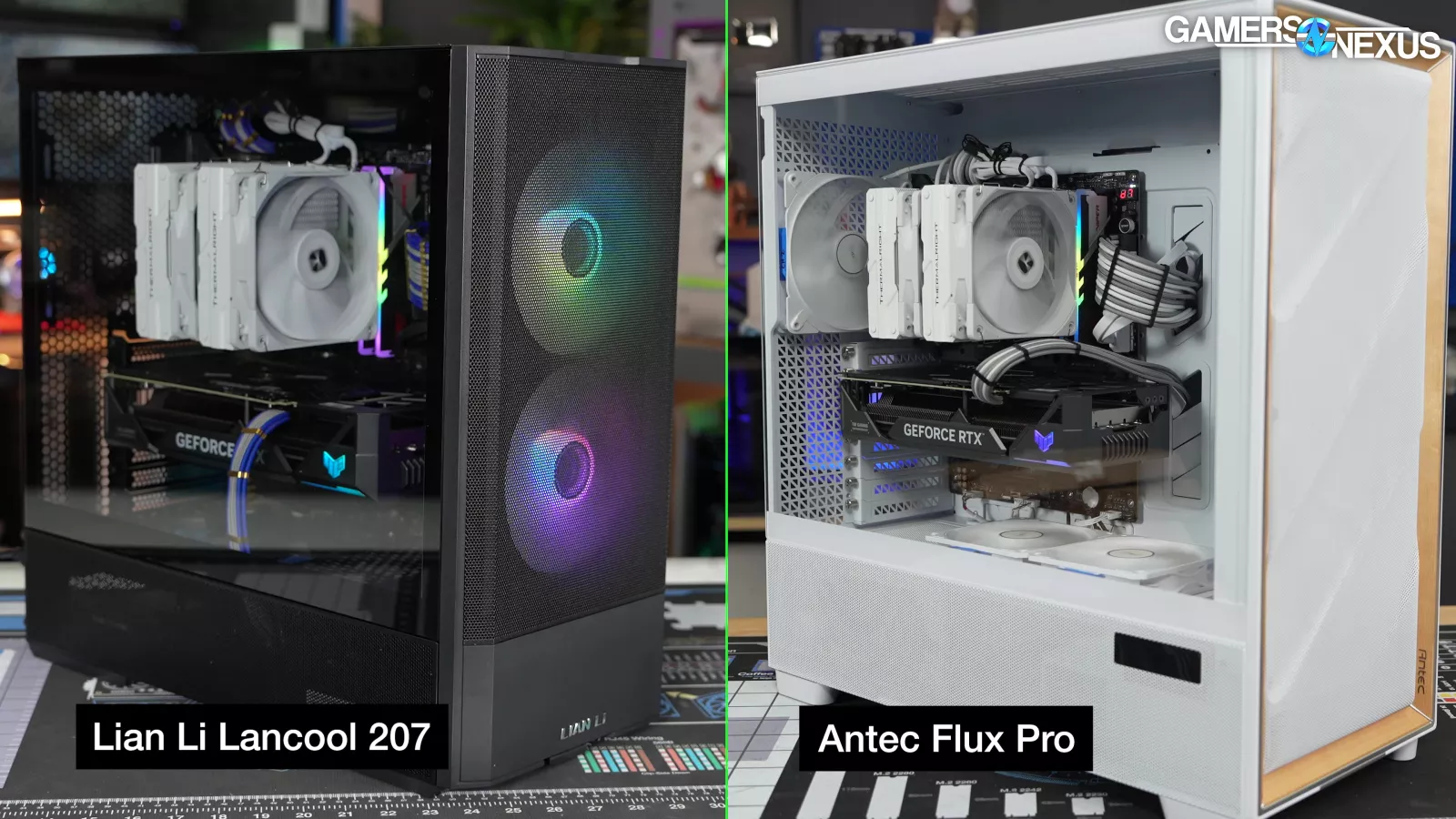
Our next two awards are for thermals. The next one is for Best Noise-Normalized Thermals, while this one is for Best Out-of-the-Box Thermals. The difference is that noise-normalized is focused on one category, whereas Best Thermals looks for the best performer in all tests we ran and at all fan speeds.
The raw all-fans-maxed stock performance is a tie between the Lian Li Lancool 207, represented in the sub $100 category, and Antec Flux Pro, which is represented in the next category. These cases have similar layouts, each with front intake fans behind a mesh panel and bottom intake fans mounted on top of a ventilated PSU shroud. Our test bench hardware uses air cooling with a flow-through GPU cooler and a CPU tower cooler, which we've chosen to be as broadly representative as possible and as controllable as possible. This hardware benefits from simple, direct airflow: cool air from the front for the CPU, cool air from the bottom for the GPU. These two cases are the ideal realization of that airflow pattern.
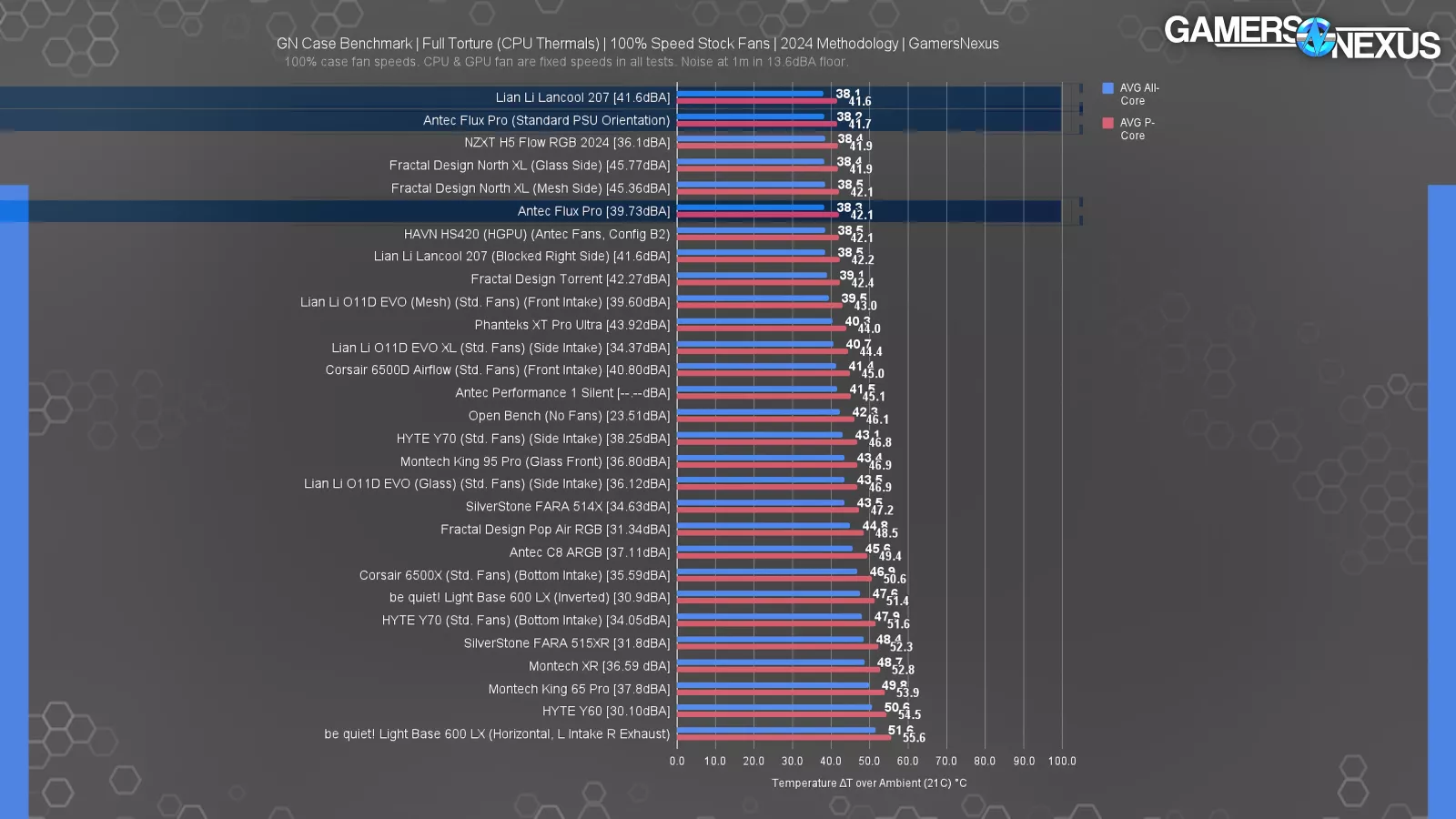
The Flux Pro and Lancool 207 both averaged 38 degrees Celsius above ambient all-core and 42 degrees on just the P-cores. Fractal's Torrent and North XL are both within one degree of this result, but the Flux Pro (read our review) and 207 pull slightly ahead in other categories.

Moving to GPU thermals, both the Flux Pro and the Lancool 207 averaged exactly 38.2 degrees above ambient, although the 207's memory temperature averaged slightly better at 41 degrees versus 43, while the Flux Pro's hotspot temperature was a little lower. The Flux Pro's stock configuration is set up to mount the PSU rotated 90 degrees in Antec's "iShift" mount, but we found that mounting the PSU in a more typical orientation with the plug at the rear of the case slightly lowered overall GPU temperatures for a best-case 37 degree delta above ambient.
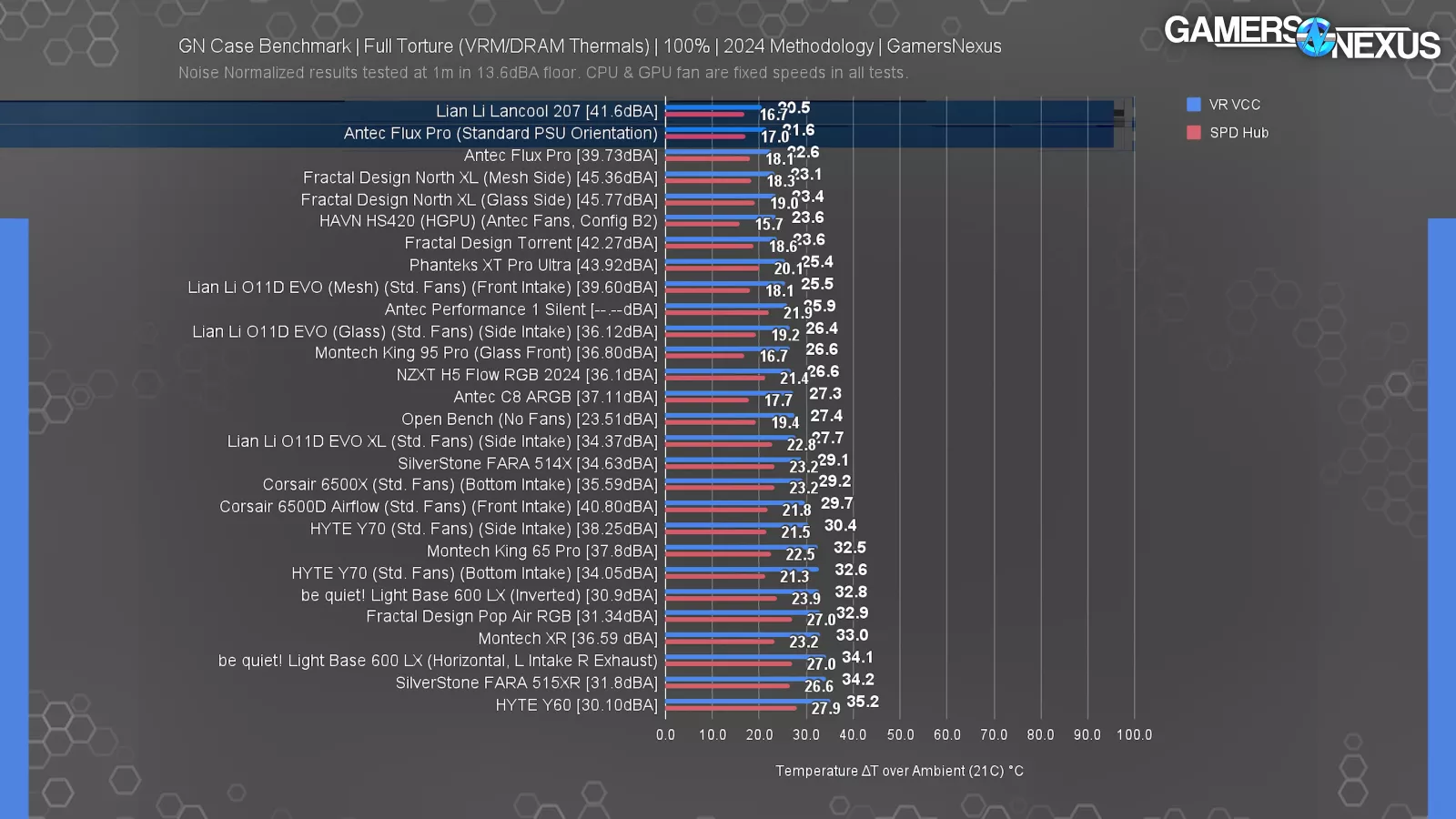
The 207, on the other hand, logged our best temperatures so far from the VRM and RAM sensors at 21 and 17 degrees above ambient respectively. These two cases are extremely close in performance, and we can't declare just one winner between the two of them.
Best Noise-Normalized Case Thermals: Antec Flux Pro
Original review | Newegg | Amazon
The next award is for Best Noise-Normalized Thermals. This is a pure performance-driven category, but it combines 2 metrics, which is acoustics and thermals. Fortunately, its winner is also just a good standard case to build in: The Antec Flux Pro.
Noise-normalized thermal tests are the most important performance benchmarks we run on cases. With the current iteration of our bench, we place the case on a table in our hemi-anechoic chamber with a mic pointed directly at the center of the front panel from one meter away. Then, we lower the speed of the case's stock fans in tandem until we hit our chosen threshold of 27 dBA SPL. This allows us to level the playing field so that the cases with the loudest fans don't automatically land at the top of every single chart by brute force. It creates a control.
The Flux Pro's front panel doesn't block much noise, but it's so well-ventilated that the three 140mm front intake fans don't need to work hard and don’t generate much noise to begin with. There isn’t much resistance and so they can spin slower, while the 2x 120mm shroud-top fans assist GPU cooling. The Flux Pro's PSU shroud is open on all sides, including the bottom, which maximizes airflow without directing significantly more noise towards our mic.
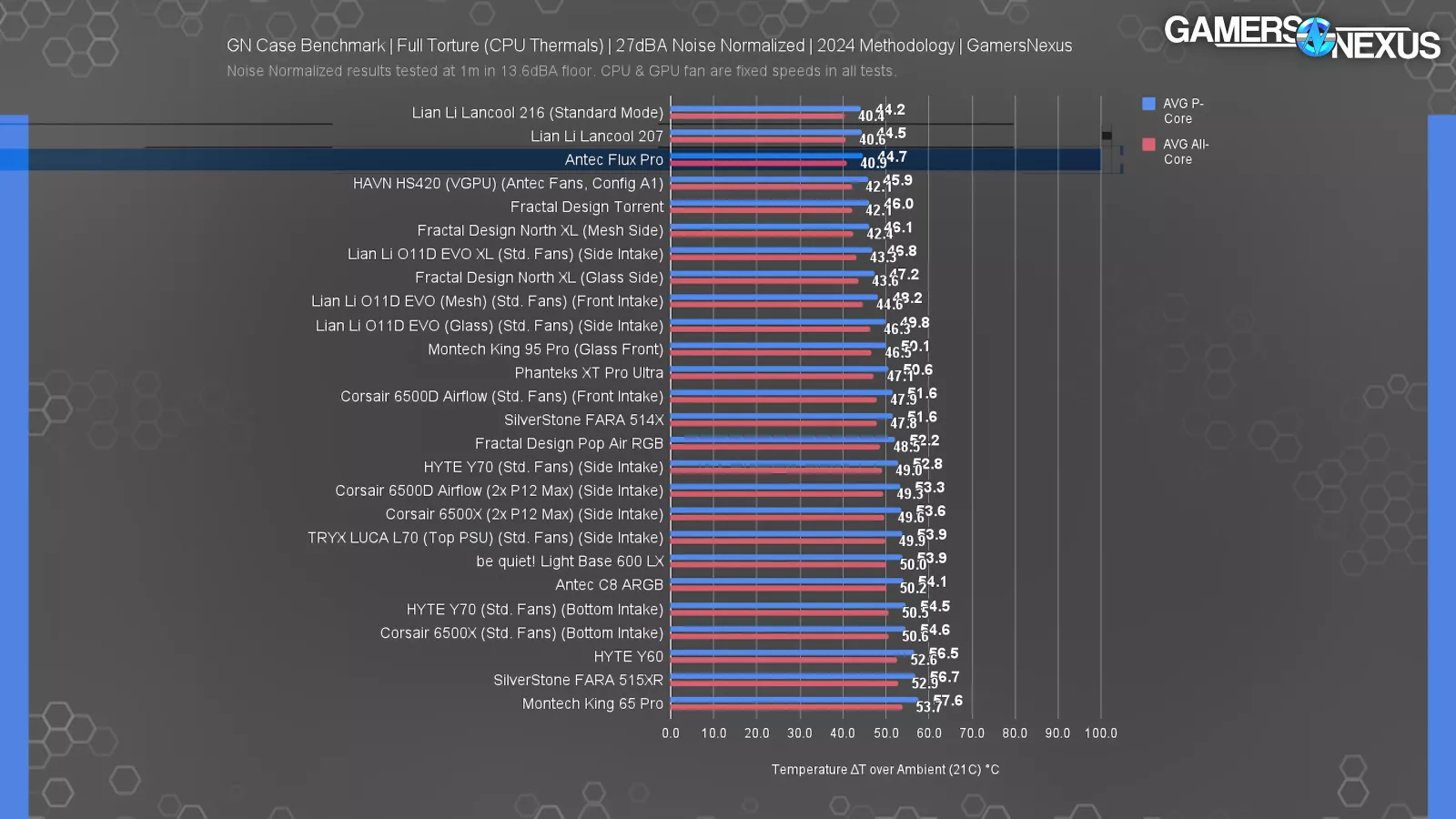
CPU thermals are tied at the top of the chart with the Lancool 207 at 41 degrees Celsius above ambient all-core and 45 degrees on just the P-cores. Some of our other high-performing cases like the North XL and Torrent come close, and the Lian Li Lancool 216 (watch our review) is tied in this one, but the Flux Pro is the best overall when taking all results into account.
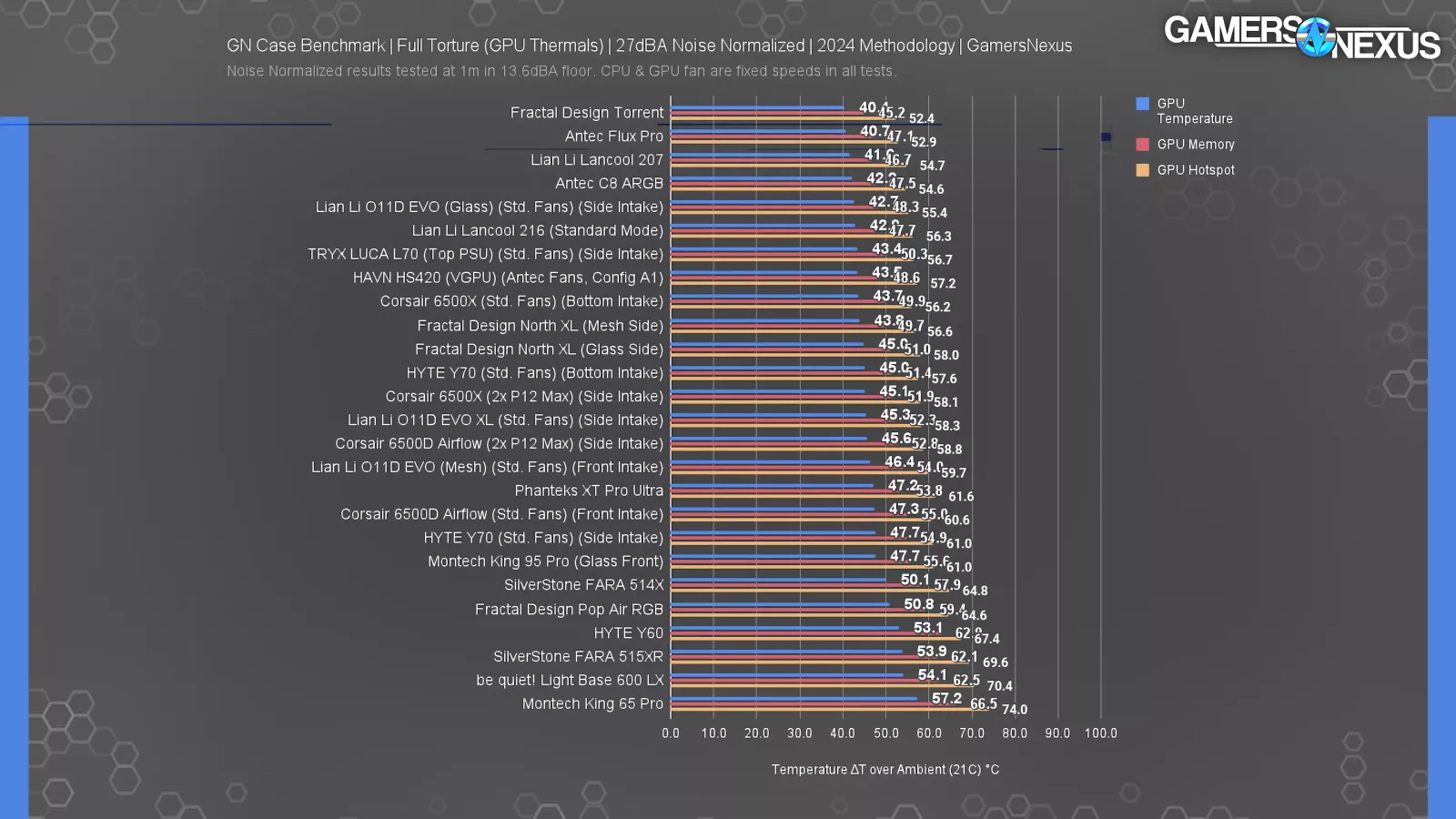
In the noise-normalized GPU thermal test, it outperforms the Lancool 207 and ties the Torrent (watch our review) for GPU die temperature.
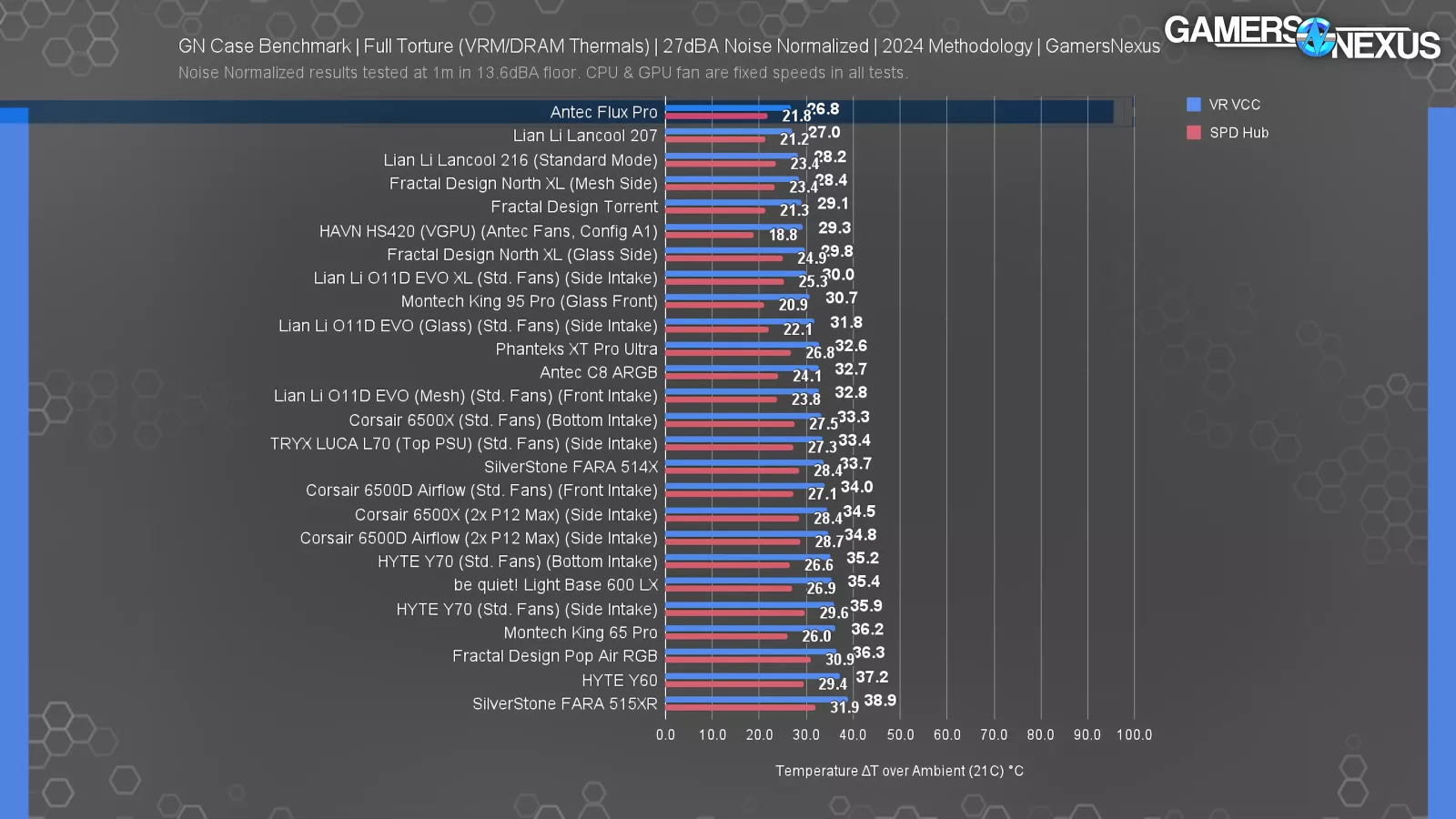
In VRM and DDR5 memory thermals, the Flux Pro is the chart leader by a technicality, but again is functionally tied with the 207. Both the Flux Pro and 207 offer excellent cooling at the noise levels, but the Flux Pro technically takes more lead spots than the 207. But the 207 is well-represented already.
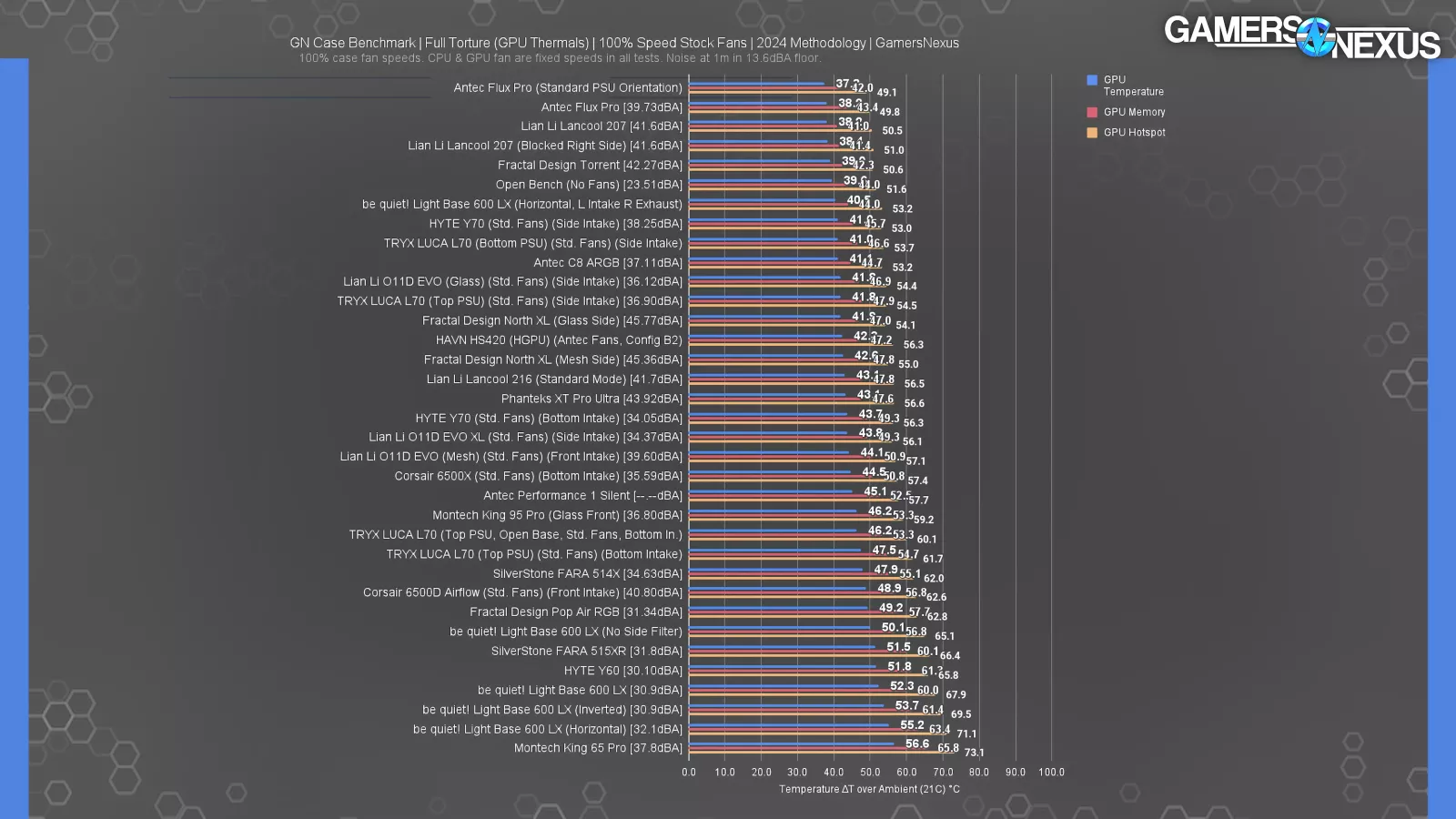
We also know from our full speed results that it's possible that the Flux Pro could perform even better with its PSU mounted in the typical orientation rather than the stock rotated iShift mount.
The Flux Pro was an excellent return to form for Antec and offers a standard layout case for strong fundamentals. It is deserving of the Noise-Normalized victory while still offering the basics and foundation required for a good standard PC build in a non dual chamber case.
Most Innovative Case: Meshless AIO
Honorable Mention: InWin Dubili
Our Most Innovative Case award goes to the case that has the newest and most different design, even if it doesn't work perfectly, because innovation pushes this industry forward. This goes to the Meshless AIO Mini-ITX case.
Despite its generic, boxy exterior, the Meshless AIO (read our review) is one of the most innovative cases we've ever reviewed.
The Meshless AIO (now apparently listed with a formal launch name as the “MD280”) is built around a cylindrical crossflow fan, like a smaller version of the fan in a mini-split wall unit. We found the case design curious enough that we built this 3D animation to help explain and educate on how these work. The basics are that the crossflow fan shoots hot air out at the upper edge of the side panel, and theoretically pulls cool air in everywhere else: towards the GPU fans from the side panel, through the radiator, and over the motherboard and PSU from a tiny strip of ventilation along the bottom edge of the case. In practice, we found that the GPU was better cooled by taping a couple of normal 120mm case fans to the top of the case, but these had other downsides in other tests.
Thermal performance was at least adequate, and considering there was a single fan handling everything, overall impressive for what was done on a single fan that you might not normally find in a PC case. We were concerned about the PSU's lack of direct access to cool air, but otherwise, everything was getting fed air.
There are some other creative aspects to the MD280’s construction outside of the fan: the main portion of the case is a single piece of extruded aluminum, and other elements like the fan, radiator, glass side panel, and handle slide into the open ends. This is an excellent and compact design that works well. Another cool feature is the lever that’s accessible from the rear of the case, working to slide the PCIe riser cable up and down. It presses the slot into place to improve accessibility. It's an ambitious and creative project, especially since Meshless Design informed us that it's an independent outfit driven by one man: Hank Lin. This is the work of an engineer who turned an idea into an actual product with overall good execution.
We need to issue a buyer beware warning here: it looks like the Meshless AIO's price has been increased to at least $450, a big jump from what we were expecting, and we have no way of vouching for the company's ability to deliver on pre-orders. Unfortunately, that price kills the case for us, as there are simply too many other good competitors in ITX at half the price.
But it still gets an innovation award.
We have an Honorable Mention for this category as well: InWin’s Dubili ATX case. Dubili is an anagram of iBuild, an abbreviation for InWin's DIY "iBuild iShare" brand, as well as an abbreviation of "Do Believe." The instruction manual comes in the form of a dedicated single-purpose app with animated 3D renders, which is absolutely required if you order the flat-packed build-it-yourself DIY edition. We like the Dubili for its unique look, high-quality build and materials, and the modularity of the paneling. That it flat packs is also a cool aspect to the case, creating a fuller DIY experience. The color scheme is also different: A sharp silver-and-orange or a Noctua-style cream-and-brown with gold screws. The case doesn’t win over the Meshless AIO, but we like it enough that it deserves a mention.

Biggest Disappointment Case: Corsair 6500 Series
Original review | Newegg | Amazon
The Biggest Disappointment is up next. There are a lot of options to consider for this category: Between the GameMax HYPE (read our review), the Tryx LUCA L70, the Corsair 6500, and more. We had our work cut out for us.
The award goes to Corsair for the 6500 series of cases. Although Tryx’s case was a mess, it ultimately doesn’t have the same expectations attached to it as Corsair. To be a disappointment requires some level of expectation.
Corsair wins the award handily: Broadly speaking, Corsair has continued to disappoint ever since it took on huge investment. Like the assets of its corporate overlords, its disappointments are diversified: They bought Origin, which sold us a $6,600 computer that had the CPU underclocked by 1GHz out of the box; they made the A500 air cooler, which had heatpipes so unlevel they sheared our pressure paper. But the company also shipped some excellent products in recent years, and those came from its case division.
The Corsair 4000D (watch our review) was commonly $80 and one of the best sub-$100 cases available for a while. The 5000D (watch our review) was an OK follow-up to that, scaling-up the useful features to a larger size. Corsair was finally doing well with cases again, following a long drought of basically nothing.
But then it launched the 6500 (read our review) series this year, attempting to jump onto a hype train that had already left the station, and doing so with substandard build quality. The Corsair 6500D and 6500X were $200 without fans, both featuring superbly bendy panels without any reinforcement -- which we found totally unacceptable for a $200 so-called “Premium” case. There were lots of plastics, misaligned panels, and build quality issues.
The 6500D had a number of slapped-on features that didn’t work together. They tried to accommodate back-connect motherboards, but doing so required punching what seems like a completely random hole into a drive cage, which was then entirely left out of the original manual. If you used one of Corsair’s own SHIFT power supplies, you’d have to remove the drive cages completely and move to only NVMe drives. We found build quality issues, design oversight, and a high price to be not only disqualifying from any considerations on our lists, but also deserving of the Biggest Disappointment after falling from the grace of the 4000D.
Corsair is a big company and has the resources to fix this, but it’s a matter of whether they choose to.
Since our critical review, Corsair has dropped the price of the 6500D closer to $150. It’s still worse than an Antec C8 ARGB, which often costs the same or less.
